Walmart Central America Director of Supply Chain & Manufacturing Strategy and Growth discusses their customerdriven, global supply chain approach


also in this edition

Do you work with a disruptive and innovative company that’s going places?
We want to hear from you.
Tell us all about the startup or SME by emailing enquiries@ithink.media and we’ll consider them for inclusion in an exciting project we have lined up in 2024.
Subscribe and keep your eyes peeled. More to come soon…
FROM THE EDITOR
Welcome to the April 2024 edition of CHAIN Magazine!
Spring is in the air here at the iThink Media head office – the longer, lighter, warmer days are lifting spirits all around. We have a jam-packed line-up this month with six exclusive interviews for you to dive into.

For our cover interview this month, I chat with Francis De Pass, Director of Supply Chain & Manufacturing Strategy and Growth at Walmart Central America about the company’s international supply chain strategy and approach to sustainability. Francis describes how the end goal is to help customers save money and live better, while simultaneously striving for continuous improvement as a business (p6).
Dimitri Fleitman, Head of Supply Chain at Dole Foods of Canada joins me to discuss embedding new technology and sustainability into the company’s global supply chain. We dive into the ‘Farm to Shelf’ supply chain strategy at Dole Foods, exploring the company’s approach to distributing goods and cultivating partnerships along the way (p24).
I speak to senior executives from the SAP Digital Supply Chain organisation in the Middle and Eastern Europe (MEE) region to explore the empowering and energising potential of digital transformation, the cloud and fully automated manufacturing. My conversation with Dr. Johannes Tulusan, Chief GTM & Customer Advisory Officer, Digital Supply Chain (MEE); Ralf Lehmann, Vice President, Global Head of Industry 4.0; and Dominik Metzger, Global Head of Software Engineering – Digital Supply Chain also offers readers a sneak peek of the ground-breaking technology SAP will be showcasing later this month at HANNOVER MESSE 2024 (p38).
I sit down with Simon Bullimore, Head of Group Procurement at Norse Group, the largest Local Authority Trading Company (LATCO) in the UK, about the company’s organisational approach to public sector procurement and striving to improve people’s lives while generating ethical, sustainable profit (p62).
Jeff Monroe, Director of Supply Chain at KPS Global®, North America’s largest manufacturer of walk-in coolers and freezers, tells me all about the company’s recent transformation and growth – driven by supply chain innovation and sustainability strategy (p80).
Jaime Paiva, Head of Procurement and Vendor Management EMEA, and Chris Minter, Sustainable Sourcing Lead of Zurich Insurance Group join me to describe the tech and strategy behind the company’s sustainable approach to procurement. Jaime and Chris offer rich insights into Zurich Insurance Group’s purpose to ‘create a brighter future together’ (p106).
Our features this month cover the global startups transforming concrete production in the construction industry (p70) and wielding technology to predict disruptions and forge a more efficient international supply chain (p94).
We are thrilled to welcome Tiffany MacKinnon, Head of Global Supply Chain Services at HCL Technologies, as the guest in our new recurring feature In the company of… (p128).
We hope you enjoy our latest edition. As always, if you would like to be considered as an interviewee or if you have a story for us to include, please do get in touch.
3
+44 (0) 203 890 1189 enquiries@ithink.media d.harris@ithink.media t.barnes@ithink.media editorial@ithink.media Editor Ben Craske Director Danielle Harris Director Tom Barnes design@ithink.media Senior Digital Designer Daniel May All rights reserved. Every effort is made to ensure the accuracy of material published in CHAIN Magazine. However, the company cannot accept responsibility for the claims made by advertisers or contributors, or inaccurate material supplied by advertisers. CHAIN magazine is a product of iThink Media Ltd. Company Registration Number: 10933897. Company Registered in England and Wales
APRIL 2024
4 APRIL 2024 38 Dr. Johannes Tulusan, Ralf Lehmann and Dominik Metzger from SAP on the future of cloud technologies and fully automated manufacturing 70 Meet the emerging companies leading the way for more sustainable concrete production 80 We speak with Jeff Monroe about the supply chain innovation driving KPS Global’s transformation and growth 94 How can new technologies build a more efficient supply chain? 6 Francis de Pass discusses Walmart’s customer-focused international supply chain strategy 24 Dimitri Fleitman on how Dole Foods of Canada is incorporating social responsibility and new technologies within the supply chain 62 Simon Bullimore explores Norse Group’s organisational approach to procurement in the UK public sector 106 Jaime Paiva and Chris Minter on Zurich Insurance Group’s sustainability aspirations 128 In the company of… Tiffany MacKinnon of HCL Technologies (HCLTech)


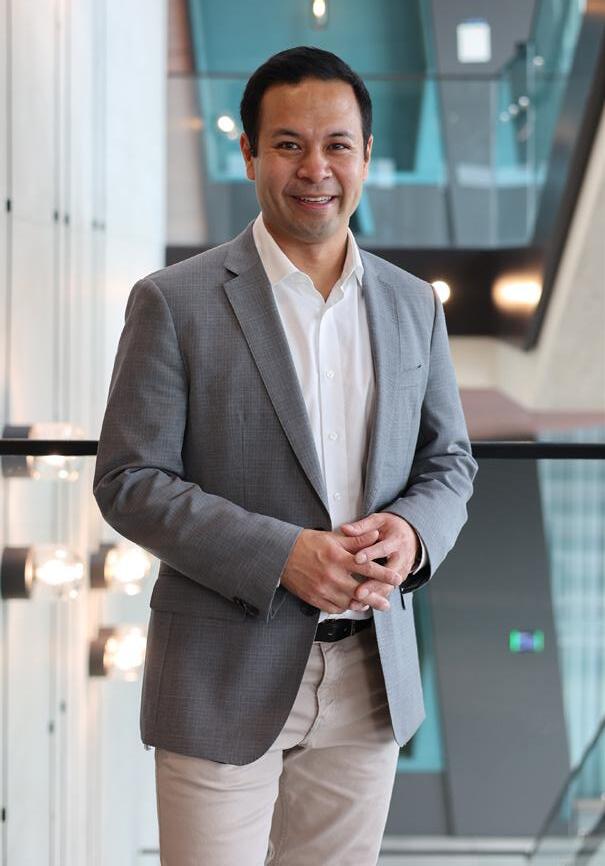
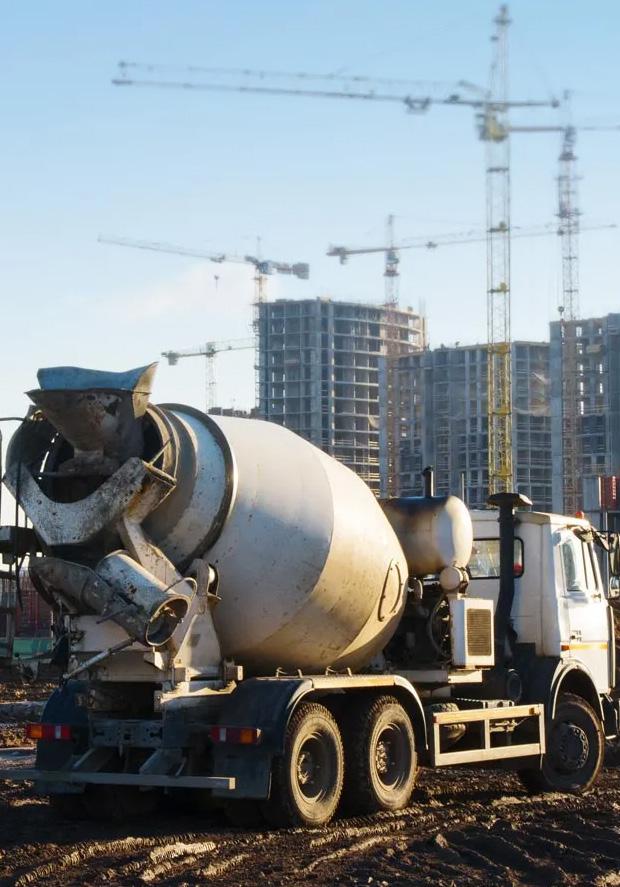


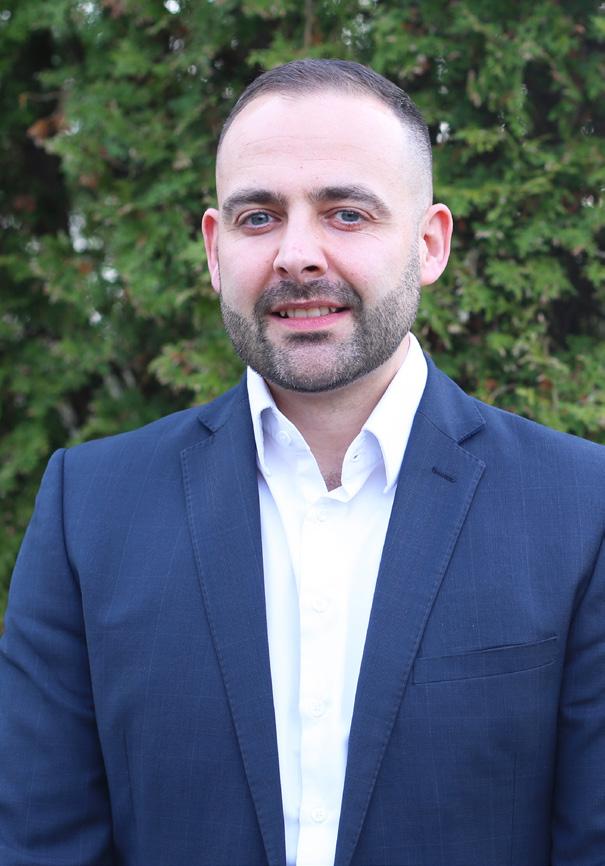
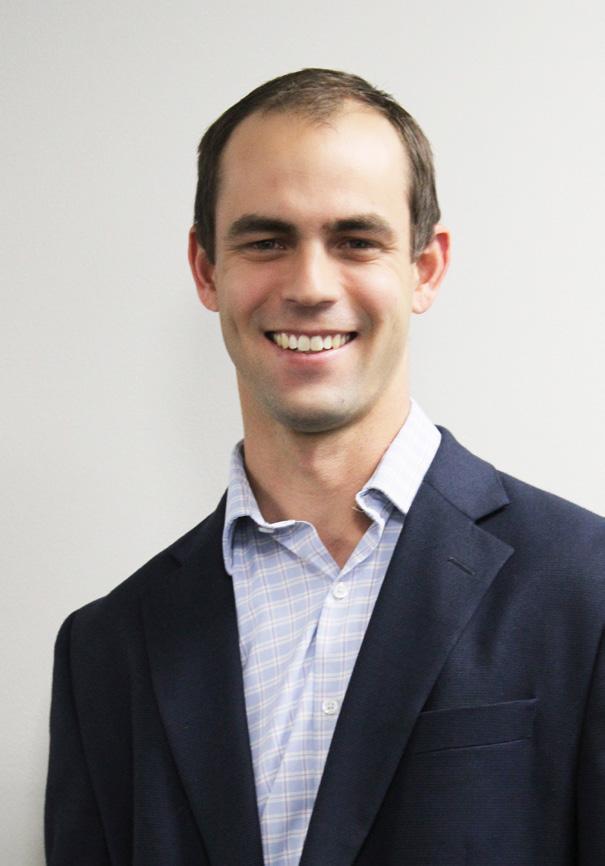

5 38 6 24
128 80
Chris Minter
Tiffany MacKinnon
Francis de Pass
94 70 62
Dr. Johannes Tulusan
Simon Bullimore
Dimitri Fleitman
106
Jeff Monroe

COVER STORY
7
Francis de Pass, Director of Supply Chain & Manufacturing Strategy and Growth of Walmart in Central America on the company’s customer-driven, international supply chain strategy.
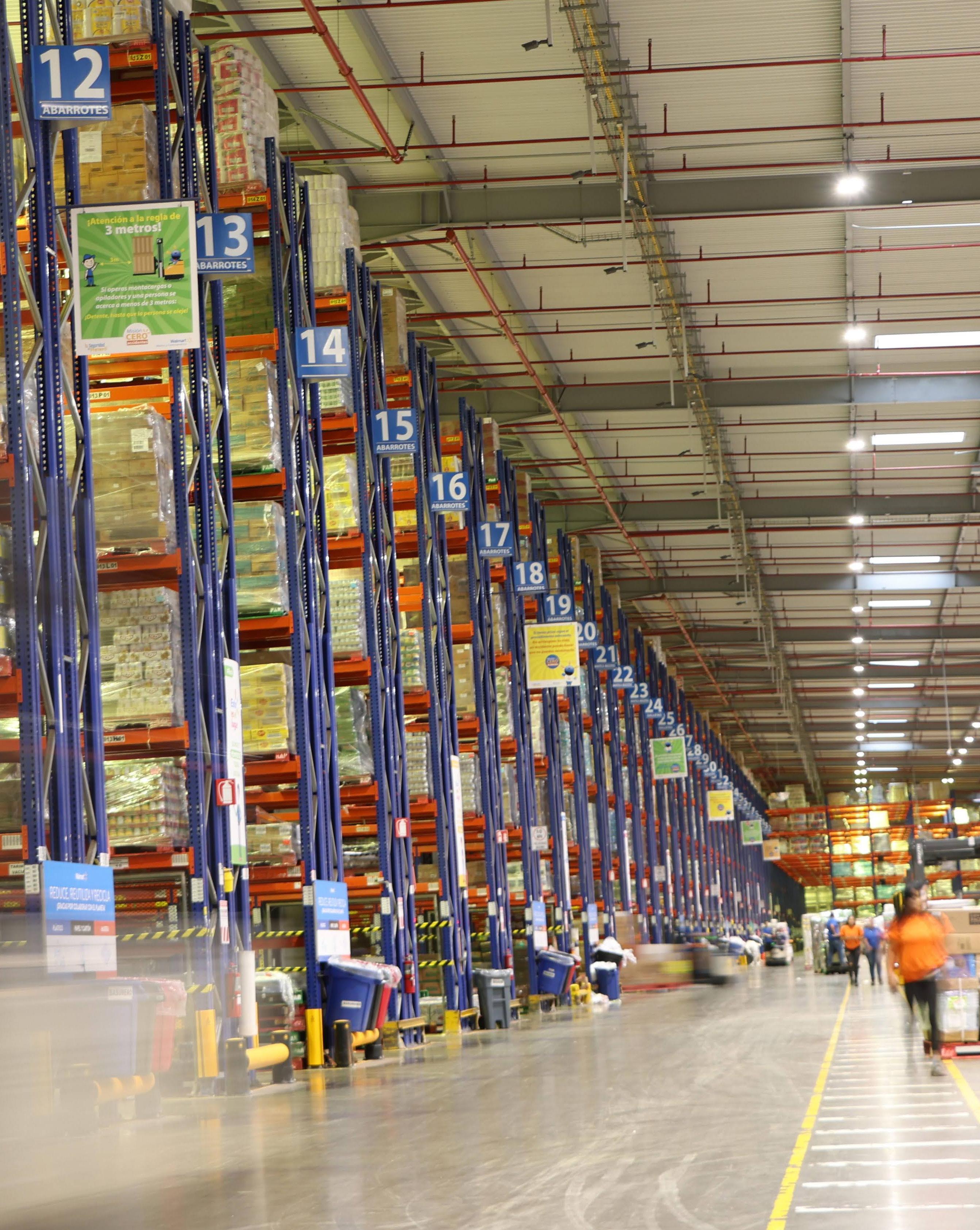
Bringing convenience and value to millions of customers in 19 countries outside the US, Walmart International helps people save money and live better lives.
ith more than 5,400 retail units and approximately 550,000 associates around the world, Walmart International’s strategy is to build and empower strong local businesses – while simultaneously generating growth for the company and its partners, positively impacting all stakeholders.
Speaking on behalf of the Central America division of Walmart International, Francis de Pass, Senior Director of Supply Chain & Manufacturing Strategy and Growth, joins us to discuss the company’s approach to supply chain and sustainability strategies, with the end goal of serving customers and striving for continuous improvement.
Francis has been with Walmart for nine years and he has witnessed exponential growth during his time at the company. Francis explains that Walmart’s presence in Central America emerged from an acquisition of a joint group of
retailers, manufacturing facilities and distribution centres in the region, including Costa Rica – where he is based.
“Walmart is a tech-powered, peopleled omni retailer, with close to 900 stores in Central America across five countries: Guatemala, Nicaragua, El Salvador, Honduras and Costa Rica,” says Francis. “We've got four formats of stores – our hypermarket, supermarkets, compact discount hypermarket and discount stores. Since the onset of the COVID-19 pandemic, we have embarked on an omnichannel transformation, expanding our retail presence to include both e-commerce and brickand-mortar stores.
“In Central America, we have inherited a multifaceted retail landscape, and my role entails overseeing the ‘support department’ for our pure operators. These operators encompass distribution centres, manufacturing operators
9
“Walmart is a techpowered, people-led omni retailer, with close to 900 stores in Central America across five countries: Guatemala, Nicaragua, El Salvador, Honduras and Costa Rica”
and transportation,” begins Francis. “I am responsible for leading the support departments, which include Maintenance, Environmental Health and Safety (EHS), Food Safety, Sustainability, Quality Assurance, Systems (including our proprietary warehouse management system (WMS) and SAP platform), Engineering, and Network Planning.
I am proud to work alongside a team of 600 talented associates who contribute to the success of our operations.”
Due to the complexity of the retail environment Walmart inherited when it entered Costa Rica and Central America, Francis describes the need for innovation in its end-toend supply chain strategy.
“To support the stores and the e-commerce part of the business, we have 13 distribution centres and 11 manufacturing plants,”

10

11
says Francis. “The manufacturing plants make high-quality private brand products from meat and packaged grains to bakery goods – you name it, and we make them in-house through our manufacturing division. These products are then sent to the distribution centres before being delivered to our stores – this arrangement forms the core of our supply chain.
“But in conjunction, Walmart has become an important importer of merchandise in Central America since some of the countries we operate have an above-average need for imported goods. In certain merchandise categories, the manufacturing capacity inside the countries is not enough to sustain the needs or the demands of the customers.
“As such our supply chain is incredibly complex: 900 stores divided into four banners, plus our 11 manufacturing plants and 13 distribution centres spread over five countries where, in some cases, bureaucratic and inefficient importing processes on borders prevent supplying from one source. Bringing these dynamics together into a smooth operation would not be possible without an end-to-end supply chain strategy.
“This is where things get really interesting for me and my colleagues in our division. What we do is ensure we are able to sustain and promote

Maxi
the company’s growth every day, every year. Walmart Central America has been growing intensively and still has huge ambitions going forward so we're having more merchandise flowing through our doors, distribution centres and transportation departments year on year.
“To achieve this flow, we need to maintain three things simultaneously, at any time. First, we must be customer-centric: every decision we make has to add value for our
12
Palí is one the banner names for the compact discount

by Walmart Central America customers. Second, we have to operate end to end. Supply chain has a whiplash characteristic to it: anything that you do upstream will flow downstream. Third, we must be data-driven. While there is something to be said for our professional gut instincts, ultimately all final decisions in our strategies must be informed, arising from clear evidence. This is how we make our supply chain an end-to-end value stream, not just a cost stream.”
Elaborating on the first dynamic of
operating in a customer-centric manner, Francis emphasises how Walmart is constantly striving to improve its value proposition for shoppers and that supply chain strategy is intrinsically connected to this endeavour.
“We have various types of customers with different shopping habits,” says Francis. “So when we think about the customer, we tailor targeted customer value propositions based on their demographics and shopping inclinations, taking into consideration how they engage with us in-store or online.
“Our mission at Walmart, set by our founder Sam Walton, is to save people time and money so they can live better. Whenever and wherever people shop with us, we want them to leave with an experience where they feel that they were given something back. This might be that they saved money, had a pleasant experience in-store and/or saved time by shopping with us online.
“We make sure our supply chain is a value-adding aspect of the business by establishing teams that cross the supply chain-storeonline relationship and thinking of our job as facilitating merchandise flow all the way to the hands of the customer: every part of the chain has to contribute in terms of speed, quality and cost. We find the friction points and work on reducing or
13
discount hypermarket operated
eliminating them as much as possible.
“So, based on our customer value propositions (CVPs), we make sure our supply chain strategy is set as a vehicle for delivering value. Any dollar that we add as cost is something that will have to be paid back by the customer, but on the other hand, any dollar saved can be passed onto the customers. Online, any time we can reduce through our supply chain
or operation is time we save for our customers. For me and my team in supply chain, it’s about considering our place in relation to the customer – how do we contribute to make sure they find what they want, when they want it, while saving them time or money to live better?”
Striving towards these goals and incorporating new solutions requires considered strategic planning and internal collaboration, according to Francis.
“When we think about our solutions we have to embrace continuous improvement in the present and boldness for the future”
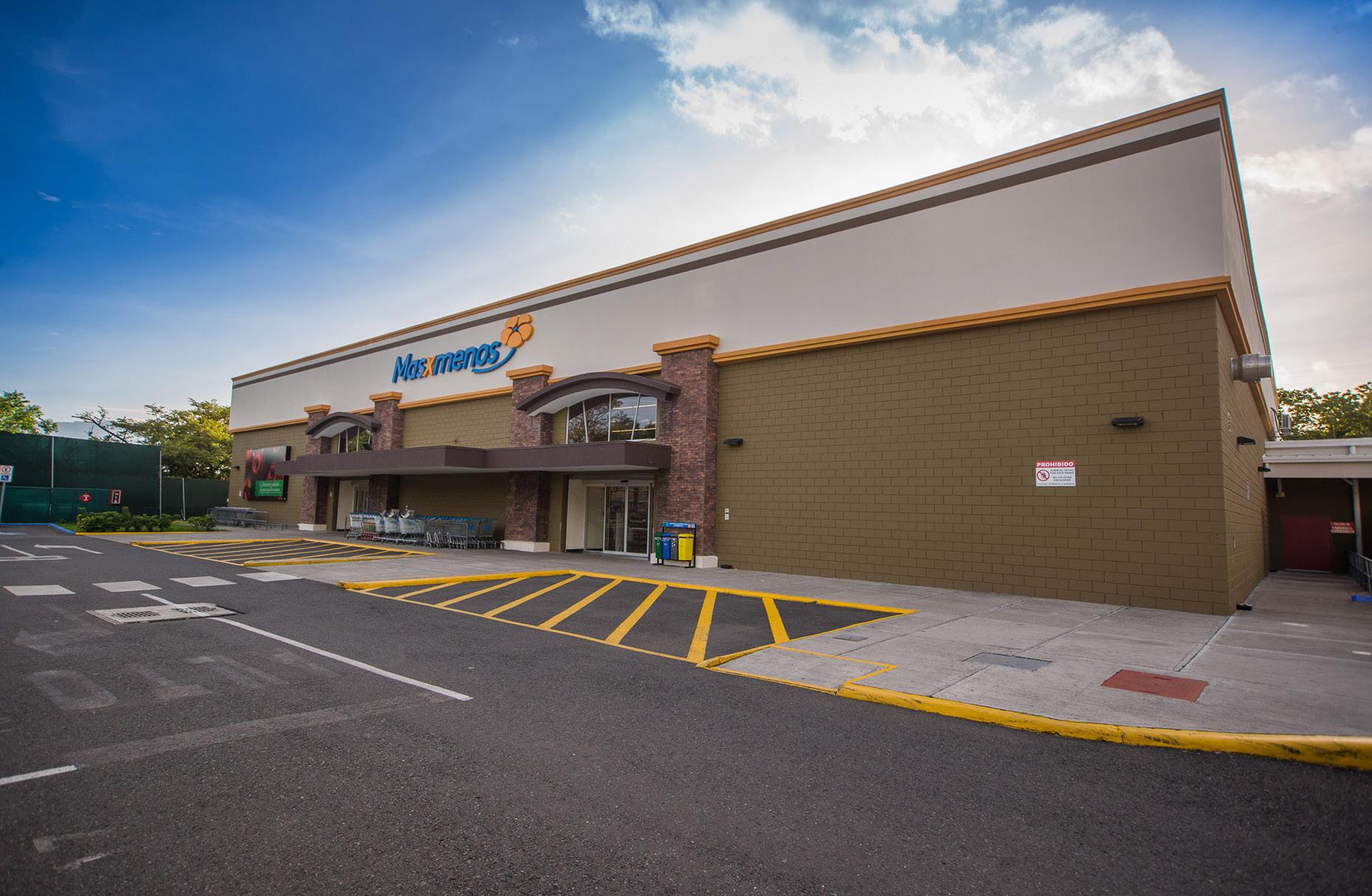
Masxmenos is one of the banner names for the supermarket format operated by Walmart Central America
“Powering the Future - Everywhere for Everyone.”

At EnerSys, we pursue perfection to deliver Power to innovate and inspire.
Power delivered simply, safely and sustainably.
Power that creates superior value for our customer.
We are proud to be EnerSys.
“When we think about our solutions we have to embrace continuous improvement in the present and boldness for the future,” says Francis. “In terms of the latter when it comes to planning ahead, we have a 10+ year horizon for planning in supply chain and manufacturing for Walmart Central America. Our end goal is to be working on our capabilities 10-12 years into the future, looking at which constraints will arise on storage, throughput, infrastructure, etc and designing the best long-term solution for it.”.
“So, this means that in my department of network planning, when we look at what's planned to happen for the next 10 to 12 years,
QuickPick® Order Picking Technology
Automate low-level order picking to:
● Increase operator productivity
● Promote safety
● Lessen operator fatigue
● Reduce damage to equipment, facility and materials
● Save seconds per pick

Scan today and learn how to revolutionize your order picking
we need to communicate and engage with colleagues in other business units. We have a very close relationship with our real estate department which oversees store growth and with our store operators to design our future supply chain considering the optimal frictionless exchange with stores. We also have a very close relationship with our omnichannel division, looking at what they have planned on that front for the coming years. We ask ourselves and our internal clients, ‘what role should supply chain play for these departments and others across the company?’ We keep our finger on the pulse, share everything, consider all the variables, anticipate developments and work backwards
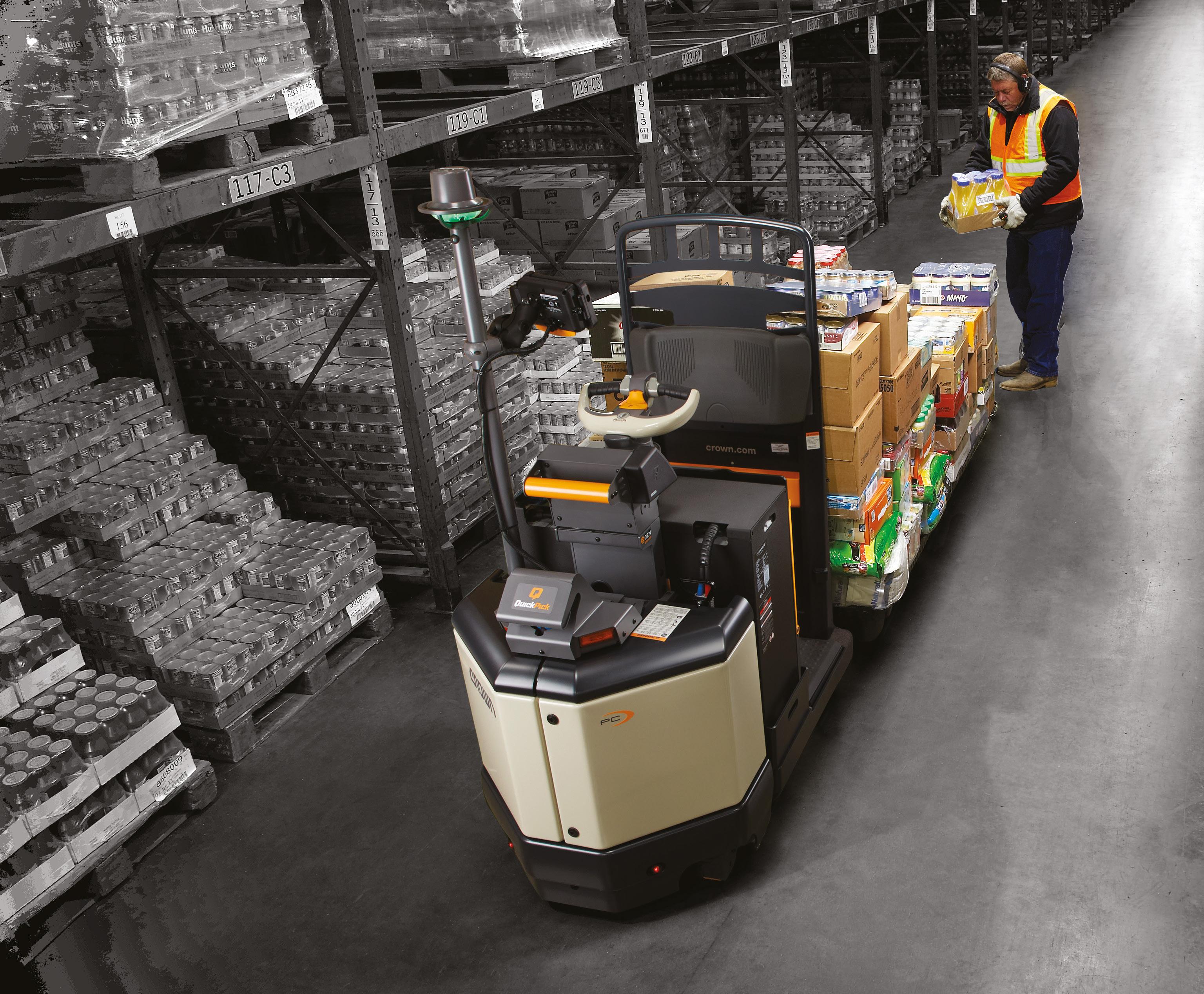
16
crown.com

to construct the supply chain of the future, today.”
Francis explains how he and his team channel concurrent strategic planning within the 10+ year approach, so they adjust their direction based on the successes or challenges in a given year.
“It's a negotiation, a give-and-take scenario,” summarises Francis. “We set our sights on the 10+ year horizon, but our concurrent planning approach compares last year’s forecasts against the current year’s performance – establishing accuracy levels that yield our decision-making agenda for the future. We believe it is best practice to set a 10-year horizon in supply chain. Going further than this horizon reduces your accuracy significantly, but at the same time it provides enough anticipation to react on time. It gives you opportunities to work with finance to secure the required CapEx and/or OpEx, consult with planning to put smart project timelines in place and ensure bold strategies in the future.
“When it comes to continuous improvement in the present, it’s a little bit different, as the year-onyear dynamics of the retail sector might include inflation, deflation or national holidays – you have to be dynamic and flexible.
of the month when most public or government organisations and private companies tend to pay wages. If those paydays land on a Friday, we know there's going to be a peak weekend, so we adjust accordingly. Striving for continuous improvement in the present certainly keeps us on our toes.”
So how does Walmart uphold quality whilst balancing adaptability and flexibility in the present with a bold vision for the future? Francis highlights five core components:
• 5S Methodology
• Kaizen
• Value Stream Mapping
• Integrating Business Intelligence and AI
• Internship Program
5S Methodology
“For instance, in Central America, we identify in a rolling forecast what we call Pay Days which is the day
“The Five S’s is a methodology developed in Japan, which have been translated to sort, set in order, shine/clean, standardise and sustain,” explains Francis. “We embrace the 5S Methodology to organise a productive work environment every day, executed by micro teams in all departments who look for ways to improve efficiency and effectiveness at a grassroots level. We trained more than 50 of these teams which are starting new projects and making progress in their parts of the business, which is an empowering and rewarding endeavour for those involved.”
17
“Walmart is publicly committed to its sustainability goals. The four major areas we focus on are climate, nature, waste and people. Our goals are based on these regenerative commitment pillars”
Kaizen
“We also have a Kaizen or continuous improvement methodology working culture within supply chain and manufacturing,” says Francis. “Kaizen is another business philosophy from Japan related to perpetual improvement of processes and operations which involves all employees.”
Value Stream Mapping
“Here we integrate engineering philosophy to consider the multitude of processes we wield and map them out to understand where we have non-value-added tasks,” says Francis. “We eliminate or mitigate these as much as possible, meaning that there's no costs or negatives associated with our processes which are not for the good of the merchandise or the good of the company.”
Business Intelligence and AI
“Recently, we started integrating business intelligence into the supply chain by incorporating and streamlining the vast amount of data that we operate with,” says Francis.
“At the moment, the data is spread across hundreds of databases and they’re not very well interlinked. We are making progress on this front because we have launched business intelligence units which have started gathering data, actively pursuing insights and trends we were missing out on before. In conjunction, we are exploring the potential of artificial intelligence. How can we organise our data better? How can we simplify complex tasks? We’re in the early days here, but it’s an exciting journey to be on.”
Internship Program
“We have been working a lot with internships by partnering with several universities in the five countries we have a presence in within the Central America region,” says Francis. “Each semester we welcome students and offer them rich professional insights through the chance to work with us in the supply chain department. We’ve seen some incredible talent step across our doors with fresh eyes and perspectives, many of whom end up working with us after they complete their degrees.”
18

Within the broader sweep of the endto-end supply chain strategy and customer-driven approach at Walmart Central America, Francis adds you cannot separate these endeavours from the sustainability agenda at the company. Here he highlights four main pillars of Walmart’s approach.
“Walmart is publicly committed to its sustainability goals,” begins Francis. “The four major areas we focus on are climate, nature, waste and people. Our goals are based on these regenerative commitment pillars.
“The climate commitment pillar is anything to do with our emissions and energy. Our goal is to have zero emissions by 2040 and powered by 100% renewable energy by 2035.
“For the nature pillar, this is where we've committed to land and sea environmental protection. Walmart
has set its sights on protecting millions of acres of landscape and millions of square miles of ocean. Within this pillar, we also deploy sustainable commodities strategies with key resources like palm oil, paper, pulp and timber, soy and seafood.
“With waste, we are transforming our approach to landfills. We strive to divert all waste from going into landfills by 2025. Here in Central America, we have perishable distribution centres to avoid the wastage of fresh produce.
“Finally, the people pillar entails responsible recruitment practices, fostering a positive working culture, helping the communities where we operate and empowering small businesses.
“Our sustainability agenda is incredibly ambitious and here in
19
Palí is one of the banner names for the discount format operated by Walmart Central America
Central America specifically we have several exciting projects underway. From using solar energy and recycling water at our manufacturing plants to composting at our stores and starting a pilot for a biodigester at one of our perishable distribution centres – we take a proactive and enthusiastic approach to our sustainability responsibilities.”
One of the exciting projects Francis highlights here also reflects the importance of partner collaboration in striving for sustainability. As Francis explains, pharmaceutical distribution poses unique challenges as the products need to be kept at controlled
temperatures and the total volume of the loads tends to be lower.
“We’ve started working with Cori Motors as a trusted dealer of Build Your Dreams (BYD) vehicles to develop a cold chain logistics capacity at the Walmart pharmaceutical distribution centre in Costa Rica,” says Francis. “We have started working with Cori Motors through the BYD brand to deploy the BYD T9, an EV van with robust air conditioning and hauling capacity. Cori Motors and BYD have been great partners helping us reduce our carbon emissions in our journey towards net zero.”
Looking ahead to the future, Francis

BYD IS THE #1 EV BRAND IN COSTA RICA
BYD Costa Rica stands out as the premier EV brand in the nation, leading the charge with more than 6,000 units sold since 2019, with its best-selling model, the BYD S1 PRO, exceeding 3,500 units sold. Complementing this success are models like the BYD YUAN PLUS, BYD TANG, BYD DOLPHIN, BYD SEAL, and the latest addition, the BYD SEAGULL. Moreover, BYD has formed strategic partnerships with multinational corporations such as Walmart, leveraging electrical products to slash carbon footprints and operational costs. Notably, the revolutionary Blade Battery sets the standard for durability, boasting an impressive lifespan of 1,200,000 km. Backed by an 8-year or 150,000 km warranty, this cutting-edge technology ensures reliability and longevity, further cementing BYD’s commitment to sustainability and innovation. As the preferred choice for eco-conscious consumers and corporate partners alike, BYD continues to drive towards a greener, more sustainable future for Costa Rica and beyond.
www.bydautocr.com

“Cori Motors and BYD have been great partners helping us reduce our carbon emissions in our journey towards net zero”
believes there will be several key innovative moments in the next 10 years for Walmart International in Central America.
“We're always designing and constructing the supply chain of the future,” insists Francis. “We have a few big projects in the pipeline. One of them relates to the distribution of ambient and perishable products in two of our key markets, which are multimillion-dollar projects. We’re also very excited about the biodigester pilot at one of our sites here in Central America. It’s a trailblazing project for the company which we hope will transform how we manage our perishable waste.
“We’re also looking forward to starting EV trials with several of our vendors in the next two or three years. Central America is a prime space for trialling EVs because the current range for a trailer is what we will normally do as a back-and-forth journey to any of our stores, even our longest trips. We have consistent weather and varied topography so the vehicles can be tested comprehensively.”
For further information about Walmart, visit corporate.walmart.com.
Turn over for 'ADDED VALUE' with Francis.
21


ADDED VALUE
A rising tide raises all ships
Francis celebrates the professional collaboration and opportunities to share knowledge in the supply chain industry.
“For us supply chain professionals, we have to look at ourselves as peers and not competitors,” says Francis. “We all have similar goals regarding sustainability, productivity and efficiency and we are in prominent positions to influence decisionmaking. We have a huge responsibility and I like to keep up with what my peers are doing.
“I have a few companies I admire what and how they're doing, and I don't see them as competitors, I see them as inspiration. BrewDog and its founder James Watt in the UK are a prime example, as is IKEA or Mercadona. I follow these people and companies because they share insights and solutions, which I like to then explore further and consider in the context of Walmart and my team.
“For instance, I saw a LinkedIn post by James about a project to run a percentage of the BrewDog
vehicle fleet using methane made from by-products of their breweries. Something clicked for me and I took the idea to my team, and from there we forged a business case for our biodigester pilot project in our Perishable Distribution Centre in Costa Rica.
“I like to connect with my peers so we can interact and engage with one another – I’ve found some great ideas from exchanges with my network. LinkedIn is a great opportunity for you to expand your network and start seeing what other people are doing and how they're doing it, as are magazines like CHAIN.
“In a similar vein, a major source of inspiration for me is the World Economic Forum,” says Francis. “I keep track of what they're doing and love how they highlight smaller companies that are developing breakthrough technologies and innovating sustainability strategies like thermal energy storage for cold warehouse and compact wind power to be placed on rooftops which are two ideas we have in the lab right now.”
Connect with Francis

BUSINESS INTERVIEW
Empowering eat

Empowering consumers to eat healthier and live better
25
Dimitri Fleitman, Head of Supply Chain at Dole Foods of Canada on embedding social responsibility and new technology into the supply chain.
With over 120 years of history, Dole Foods of Canada and its affiliated companies have established themselves as global leaders in delivering high-quality packaged fruits, juices and snacks, supplying 75 countries with over 300 products.
riven by consumer desire for wholesome food options that deliver on taste, Dole is on a never-ending pursuit of new innovations across every category, such as snacking, beverages, ingredients and frozen treats. The company has become a world leader in growing, sourcing, distributing, and marketing fruit products and wholesome foods, offering a full line of packaged shelfstable fruit, beverages, frozen goods & novelties, as well as snacks.
Joining us from Dole Foods of Canada is Dimitri Fleitman, Head of Supply Chain, to discuss how the company’s goal to provide a positive impact on “people, planet and prosperity” has led to a more robust global supply chain.
In his role, Dimitri focuses on ensuring the efficiency and effectiveness of the company’s global supply chain operations and its deliverables towards the Canadian Marketplace, through the development of its comprehensive ‘Farm to Shelf’ supply chain strategy, managing the transportation and distribution of goods, cultivating partnerships within the supply chain network, and integrating new technologies.
“At Dole, our organisational approach is deeply rooted in data-driven strategies,” says Dimitri. “We harness the power of cutting-edge technology and data analytics to optimise every facet of our supply chain processes. Specifically, we rely on SAP and Blue Yonder as our primary systems to

26

conduct informed analytics, ensuring heightened visibility, meticulous traceability and data-driven decisionmaking in the realm of supply chain management. This commitment to leveraging sophisticated tools underscores our dedication to efficiency, precision and excellence in navigating the complexities of supply chain operations.
“Through these tailored innovations in marketplace distribution, Dole Foods has positioned itself as a responsive and consumer-focused brand in Canada. The company's commitment to regional adaptation and technological advancements aligns with the evolving preferences of Canadian consumers, setting Dole apart in the competitive Canadian marketplace of packaged fruit products.”
Deploying innovation within the supply chain has been crucial in recent years, with significant global disruptions catalysing the need to develop a more forward-thinking supply chain strategy.
“The last 36 months have been unprecedented in the realm of global supply chain, from dealing with COVID-19, to marketplace volatility due to inflationary economic challenges, followed by global geopolitical events,” says Dimitri. “Issues with supply resilience have notably been amplified, such as disruptions, delays, shortages or volatility with consumer demand
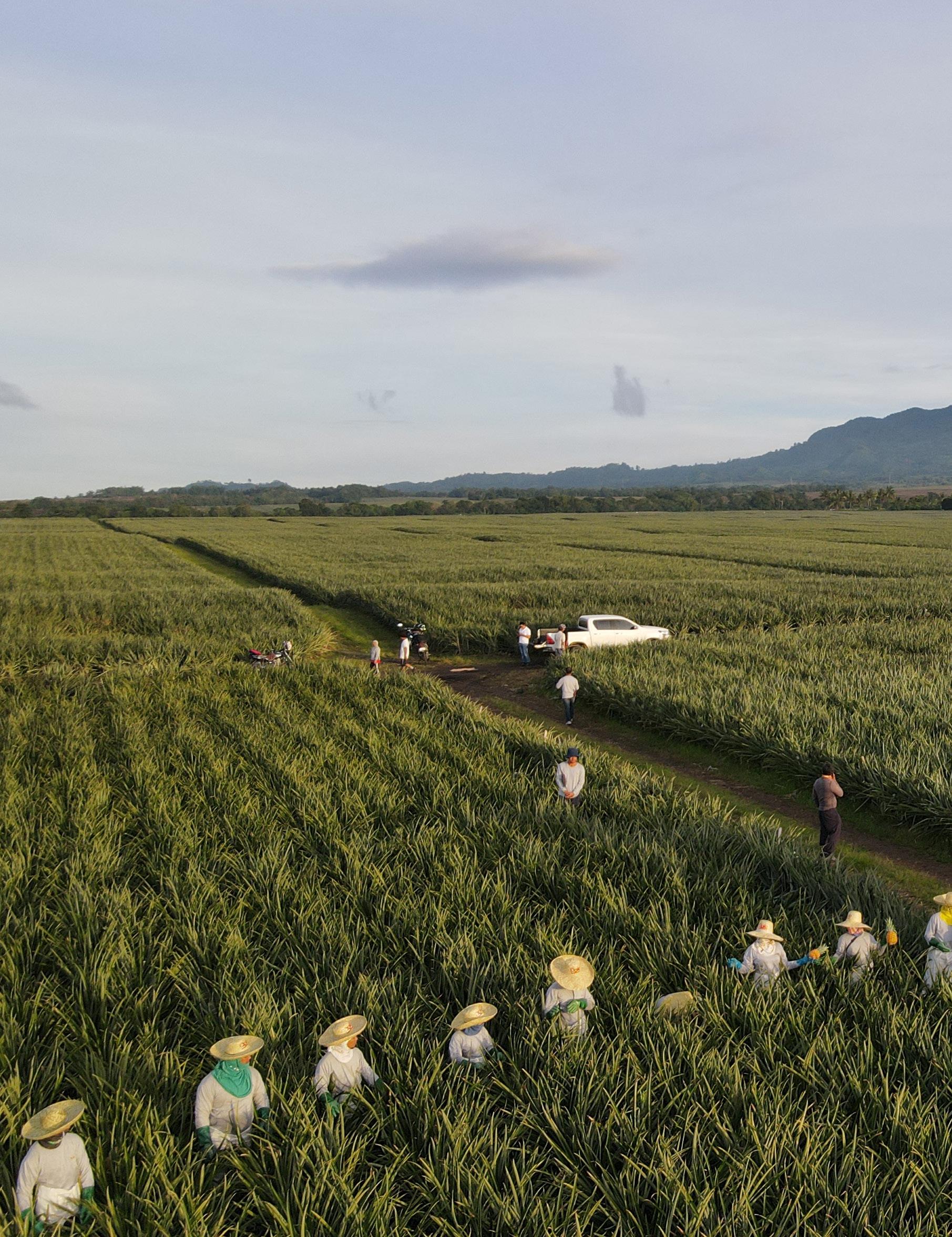
in general have highlighted vulnerabilities. To address these challenges and improve supply resilience, Dole has adopted endto-end supply chain optimisation as a strategic goal for the Canadian marketplace. A sound focus on supply chain resilience ensures elements like fines, demurrage and detention are mitigated, combatting inflationary contributors.”
There are a few key strategies Dole Foods has used to re-engineer its supply chain and amplify its resilience:
Risk Mitigation
“Experiencing disruptions in the supply chain makes companies more aware of potential risks,” says Dimitri. “By optimising our entire supply
28

chain, from the very sourcing of raw materials, followed by competitive sourcing initiatives, re-evaluating safety stocks through statistical forecasting, driving data decision making through the very culture of our operational values, and finally ensuring our partnership selections for Ocean Freight, Warehousing, and Transportation functional pillars are not just a commercial relationship, but really an integrated enterprise where we are extensions of each other’s organisations, allows for vested interests and mutual goals to be achieved.”
Visibility and Transparency:
“Supply chain optimisation often involves enhancing visibility and transparency across the entire supply chain,” says Dimitri. “Dole
has embarked through digitisation tools to ensure our teams have live streams of data visibility to anticipate potential disruptions, monitor supplier performance and make informed decisions to maintain a seamless flow of goods. Key examples of this include live Ocean Freight tracking of our ocean freight shipments, integrated warehousing inventory systems coupled within our ERP and production to shipment confirmations. Our supply chain motto is “inspecting what we expect” – only then can we achieve the level of serviceability and resilience that our customers expect.”
Efficiency Gains
“Global challenges have highlighted inadequacies in the supply chain,” insists Dimitri. “By optimising Dole’s end-to-end processes through routing optimisation, diverting ocean freight to less congested ports and positioning our warehousing and distribution closer to our customers, we have aided in reducing lead times, and minimising waste, ultimately enhancing the overall performance of the supply chain, and hitting the key performance expectations of our customers.”
Collaboration and Communication
“End-to-end supply chain
optimisation often requires improved collaboration and communication with suppliers, distributors, and other partners,” explains Dimitri. “Learning from past issues Dole
29

regularly forums with our partners to build stronger relationships through enhanced collaboration and information sharing. By choosing the right partnerships and embracing transparency in our collaborative efforts, we ensure that systems, services and deliverables are inspected to the level we expect. Dole has always been in an endless pursuit of improvement of our supply chain.”
Technology Adoption:
“Dole, being a data-driven organisation, invests in advanced technologies, such as data analytics,” says Dimitri. “We rely on partnerships for statistical forecasting and supply planning through our Blue
Yonder system, where we automate processes, as well as implement a comprehensive freight planning and routing engineering that has optimised resilience within our supply chain. This technological integration helps Dole Supply Chain in Canada make real-time decisions, aid in forecasting demand more accurately, and improve overall supply chain agility.”
Dimitri also places significant value on company culture in the development of Dole’s highperforming supply chain. “I aim to foster a collaborative and innovative culture, providing direction to the Dole team members to achieve
30
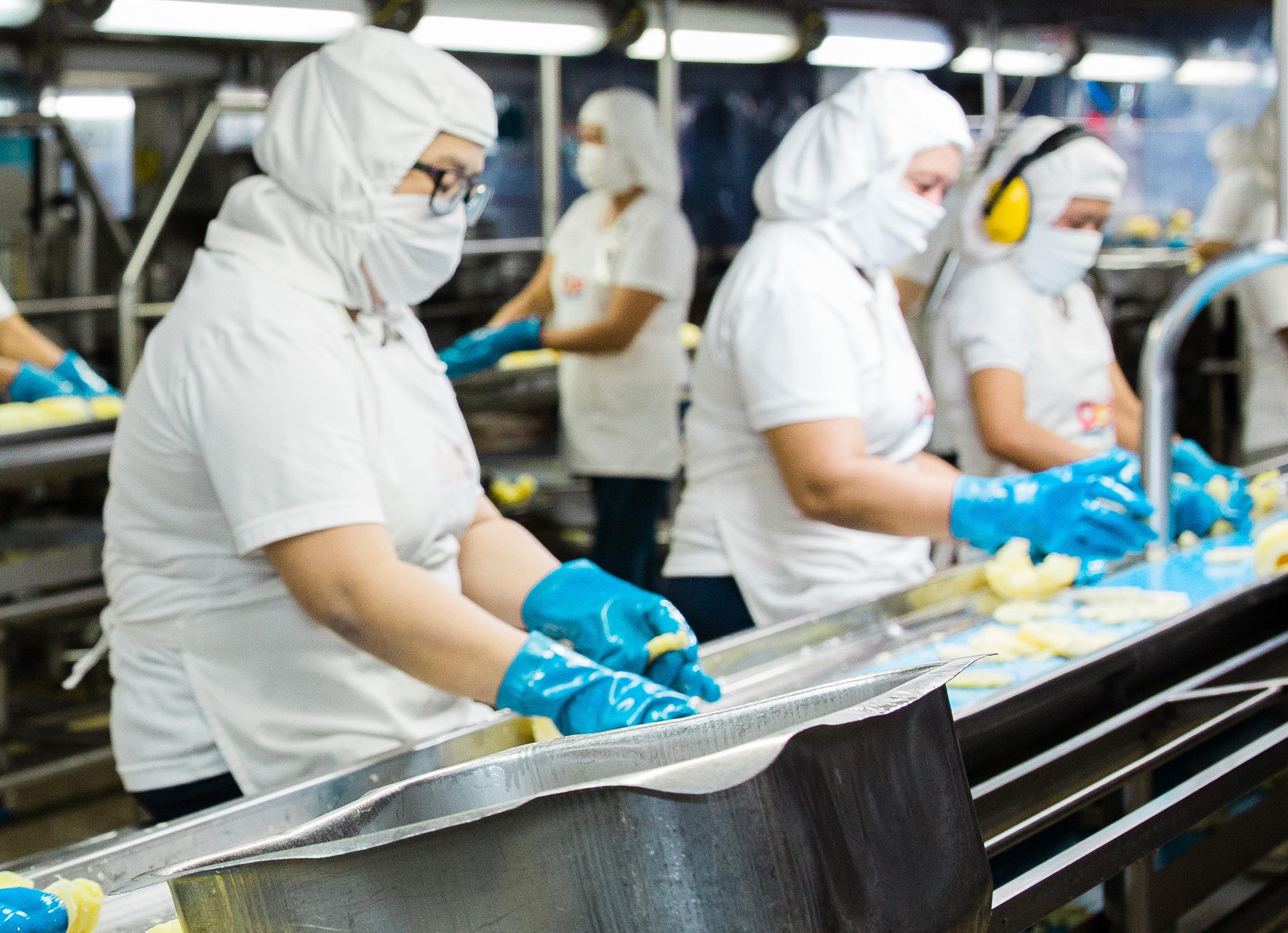
“We rely on partnerships for statistical forecasting and supply planning through our Blue Yonder system”
organisational goals,” says Dimitri. “We thrive on being a team, hence why I would like to call out our exceptional customer service department which is being led by my associate director of customer service in Canada Nathalie Cote, and our operations department associate Director of Supply Chain Carlos Castro.”
For a company as geographically expansive as Dole Foods, having
an effective supply chain strategy is crucial. The consolidated business is among the world’s largest producers of fruit products, with operations spanning globally.
“Dole's intricate supply chain for packaged food products encompasses a global network, with its farms in diverse locations like the Philippines, Thailand and Sierra Leone,” says Dimitri. “A crucial aspect of Dole’s supply chain is ocean freight
31
The Moment Is Now
Blue Yonder is creating the supply chain operating system for the world, including 3,000+ global, innovative and category-defining brands.
Find out how
32


33 Now system 3,000+
“In response to the growing emphasis on better practices in Canada, Dole Foods has taken a leadership role by identifying opportunities to move towards ecofriendly packaging materials”
to ensure our goods are delivered from a farm to table approach. Dole ships tens of thousands of containers globally. Our manufacturing landscape requires our packaged foods transported across continents to regional marketplaces and their respective distribution centres.
“The use of ocean freight enables Dole to efficiently move large volumes of products while navigating international logistical challenges from labour disruptions, geopolitical issues to domestic port challenges. Prior to marketplace distribution, Dole is a data-driven organisation, so we employ sophisticated supply planning systems such as Blue Yonder to plan our worldwide supply requirements.
“Upon arrival at distribution centres in Canada, Dole engineered marketplace propriety ‘hub and spoke’ warehousing operations to manage our goods into inland distribution. Finally, Dole ensures timely and reliable transportation

to customers by leveraging a comprehensive logistics strategy, which includes partnerships with an array of LTL and FTL multimodal transportation providers and distributors. This end-toend approach, encompassing ocean freight, supply planning, warehousing, and transportation, allows Dole to deliver quality packaged goods to consumers worldwide while addressing the complexities inherent in the global supply chain.”
Dimitri expands on Dole’s ‘hub and spoke’ model, and advanced logistics infrastructure the company wields to help navigate the vast and diverse
34

Canadian geography. In this model, the centralised hubs – in this case, the company’s distribution centres – are positioned in such a way that allows Dole to optimise the last-mile delivery process and ensure products are not double-handled. But there are many other ways Dole Foods is embracing innovation, according to Dimitri.
“Dole Foods has embarked on a transformative journey to revolutionise its marketplace distribution in Canada, recognising the unique challenges and opportunities within this market,” says Dimitri. “Leveraging cuttingedge technologies, Dole has implemented a predictive analytics
system designed to account for Canadian-specific consumer preferences, seasonal variations and regional demand patterns. This ensures that distribution sites across the country are stocked with the right mix of products tailored to the Canadian market.
“The company has embraced a localisation strategy, partnering with Canadian e-commerce platforms and retail chains to enhance its presence in the market. By collaborating with local distributors, Dole can ensure that its products are readily available to consumers across provinces, adapting to regional preferences and ensuring efficient
35
distribution within the Canadian marketplace across a diverse set of sales channels.
“Through rigorous process controls, we have meticulously engineered our supply chain to contribute to fewer products facing unnecessary destruction due to demand fluctuations. Given the perishable nature of our products, Dole has strategically forged ecosystem partnerships with local food banks in Toronto and Vancouver. This innovative approach creates a dynamic push system that channels excess supply directly to those in need.
“Our supply chain systems have been intricately redesigned so that when our inventory reaches a designated date code, it is seamlessly coordinated for distribution to food banks. As the steward of this impactful initiative, I firmly advocate for the wider adoption of such practices by corporations.
“Beyond the undeniable social benefits of aiding those in need and feeding the vulnerable, this approach contributes to the reduction of waste and destruction.”
Learn more about Dole Foods of Canada by visiting dolesunshine.com.
Added Value
Partnership Knowledge Network
Dimitri makes networking with partners a priority to stay informed on industry news.
“Establishing and maintaining information transparency with suppliers and service providers is not just a priority but a cornerstone of my approach,” says Dimitri. “Ocean freight carriers, warehousing service providers, and transportation vendors often maintain in-house updates and publications that offer valuable insights. Going beyond conventional communication channels, I actively engage in networking with our existing partners and make it a point to subscribe to their publications. This proactive approach ensures that our team stays well-informed, leveraging the collective intelligence of our network to anticipate market trends, navigate challenges and foster collaborative problemsolving. By actively participating in this information exchange, we not only strengthen our partnerships but also enhance our strategic decision-making capabilities within the dynamic landscape of supply chain management.”
36
Looking ahead
Dimitri is looking forward to the Gartner Supply Chain Symposium / XPO in June 2024, where he is excited to learn about new digitisation tools and connect with vendors.
“Moreover, through my educational background holding an MBA from the Richard Ivey School of Business, having CCLP designation, and the CSCMP designation, I am looking forward to participating in industry community-based events, networking with peers and partners in the supply chain space,” says Dimitri.
Connect with Dimitri


BUSINESS INTERVIEW
Accelerating our success together by unleashing the power of automated manufacturing with business AI
We welcome senior executives from the SAP Digital Supply Chain organisation in the Middle and Eastern Europe (MEE) region to dive into the empowering and energising potential of digital transformation, the cloud and fully automated manufacturing. Read on for a sneak peek of SAP’s showcase at HANNOVER MESSE 2024, along with the latest and greatest insights into how SAP is the provider and partner to help businesses.
39
With
24,000 partner companies
around
the world, SAP customers generate 87% of total global commerce. SAP’s goal is to be the number one enterprise application and business artificial intelligence (business AI) company, powered by its leading platform and 107,000 employees in 156 countries.
oining us today are key members of the SAP team supporting this effort: Dr. Johannes Tulusan, Chief GTM & Customer Advisory Officer, Digital Supply Chain (MEE); Ralf Lehmann, Vice President, Global Head of Industry 4.0; and Dominik Metzger, Global Head of Software Engineering –Digital Supply Chain.
Launching our conversation, we’ll be exploring the key trends and opportunities for digital supply chain actors in 2024. Then we learn more about the potential of SAP’s public and private cloud ERP solutions, the importance of moving towards fully automated digitalised manufacturing and the power of
40

“To bring out the best for our customers, manufacturing and supply chains must be more agile, more collaborative and more integrated”
Dr Johannes Tulusan
41

business AI. Our guests will hint at the groundbreaking technology SAP will be showcasing at the HANNOVER MESSE later in April 2024, before wrapping up our conversation by looking ahead to the future of SAP’s digital supply chain strategy.
State of Play
As we enter 2024, digital supply chain professionals are still grappling with the demands of post-COVID resiliency and must come to terms with digital transformation to thrive. Resilient supply chain management to address unforeseen events remains imperative and technologies like artificial intelligence (AI), blockchain, data analytics and the Internet of
Things (IoT) are here to stay as key tools toward that end. Sustainability is the ever-present elephant in the room and businesses envision the need for end-to-end transparency throughout the whole supply chain. These discussions are fundamental, but they are not entirely new. So what is the current state of affairs now we’ve flipped the calendar from 2023 to 2024? And how is SAP adapting to ongoing changes to empower its customers –helping them expand, digitalise and scale their businesses?
“In 2024, there are four major areas in the supply chain which have entered the horizon or evolved for companies in many industries,” begins Johannes. “First, there’s a need for increased automation and agility in supply chain processes. Labour shortages in highly skilled roles plague many businesses, for example in the manufacturing industry. Experts who have been working at companies for many years are starting to retire. The resulting knowledge gap can be closed by increasing the role of automation. Here, SAP can help customers automate and integrate the production, logistics and maintenance areas of their operations.”
Weighing in, Ralf emphasises that promoting automation does not mean
42
“One of the goals for enterprises is leveraging and conserving the skills of experts while building institutional knowledge, but simultaneously bringing younger workers up to speed quickly so they can operate proficiently at a high level in less time”
Ralf Lehmann, Vice President, Global Head of Industry 4.0
removing humans from processes or jobs. Instead, it is about optimising the effectiveness and efficiency of people working alongside machines, together. Moreover, he insists automation can help employees refocus on the more complex tasks that require human ingenuity.
“One of the goals for enterprises is leveraging and conserving the skills of experts while building institutional knowledge, but simultaneously bringing younger workers up to speed quickly so they can operate proficiently at a high level in less time,” says Ralf. “Automation is a highly valuable resource in this pursuit. In recent years, agility in the supply chain has become even more important for our customers. They typically have a dynamic mix of products they're assembling on multiple lines. Businesses need to look from an enterprise performance perspective to identify an efficient production strategy and embrace agile working practices.”
“The second important topic for 2024 is visibility and
transparency within and across the company,” notes Johannes. “Endto-end processes from enterprise resource planning (ERP) to supply chain are a key requirement for digital business. Equally critical is the ability to interact with trading partners in a business network and share relevant data – and this is fast becoming a reality.”
“Third – and this has been an important topic in recent years – is striving for sustainability,” adds Johannes. “Many stakeholders discuss this topic at length, but implementing it is becoming increasingly urgent, in light of the increasing number of new
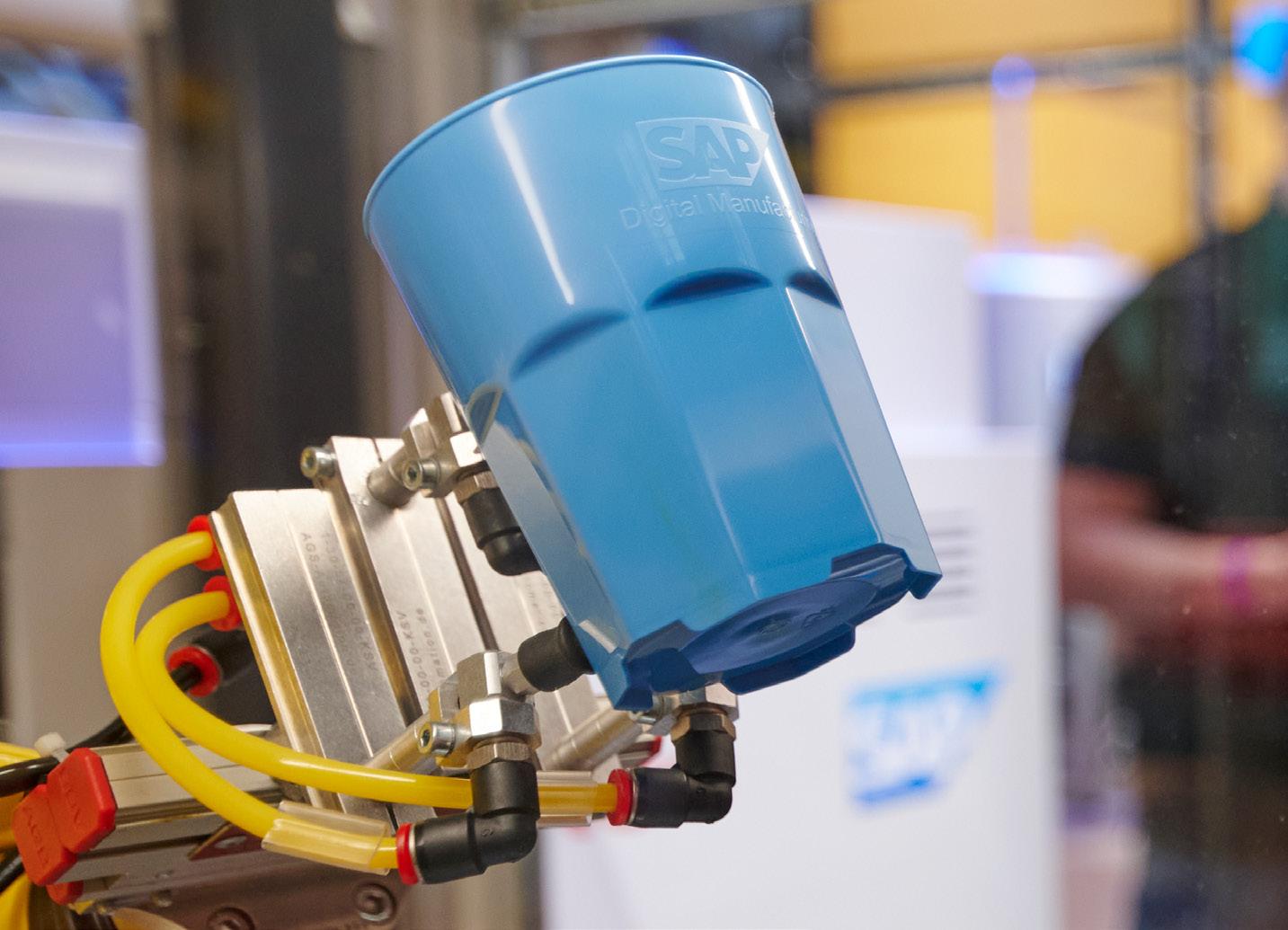
43


policies and regulations regarding the issue. We are at the stage of moving away from hopeful thinking to making sustainability a reality for every business, but there is still more work to be done –an endeavour which SAP is committed to supporting its customers in.”
“The final hot topic on everyone’s lips is AI, and in particular generative AI,” continues Johannes. “Specifically at SAP, we are enriching all our applications with business AI capabilities to help our customers autonomously enhance their business processes or to optimise business outcomes.”
Transformation Trio: Cloud, Automation and AI
In light of these emerging and evolving trends, what technologies, software solutions, and strategies do Johannes, Dominik and Ralf believe are fundamental for enabling supply chain resilience in 2024? They all agree that it starts with cloud-based solutions, gravitates around fully digitalised, automated manufacturing and weaves in business AI.
Cloud
Elaborating on the importance of the cloud, Johannes stresses that innovation in the cloud is easier than the alternatives and that staying with onpremise systems holds companies back.
“The RISE with SAP offering and the GROW with SAP offering help our customers who have on-premise ERP move into the cloud,” begins Johannes. “Maintaining an ERP system in its own
local data centre becomes quite cumbersome and deploying new innovations like artificial intelligence is only possible in the cloud environment. In 2023, there was a breakthrough in the MEE region where many customers decided to bring their entire business software landscape into the cloud.”
So what is the difference between RISE with SAP and GROW with SAP?
“RISE with SAP is essentially for our customers with existing SAP ERP software landscapes and who want to keep most of their customisations but merge and transform into the cloud,” says Johannes. “GROW with SAP is our ERP solution to encourage customers in what we call ‘greenfield’ approach, where customers want to start afresh, to move all processing into SAP S/4HANA Cloud, public edition. Customers also apply hybrid approaches with RISE with SAP and GROW with SAP, transitioning to the cloud with their existing ERP landscape while at the same time implementing SAP S/4HANA Cloud, public edition for new sites.”
“In relevant industries, digital supply chain professionals have a strong stake in the RISE with SAP and GROW with SAP transformations, since certain key functions they oversee, such as manufacturing, production planning, logistics and product lifecycle management are already embedded within the ERP software solutions from SAP. A resilient supply chain has become a keystone function of any
46

“The first purpose of AI is to empower business users to handle disruptions by delivering all the critical information for rapid decision right to their fingertips”
Dominik Metzger, Global Head of Software Engineering – Digital Supply Chain
business, since it goes hand in hand with growth and transformation.
“Within the next month, SAP plans to announce the offering of supply-chain-specific RISE with SAP packages for our customers, to help them identify the most suitable supply chain solutions alongside their cloud ERP transformation.”
Fully Automated, Digitalised Modular Manufacturing
Ralf adds the agility and scalability of RISE with and GROW with SAP make them ideal solutions for new innovations, particularly in production.
“Clearly supply chain cloud solutions have become much more important in recent years in our MEE region,” reaffirms Johannes. “Before, for instance, we saw digitalisation and production as separate silos, but now we see an amazing trend toward adoption of the scalability of cloud in the digital supply chain and the manufacturing area in tandem, breaking down the silos. The power of cloud solutions lies in their agility in this rapidly evolving context.”
Ralf goes even one further step ahead, by highlighting the importance of fully automated and digitalised modular manufacturing as the future
47
of production. As the technologies facilitating production evolve around end-to-end integration – including cloud ERP, digital manufacturing solutions, automated guided vehicles (AGVs), traceability software, AI and business AI – businesses must lean into the trends, driving and bolstering the global economy, adds Ralf.
AI
Johannes recalls how since 2013, when big data became part of his role at SAP, there has been a developmental journey towards AI as we know it today. Back then, it started with handling vast quantities of master data, turned towards looking at prescriptive data then predictive maintenance before arriving at machine learning and emulating data today.
“Now the focus is moving beyond using data analysis to generate predictions to realise the potential of generative AI and business AI, by training algorithms so we can ask for recommendations, not just summaries or forecasts, while also steering the technology towards learning and improving itself,” explains Johannes. “At SAP, we are developing our business AI to apply artificial intelligence in a business industry context. We realise AI is more than just validation or algorithm analysis, it’s about facilitating learning within the system itself and generating insights and suggestions we might never have come up with ourselves. This is incredibly important in all solution areas, not just digital supply chain.”
Dominik insists that for today’s businesses, AI has two main purposes.
“The first purpose of AI is to empower business users to handle disruptions by delivering all the critical information for rapid decision right to their fingertips,” says Dominik. “The second, and let’s consider this a long-term purpose, is to transform supply chains to become near autonomous and selflearning. Near autonomy, as with self-driving cars, means that a vast majority of essential decision-making is automated, and only the most critical disruptions are managed by expert business users. Automation clearly facilitates supply chain optimisation.
“Optimisation is not a new concept in the supply chain arena, and many companies have already optimised supply planning in several ways. They use forecasting for demand planning and machine learning algorithms for predicting demand for spare parts. Machine learning algorithms help with planning transportation routes and choosing suppliers.
“But what is really tough for many companies is to build trust in the system. If a worker has done their job for 20 years on a manual spreadsheet, why should they trust this new digitalised system? And that's really a sweet spot for generative AI. One example is our generative AI assistant Joule, which revolutionises how we interact with SAP business systems, making every touchpoint with the system simpler by just asking to get
48

tailored results for a business process step. As an end user, once I’m included in the discussion, I have much more faith in my optimised system and its output supported by generative AI capabilities.
“The role that generative AI can play then is to lower these adoption hurdles for users of optimisation and advanced forecasting,” summarises Dominik. “When we look at logistics, we can specifically talk about automation. What’s in the logistics space today can still be a very manual process. For example, in many warehouses and shipping yards of this world, whenever a truck or a container rolls up, someone still needs to check that the paperwork matches the contents, by comparing paper documents in their hand to a screen display. Using generative AI to automate these processes can actually be a game changer.”
Taken together, cloud, automation and AI technologies will revolutionise the future of the digital supply chain – which is why they form crucial components of SAP’s exciting showcase for HANNOVER MESSE 2024.
Hannover Messe 2024
There’s a tangible buzz in the air as we turn our conversation towards the HANNOVER MESSE 2024.
HANNOVER MESSE is the world’s leading industrial trade fair, showcasing cross-industry solutions and interface technologies for the
entire business ecosystem. The aim is to energise sustainable global industry. More than 4,000 companies will be acting as an interconnected industrial ecosystem and attendees from all industries, looking for trusted partners to help them become more resilient and sustainable, are warmly invited to explore SAP’s leading supply chain solutions.
But what can HANNOVER MESSE attendees expect from SAP at the event?
Setting the scene, Johannes shares the theme for SAP’s presence at HANNOVER MESSE: ‘Bring out new manufacturing excellence’.
“Manufacturing is one of the growth engines of the global economy,” begins Johannes. “Successful, innovative manufacturing has a ripple effect across the economy by stimulating growth in related industries.
“Industry 4.0 is about integrating digital and physical worlds, changing the way manufacturers operate, collaborate and engage with customers. Adapting to Industry 4.0 requires a new kind of intelligence –with data at its core – that uncovers new insights, automates operations and optimises decisions.
“To bring out the best for our customers, manufacturing and supply chains must be more agile, more collaborative and more integrated.
50
Business processes need to be as smart as the products we’re making and the customers we’re selling to.”
Ralf weighs in and adds that today’s manufacturing leaders need to know how to combine data from machines, processes and the full ecosystem to make better, more holistic decisions, adapt to changing market demands and harness new technologies – such as generative AI and machine learning – to design, manufacture, deliver, operate and maintain products more efficiently and sustainably.
Offering a sneak preview of SAP’s showcase on modular manufacturing at HANNOVER MESSE 2024, Ralf describes the company’s demonstration of worker and shop floor orchestration including on-hand AGVs from multiple vendors.
“When we go to HANNOVER MESSE, our approach is unique compared to
other events,” says Ralf. “Our goal is to enable attendees to understand the power of the SAP solutions at a deep level, in a tangible, real-world context. How exactly can SAP solutions help them drive better business results? To answer that question, we showcase a vast range of customer examples and demonstrate in person and in real time how those elements interact with real assets.”
Without spoiling any surprises for the big event, we can say that the SAP showcases at the big event in Hannover covers the manufacturing end-to-end process comprehensively: from designing a product and planning projects, to building, delivering, operating and maintaining them.
But fortunately for us, there is one main SAP showcase around automated and modular manufacturing at HANNOVER MESSE
51
1
Discover two powerful assets to accelerate your digital transformation
Transforming business processes through immersive experiences
In the ever-evolving landscape of industry supply chains, BearingPoint takes a bold step forward with its Virtual Reality Platform, revolutionising the way business processes are implemented. The uniqueness of BearingPoint’s approach lies in its ability to provide clients with a better understanding of new workflows and IT systems through immersive experiences. By turning
2
Leveraging the Equipment-as-a-Service demands with Lease & Rent to obtain new revenue stream
BearingPoint’s Lease & Rent solution is an answer to today’s dynamic business landscape, where the global equipment leasing and rental industry faces a paradigm shift. Increasing demands for new business models, flexibility, sustainability, financial risk management, cost efficiency, technological innovations, maintenance and evolving regulations require adaptation. Businesses in this sector,
complex processes into tangible, virtual encounters, the platform plays a pivotal role in fostering a more profound willingness to embrace change within project and business operations teams. This, in turn, becomes a critical success factor in driving larger corporate transformations.
Our platform offers a distinct advantage in the SAP® partner ecosystem. Unlike any other provider, we seamlessly integrate a solution that combines virtual reality expertise with indepth knowledge of SAP® solutions.
including construction, OEMs, and equipment dealers, are transitioning to models like Equipment-as-a-Service. Inspired by the automotive sector, they explore new avenues, being challenging for both startups and established companies.
BearingPoint leads this digital transformation with a revolutionary SAP cloud solution. Lease & Rent modernises management to accommodate new business models, going beyond traditional software by integrating end-to-end leasing and rental processes, covering all the relevant aspects – from request, quotation, invoicing and
By engaging users in immersive experiences, we aim to translate the abstract benefits of SAP® solutions into tangible and experiential encounters, fostering innovative approaches for SAP® sales and transformative SAP® S/4 HANA projects.
Let’s delve into the possibilities together.

throughout the contract lifecycle to maintenance, logistics, and even refinancing.
By harnessing SAP technology, we empower organisations to embrace new models, streamline operations, and stay ahead in an era of constant change and innovation.
Scan the QR code to discover how Lease & Rent can streamline your Leasing and Rental operations:
www.bearingpoint.com
2024 that Johannes, Ralf and Dominik can offer early insights into for our conversation. With all the buzz around fully digitalised modular manufacturing and the role of automation within it, we would be remiss to overlook a full discussion of automated guided vehicles (AGVs).
As it stands in global industry today, AGVs from different manufacturers must run on separate systems in manufacturing and production operations. However, there is growing awareness of the need for interconnectivity and interoperability to support a unified approach to advanced planning, data sharing, visibility and ERP enhancement. And
this is precisely where SAP is going to transform how its customers and partners conceptualise and execute manufacturing and production, with full automation and digitalisation – driven by data, to bring out new manufacturing excellence.
“AGVs perform a crucial support role in logistics, the supply chain and manufacturing operations – to name just a few use cases,” says Ralf. “But the situation today is that each type of AGV needs its own driving arena. Imagine if every type of car needed its own road to drive in – it would be chaos, right? But to bring the metaphor back to AGVs, we are exploring how to
“At HANNOVER MESSE 2024, attendees will see what we’ve achieved: AGVs from three distinct vendors – MiR, Omron and symovo – work simultaneously and safely, in the smallest driving area we could force them into, to prove the concept”
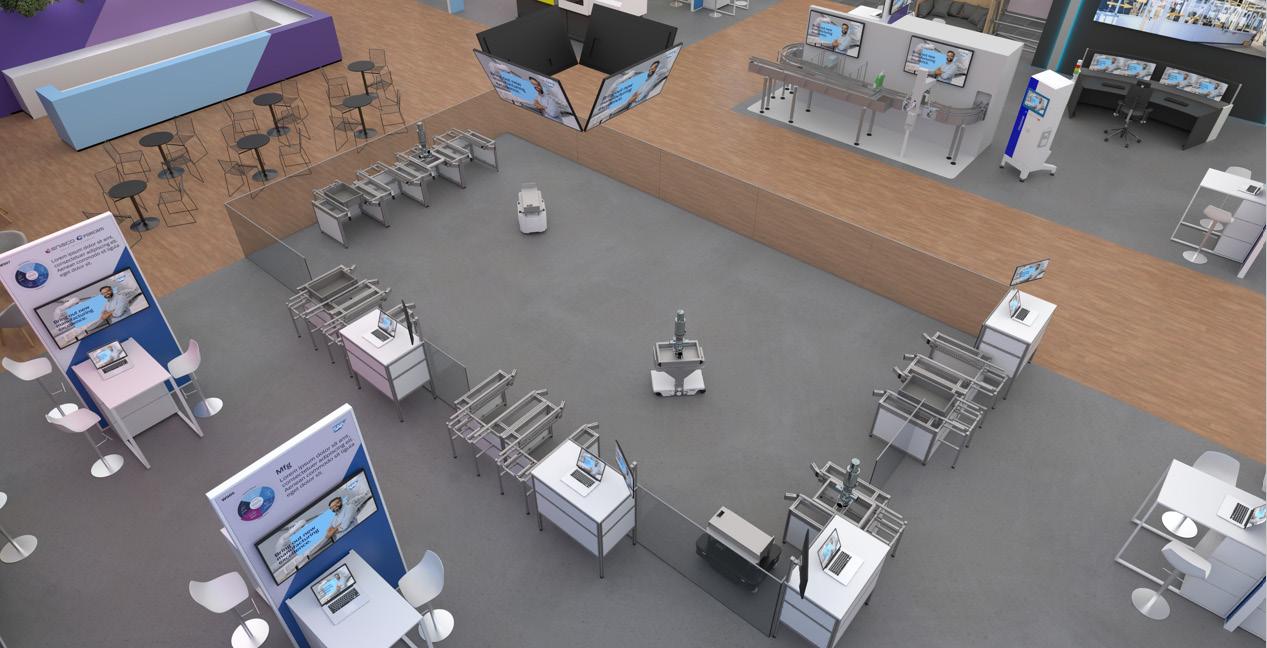
53
create a new environment where AGVs from all manufacturers can operate interconnectedly in the same environment, without needing separate systems to run them.
“Large companies with multiple production slides and several AGVs in their manufacturing processes need to set up intralogistics from one flow. At the moment, joint orchestration is not possible and we want to change this situation.”
“The first step is to be able to orchestrate the AGVs jointly,” continues Ralf. “The second step – and this is where the true innovation potential lies – is to apply business context to the AGVs and share data seamlessly, throughout the entire manufacturing process, to fully automate the production line. The appetite among our customers for such a revolutionary AGV system is staggering, so we have worked with our partner KINEXON to meet this pressing business need.
“At HANNOVER MESSE 2024, attendees will see what we’ve achieved: AGVs from three distinct vendors – MiR, Omron and symovo – work simultaneously and safely, in the smallest driving area we could force them into, to prove the concept. We co-innovated with KINEXON and the AGV manufacturers to develop hardware-independent fleet management system, running multiple devices orchestrated through a KINEXON solution and integrated with the SAP Digital Manufacturing solution.”
Ralf explains the system: “All the AGVs are controlled from a central layer that can talk to each of the devices within the fleet management system. This capability goes well beyond the requirements of the 5050 standard from the German Automotive Industry Association (VDA from its initials in German), the current industry benchmark for AGV communication.”
In fact, SAP solutions harmonise all the technologies that will be
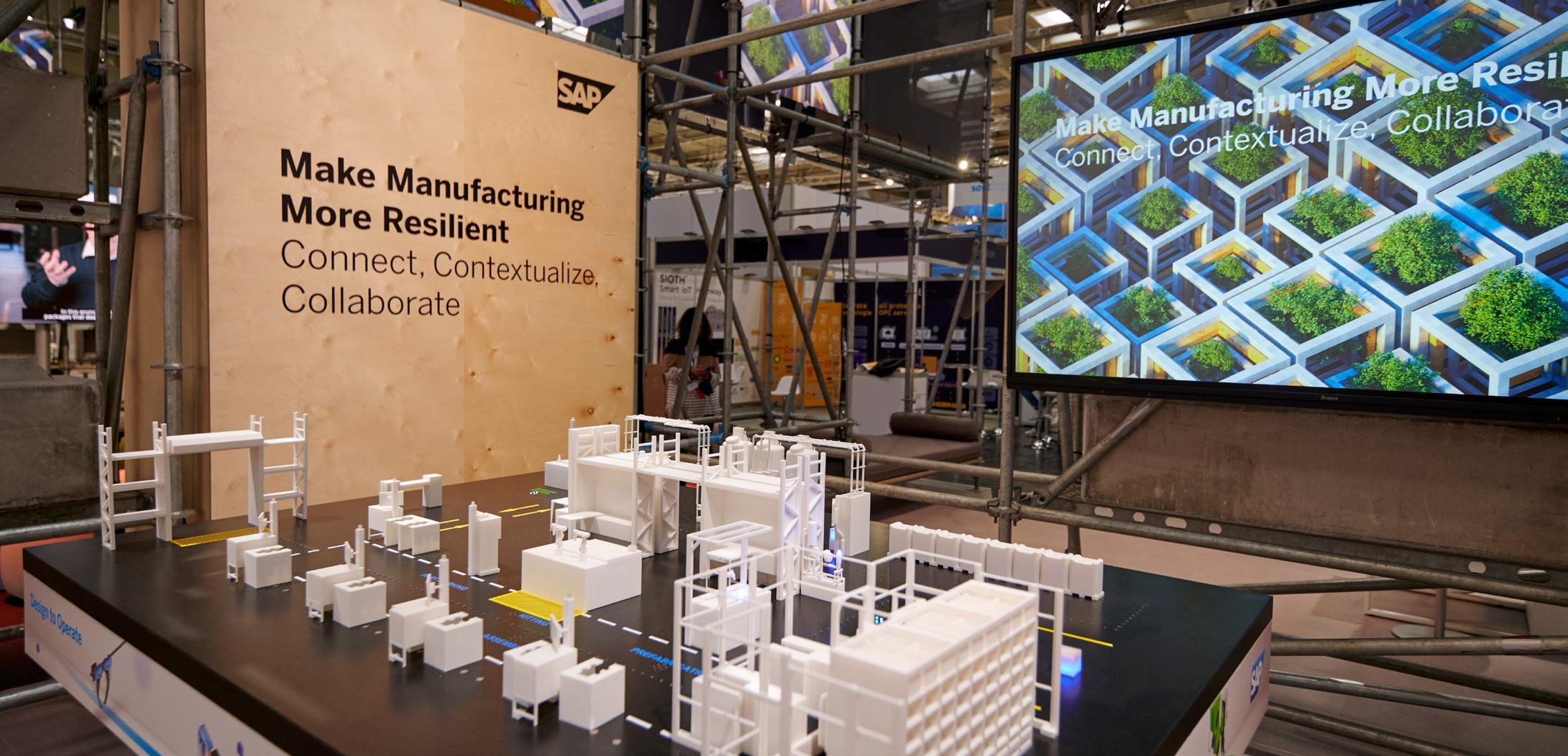
54
© www.joanna.nottebrock.de

proaxia Seamless Service.
With our seamless service approach, you can increase your service efficiency and customer satisfaction!
We are designing and implementing processes & solutions that lay the foundation for a consistent and efficient service experience across all service channels.

Boost your customer engagement through integrated digital self-services!
With our packaged Customer Self-Service (CSS) solution you can create a state-of-theart B2B service portal that supports your business processes with innovative digital selfservices, fully integrated into your processes and SAP landscape.
Our Customer Self-Service enables real-time communication between you, as a manufacturing company (OEM), and your customers.
The digital involvement of your B2B-customer enables direct service relations and strengthens customer loyalty.
Accelerated service processes save valuable time and increase productivity.
Get more information:
www.proaxia-group.com
info@proaxia-group.com
Higher transparency through shared processes and information helps innovate business models and establish new revenue streams. For


55
SAP Industry Cloud
demonstrated at the company’s modular manufacturing showcase at HANNOVER MESSE 2024.
“SAP S/4HANA Cloud is the core digital backbone for discrete manufacturing, and we are demonstrating how SAP Digital Manufacturing integrates with SAP S/4HANA Cloud, public edition running the modular manufacturing showcase,” continues Ralf. “We cannot wait to show attendees this revolutionary seamless integration applying open industry standards and orchestration by KINEXON to enable multivendor AGVs to drive in shared spaces.
“On top of this, we will show attendees how generative business AI and
advanced machine learning will reshape supply chain execution in the way products are designed, planned, manufactured, delivered and maintained. SAP provides the next generation of business applications infused with business AI and empowers manufacturing leaders to leverage unique data assets from manufacturing execution systems, marrying large-scale machine data and ERP data with data from the wider industrial ecosystem to push manufacturing efficiency to the next level.
“We live in a disruptive world these days,” Ralf summarises, “and for most companies, the question is how to best handle and optimise all their flows, infusing every business application and
‘Digital Core For Enterprise Supply Chain’ - Powered By Capgemini
Supply chains have always been complex, and the last few years have taught us how fragile these can be. At Capgemini, we focus on collaborating with our clients to identify and enhance critical elements unique to each customer and their supply chain by leveraging our expertise in processes and technology. We partner with SAP to integrate cutting-edge technology solutions like AI, ML, IoT, blockchain and advanced analytics to enhance supply chain offerings. Our focus areas include Sustainable Supply Chain Strategy, Smart Forecasting, Procurement, Order Orchestration and Reverse Supply Chain Management. Through collaboration with SAP, we drive innovation in supply chain resilience and optimise end-to-end performance management. Our approach integrates these technologies seamlessly, ensuring efficient and agile supply chain operations for clients.
“Intelligent supply chain prioritises resilience, performance and sustainability – enhancing augmented customer-centricity.”
As a partner in Business Technology and Digital Services Transformation for Supply Chain Management (SCM), we drive business outcomes:
• Up to 15% reduction in inventory costs
• Up to 20% improvement in demand forecasting accuracy
• Reduction of overall transportation costs by 10% - 15%


To know more, please visit - www.capgemini.com
56
process with the latest technologies for digitalisation, data management and artificial intelligence – transforming the end-to-end value stream with SAP’s support.”
Connect with SAP’s experts in digital manufacturing at HANNOVER MESSE 2024, April 22-26 at booth E17 in Hall 15.
Elevating solutions with strategic partnerships
After our whirlwind discussion of the SAP showcase at HANNOVER MESSE 2024, a key topic arises in the conversation. The fundamental importance of strategic partnerships and a robust partner ecosystem stands out. It is for instance, after all, a collaboration between SAP and KINEXON that will transform the AGV solutions currently available on the market.
SAP embraces its prominent position in the global market to invest in, and thereby empower, its partners – benefitting the entire supply chain ecosystem in the process. Here, Johannes, Ralf and Dominik highlight some partners as demonstrative of the power of collaboration: All for One, BearingPoint, Camelot ITLab, Capgemini and proaxia all add tremendous value as SAP partners. For further insights into how these companies collaborate with SAP as partners, explore the spotlights dotted throughout this article.
“All our partners, whether they’re related to supply chain or to SAP more broadly, have always been fundamental to us as
a business,” says Johannes. “But now more than ever we recognise that these strategic alliances will continue to grow in importance as we develop together. We have many different types of partners, from system integrators to software partners. All of them are relevant today and into the future, because we realise within SAP that due to the high demand from our customers, we have to entrust our partners with further responsibilities along the customer value lifecycle.
“One of our fundamental beliefs as a company is we can only expand our expectations and ambitions when we also grow with our partners: together and in all aspects.”
Ralf reiterates the notion of the responsibility SAP embraces towards its partners.
“Since we are a leader in the market, customers expect SAP to talk and engage with our huge ecosystem,” explains Ralf. “By working with an amazing partner ecosystem we can tailor and amplify our solutions for our customers, across industries and lines of business, understanding and then meeting customer needs and helping them thrive in the process.”
Where next?
Looking ahead to the future, Johannes, Ralf and Dominik offer their insights on the direction of digital supply chain strategy at SAP in the coming years.
57
“First, the future of the digital supply chain strategy at SAP is to embrace business AI and generative AI, with an end goal of improving our supply chain offerings,” says Johannes. “Second, this goes hand in hand with the transformation of ERP into the cloud. Our goal is to show our customers the distinct, industryspecific value proposition of cloud ERP transformation. Third, within our entire design-to-operate solution area the goal is to be the best-inclass solution, offering an end-toend seamless experience. Fourth, an important SAP message for 2024 is ‘Accelerating our success together.’ We are driven by the idea that we can only be successful in concert with the entire SAP ecosystem, including our partners, SAP employees, and customer base. Finally, we will continue to listen to our customers through feedback sessions, so we can continuously improve our offerings in relevant, industry-specific and profound ways.”
Ralf highlights the burgeoning importance of risk management and visibility for customers, while simultaneously encouraging them to consider all external and contextual factors in their operations.
“Of course, we must prioritise our customer’s internal integration with SAP, but we cannot neglect external forces,” notes Ralf. “For instance, with risk management, how can we
help our clients untangle challenges and perceive them in a simple, understandable way? How can we help them consider all the global economic factors that impact their business? Ultimately, how can we wield analytics and the insights it brings to secure the best performance and outcomes for our customers? We expect AI, and specifically business AI, to play a crucial role in these areas in the coming years.”
Dominik believes the future of supply chain is near autonomy, powered by artificial intelligence and a wealth of data.
“For me, this means that the silos in supply chains will continue to converge,” says Dominik. “Because if you have all the data at your fingertips – whether you’re a business expert, supply chain planner, demand planner, logistical dispatcher, service technician or purchaser – having all of this data at your fingertips while running autonomous processes means that teams can converge. I believe this means we can cover much more intelligence and empower our customers to do what they can do best.”
For further information about SAP, visit sap.com.
To meet and connect with SAP at HANNOVER MESSE 2024, April 22-26, at booth E17 in Hall 15 – head on over to the event overview page on their website.
58
Added Value
Johannes
Johannes embraces being value-driven, compassionate and open-minded during a customer lifetime value journey.
“Ultimately I see this approach as the best way to engage with our customers,” says Johannes. “When we work with customers, we have high ambitions for bringing them the optimal end-to-end solutions for their needs. But we also need to remember they are often embarking on a new journey, which can be intimidating. By being compassionate and openminded as well as value-driven, we foster trust and encourage customers to embrace change.”
Connect with Johannes
Ralf
Ralf emphasises the importance of teamwork and relishes the opportunity to embrace a leadership role at SAP.
“It’s a pleasure to be ‘the captain of the boat’ and guide my team. It’s about navigating new waters and I love this side of my role,” says Ralf. “Working with new companies and new challenges is energising. But you can only reach new destinations with collaboration – internally but also with your partners and customers on board too.”
Connect with Ralf
Dominik
Dominik inspires creativity to address complex business challenges.
“I am deeply passionate about fostering creativity and empowering individuals to unlock their full potential,” says Dominik. “Guiding professionals is not just about providing direction, but also about cultivating an environment where innovation flourishes. Through compassion, collaboration and a commitment to nurturing diverse perspectives, I aim to inspire and lead creative individuals towards meaningful outcomes that push boundaries and drive positive change.”
Connect with Dominik

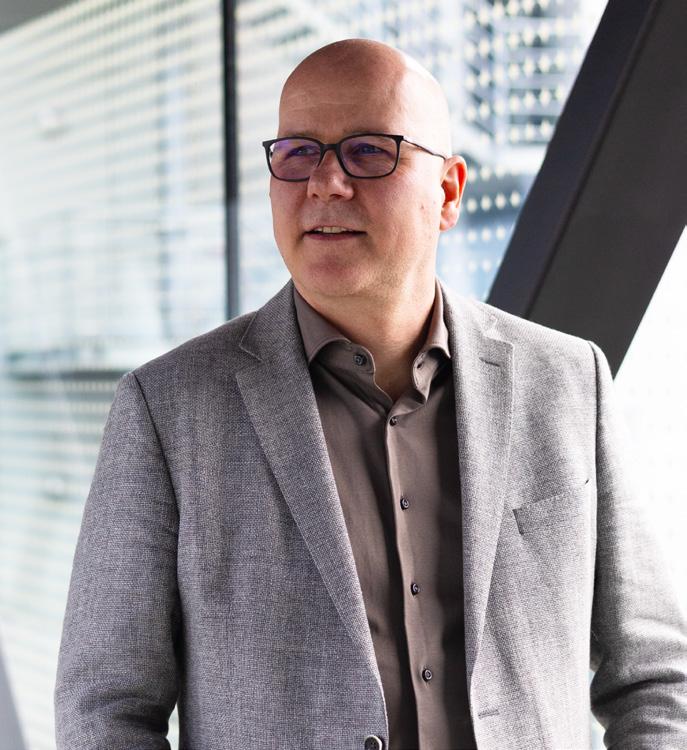








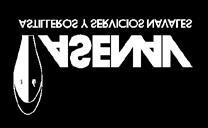



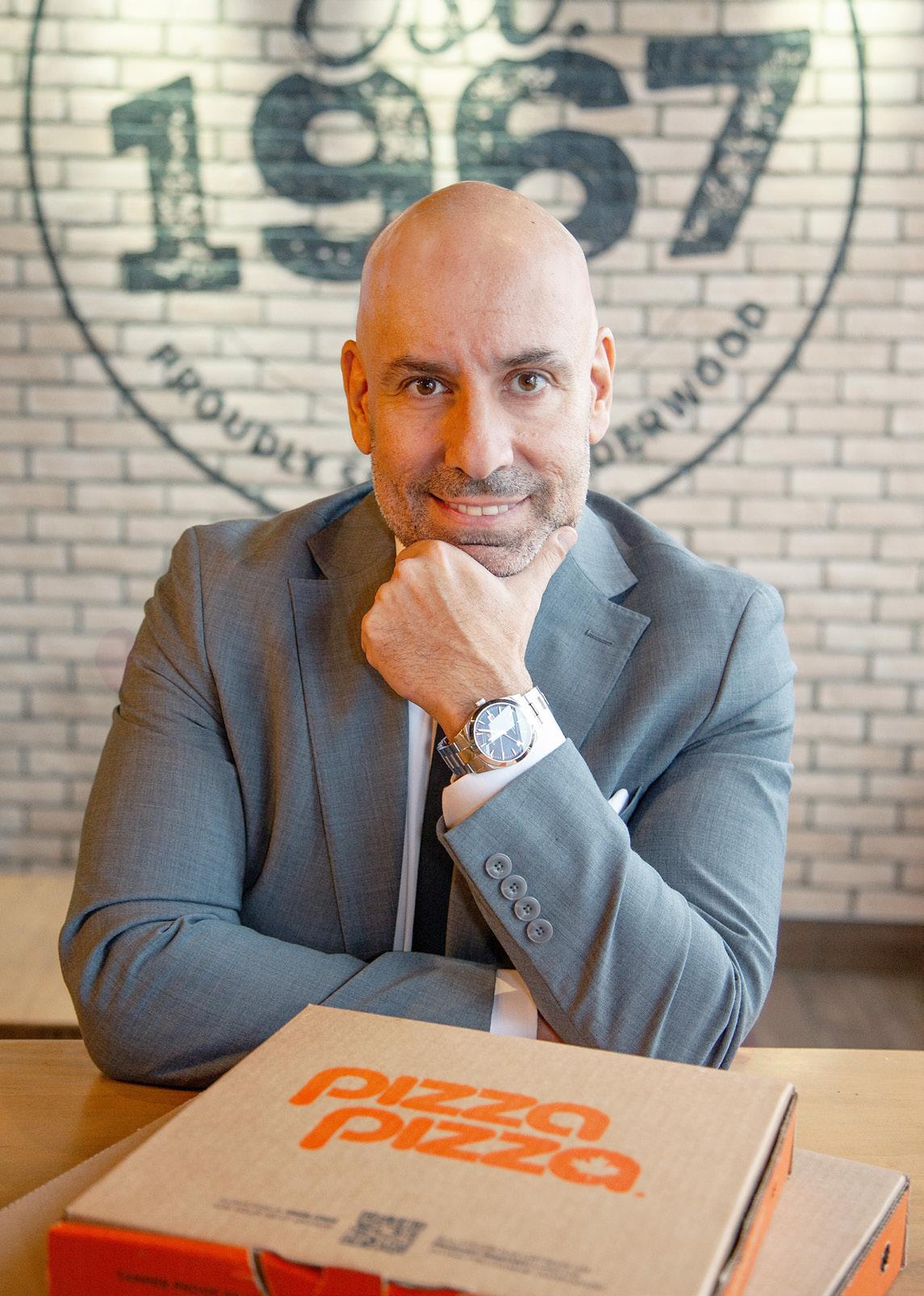
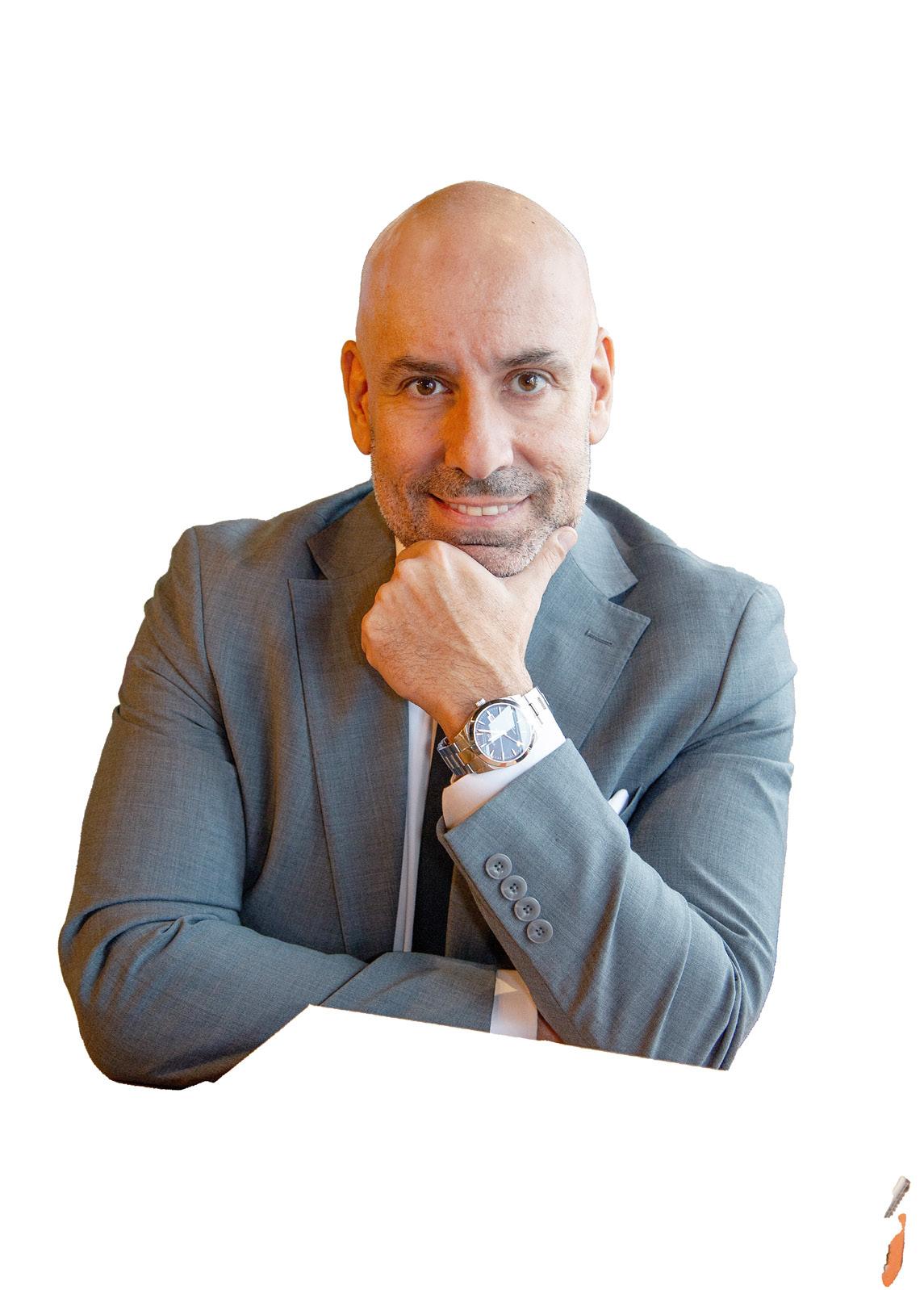











60 Walmart Central America Director Supply Chain & Manufacturing and Growth discusses their customerdriven, global supply chain approach Walmart Central America Director Supply Chain & Manufacturing and Growth discusses their customerdriven, global supply chain approach










61
MISS AN ISSUE SIGN UP FOR FREE!
Director of Manufacturing Strategy customerapproach Director of Manufacturing Strategy customerapproach
Produced by NEVER
SUBSCRIBE
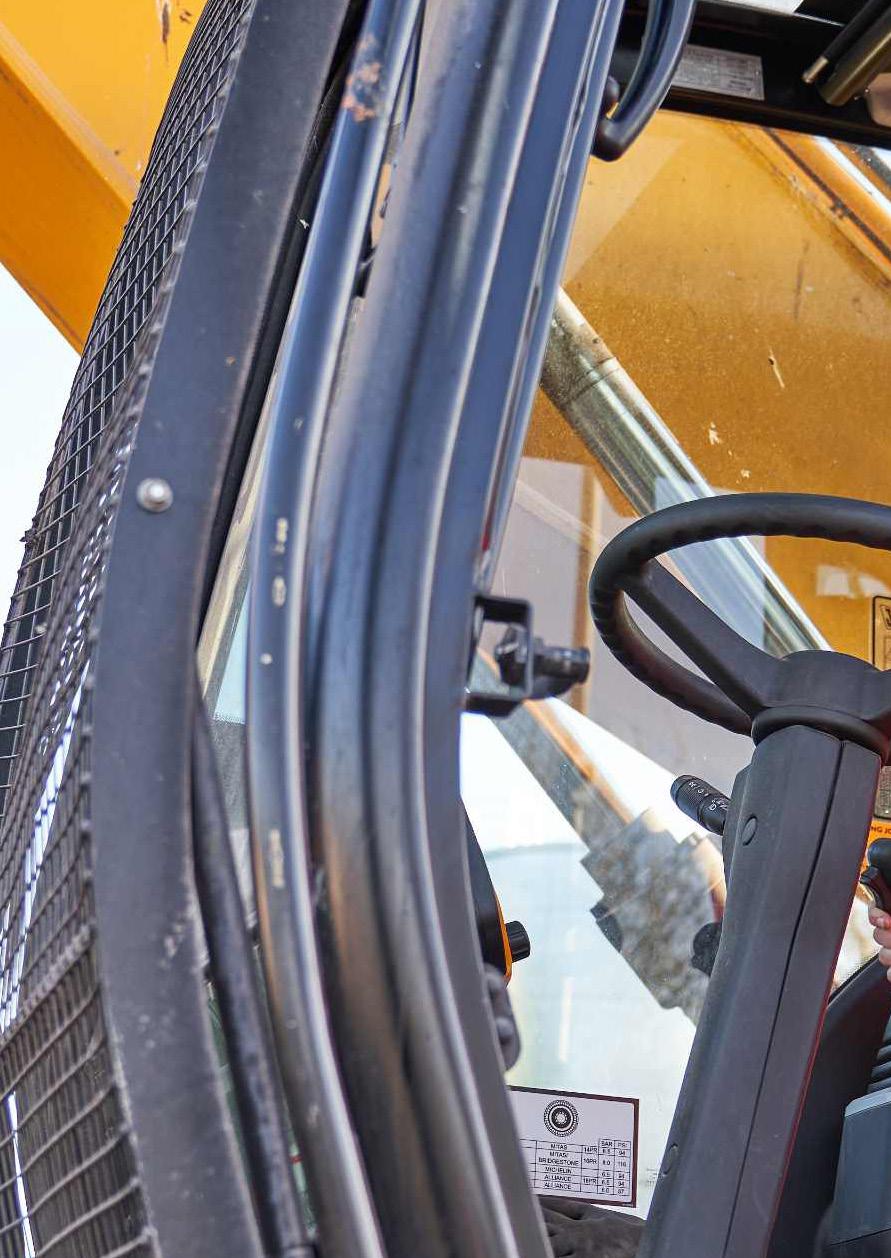
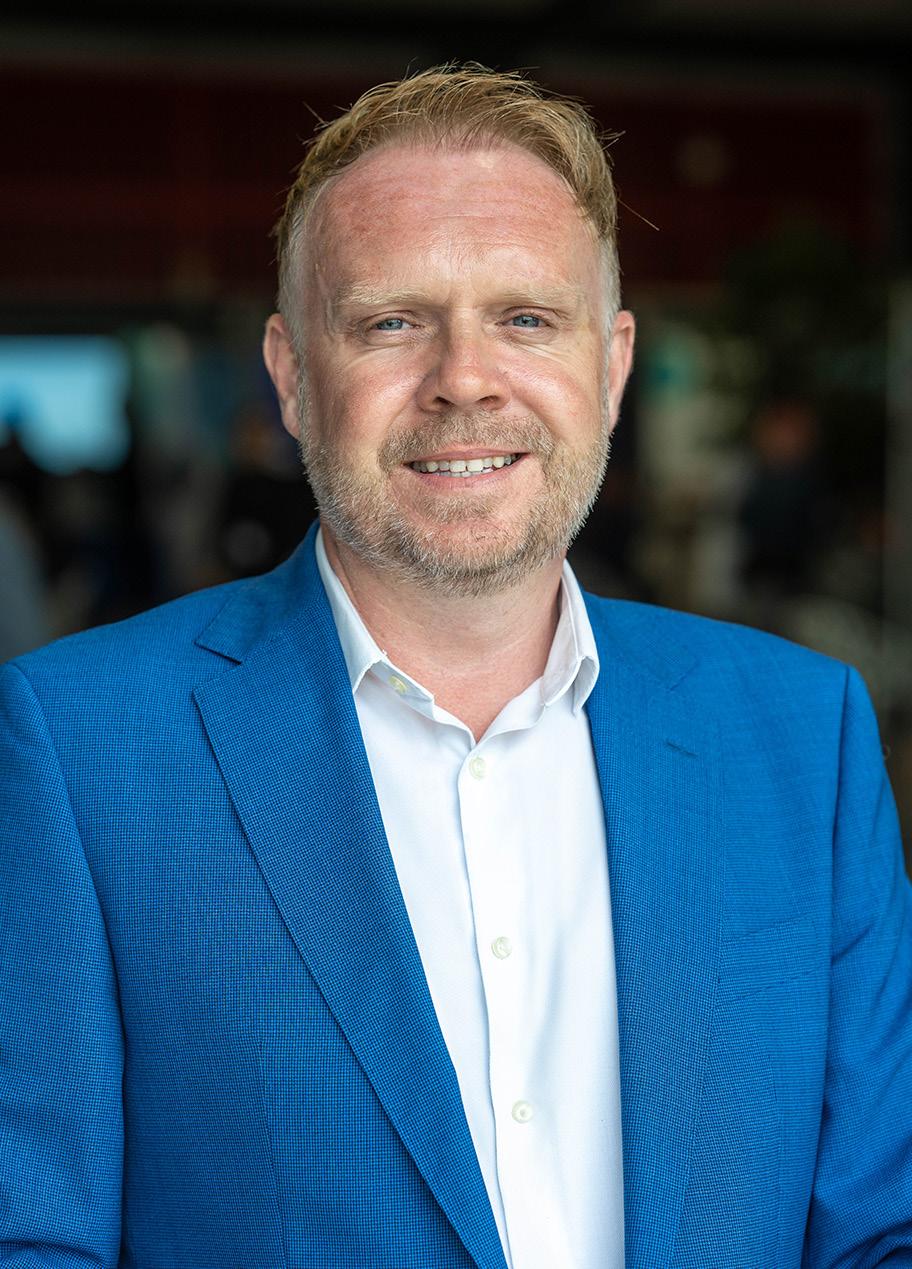
BUSINESS INTERVIEW
Consolidating procurement in the public sector to drive innovation and sustainability
Simon Bullimore, Head of Group Procurement at Norse Group on the company’s organisational approach to procurement in the UK public sector.
he Norse Group is the largest Local Authority Trading Company (LATCO) in the UK, and it aims to improve people’s lives while generating ethical, sustainable profit for the public sector. In a context of cost pressures posing significant service challenges for councils and public bodies, Norse Group’s unique partnership approach to flexible service provision provides abundant opportunities to design and execute collaborative solutions.
Norse Group supplies a significant number of services including catering, grounds maintenance,
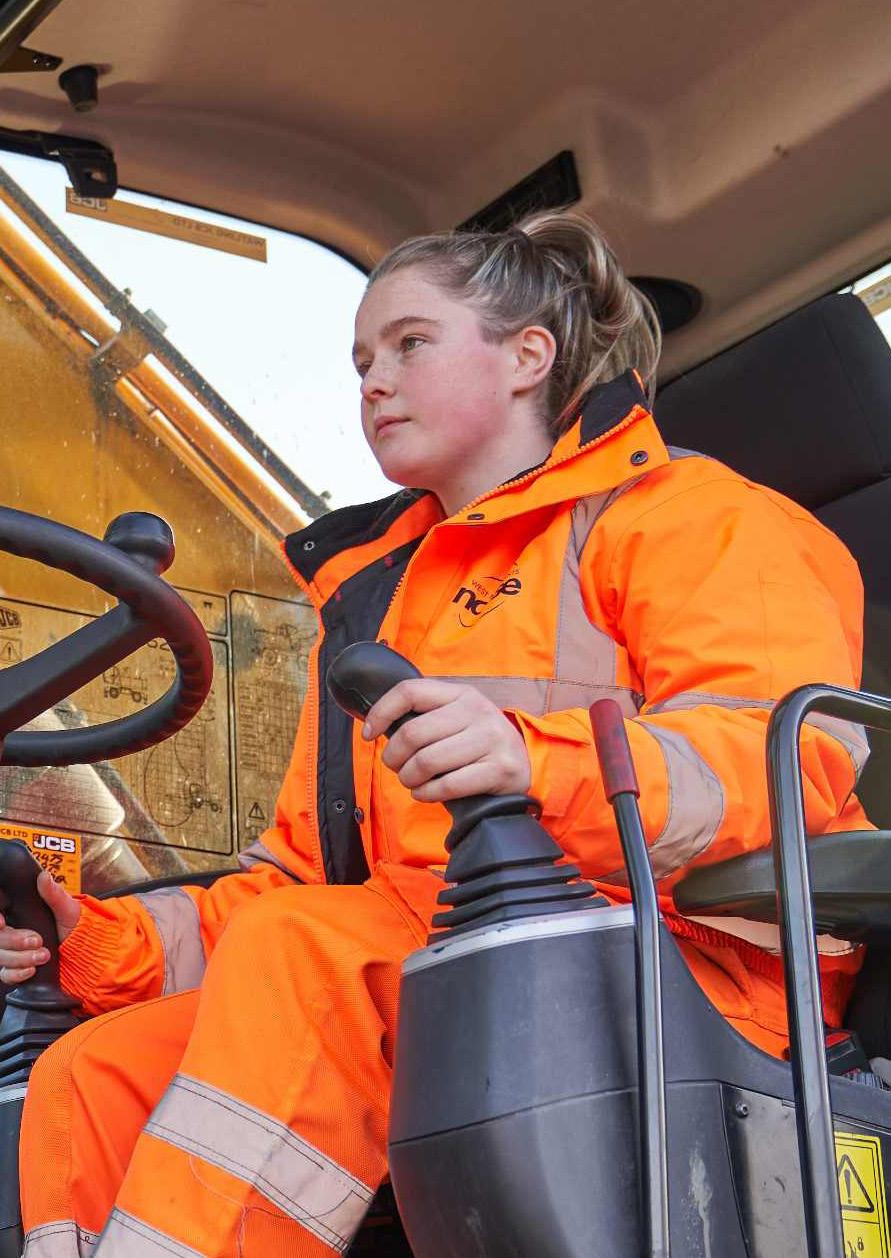
highway maintenance, transport, security, fleet management, facilities, cleaning, consultancy and adult social care.
Each one of these areas has its own supply chain, and Simon Bullimore, Head of Group Procurement at Norse Group oversees all of them. Simon joins us today to discuss the Group’s complex supply chain network and how it embraces consolidation, technological innovation and sustainability in its operations.
“So not only do we supply an array of services and sectors, but we also do it by what we call joint ventures

“We are developing a new computer system across the Group which will give us much better management of the information and data from our supply chain”
with several local councils in the UK,” begins Simon. “A joint venture model is a dynamic and reliable model for local councils. We spend in the region of £187m per year on products and services, and given the number of sectors we're in, we've got an extremely diverse supply chain. As such, cost control, governance, sourcing, tendering and the whole procurement cycle sits with me and my team –there’s no real element we don't cover.”
Simon explains that Norse Group takes a consolidated approach to procurement to ensure success in light of its expansive and complex supply chain.

“Since the Group merged in 2019 to gain efficiencies and improve services for customers, breaking down silos and integrating the business has been a priority,” says Simon. “This is understandable as all these areas have their own profits and losses to consider, plus they are trusted to run their own areas of the Group.
“But procurement is a function that touches and helps empower every single part of Norse Group. We cover a huge amount of ground and it's only recently that we are starting to really pull together and leverage our spend. Part of my role is to laud the benefits of joined-up procurement, especially while we're trying to achieve progress and results in the current economic climate.
“A consolidated approach to procurement is essential due to the nature of public sector governance and also meeting the commitments we make to ESG. Our targets simply cannot be achieved across a widespread and non-controlled supply chain.
“Our colleagues are starting to realise as well that everyone across the business wants to deal with the best suppliers, and the reliable
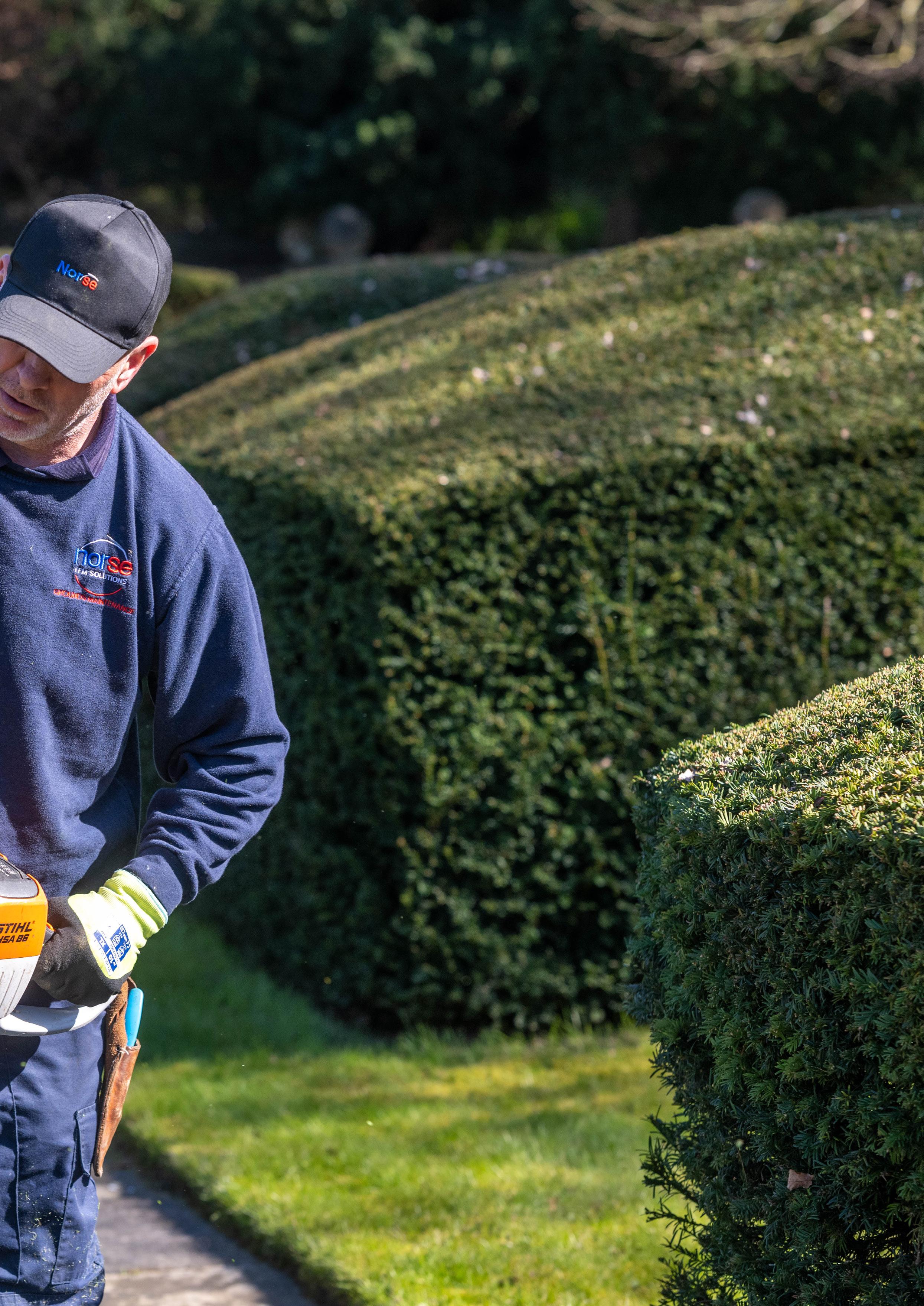
aspects of volume and spend still shout the loudest for attention. But our consolidated approach to procurement makes us an attractive organisation to work with and that's the key: be that in how we handle supplier management, consolidated group spend or streamlining our supply chain.”
So what are some of the key projects underway at Norse Group where the consolidated approach to procurement is unfolding? Here, Simon highlights the Group’s approach to ESG.
“As with all businesses, we take the ESG side of our operations very seriously,” says Simon. “We've always had obligations as a Group because of our position as a LATCO and our Norfolk County Council ownership. So we've always been up to speed on aspects like sustainability and the Slavery Act or Bribery Act, right from the beginning.
“A recent project within our supply chain governance relates to one of the biggest risks with modern day slavery: the overseas textile market,” says Simon. “Here we've worked to engage with businesses that are SA8000® accredited and part of the Sustainable Textile & Leather Production scheme (STeP scheme). STeP accreditation recognises adherence to best practice approaches to safety, ethics and sustainable production within all manufacturing facilities.
“Our CEO, Justin Galliford, drives a lot of our ambitions in net zero and carbon emissions – our target is to

reach net zero by 2050 and we have long since had a robust sustainability policy in place. The role we have in procurement is to make sure we take these values into the work we do, in the back end of the business. We cannot promote ourselves as an ESG thinking business if we do not demonstrate an ESG thinking supply chain, all the way from our suppliers through to client delivery.
“We value suppliers that can bring ESG relevance to our business, whether it be our workwear made from recycled fabric or removing the single-use plastics with the help of our partner Bunzl.
“They are ahead of the curve when it comes to sustainability, and what they are able to do is take a look at your product range and give you an idea of what sort of products can be removed and which ones you can replace. Bunzl also helps us as partners by assisting us with reporting. They have a strong understanding of demonstrating


the tangible outcomes of making sustainable swaps in our product range.
“This level of collaboration is the ideal partnership that we look to put in place where we're not just analysing price. We're looking at the total cost of ownership, which is an old-fashioned term, but it's still a relevant term.
“Everywhere we turn, I believe there is opportunity for sustainable choices. We need to make sure we grab the right ones, ignore the non-creditable ones and deliver everything we can into the business in the process. This includes taking care of really simple things like reducing supplier deliveries, wherever possible. I think that's often forgotten, but it's a very simple fix, which comes with very little risk.
“Another project we’re working on is we're looking to add a social value tool into our supply chain and procurement process. Essentially, when companies are bidding for our contracts, they will need to
complete a special social value tool which calculates that all-important social return on investment and helps us quantify exactly what is being achieved. Our current and future clients want to see these actions from us because it's essential work for all. The road to genuine and measurable sustainability is complex, but it starts with your supply chain.”
According to Simon, there are unique opportunities and challenges arising within public sector procurement and the Norse Group leans into them to meet its goals of generating ethical, sustainable profit and ultimately improving people’s lives.
“In terms of challenges, the actual discipline of procurement is broadening and deepening all the time. It used to be about doing great deals, putting suppliers and contracts in place for the right price and that was it.
“Now, as we all know, it’s so much more than this which is obviously great for the profession but creates ever greater challenges, such as incorporating the many things that the government wants to see in public sector spending, such as awareness of sustainability and social value. There are also carbon reduction requirements and very specific rules around bid submissions. On top of all this, we are required to make opportunities accessible for SMEs.
“When it comes to public sector procurement and the opportunities it presents, I feel many people get unsettled by the regulations and how
“We embrace deploying new technology and taking innovation forward wherever we can, where the business case makes sense and we can reduce total cost of ownership”

rigid they can be, especially if you’re coming from the private sector like I did,” explains Simon. “The regulations themselves can be a challenge but the procurement sector is fantastic for offering support.
“There are consortiums, frameworks, and mechanisms in place, such as those provided by ESPO, CCS and YPO. There's often guidance that can help people who benefit from economies of scale and leverage. So when it comes to these public buying consortiums, I've always seen them as another element of my department.
“Moreover, a well-run public tender will more often than not yield the right supplier for your business. Take the core elements like the standard selection questionnaire that carries out your due diligence for you. You are forced to have open and transparent evaluation criteria making you give particular focus well ahead of your tender and the timescales that are required to be followed, which ends up adding real structure to the process.
“At Norse Group, we look to take the rules and regulations and use them to our benefit as much as possible.”
Looking ahead to the future of public sector procurement for Norse Group, Simon emphasises the impact of new regulations and policies alongside the economic circumstances as influential factors.
“The Procurement Act 2023 that landed last year will continue to shape what we do in public sector procurement,” says Simon. “In my opinion, the bill will deliver significant benefit to the public sector. The production of the new procedure, namely the competitive flexible procedure, completely changes the landscape. We will be readdressing how we compile our tenders and taking an approach that means each tender we do will have the ability to shape the nature of what we're procuring.
“I think for far too long the first interaction with winning bidders in the public sector has been the handshake and signing of the contract. With the new procedure, we plan to engage with the supply chain early and we want to design a procurement exercise that means we get as full a picture as possible before we award contracts. It also means your key stakeholders can
become better engaged and you get a better feel for the people you may well be working closely with in the future.
“It relies on the supply chain wishing to engage on a higher level than just bid writing, but in my opinion, it's an opportunity for the supply chain to persuasively sell their services. If you speak to most commercial and salesorientated people, they will tell you a chance to get in front of the process early on is what they really want. So from this aspect, I think the new legislation is a massive positive step.
“Another element worth noting here is it's not always easy to demonstrate things like ESG when writing a bid, so if people are given the chance to come
and demonstrate to you what they can do earlier on, this will give you a better impression of their services.
“The last dynamic which will be important for the coming years is the fact that prices are rising in all manner of areas. We combat this through techniques of consolidation to leverage spend and to focus on supplier relationship management (SRM) more, meaning we get closer to our suppliers. We understand the challenges coming up and we work to mitigate them in a mutually beneficial way. We want to be a business that the supply chain wants to work with – you cannot just dismiss all the issues on cost at the moment, price increases are a shared challenge. We strive to work with people who are aware of
We are proud to partner with Norse Group to create a cleaner, safer and more sustainable world
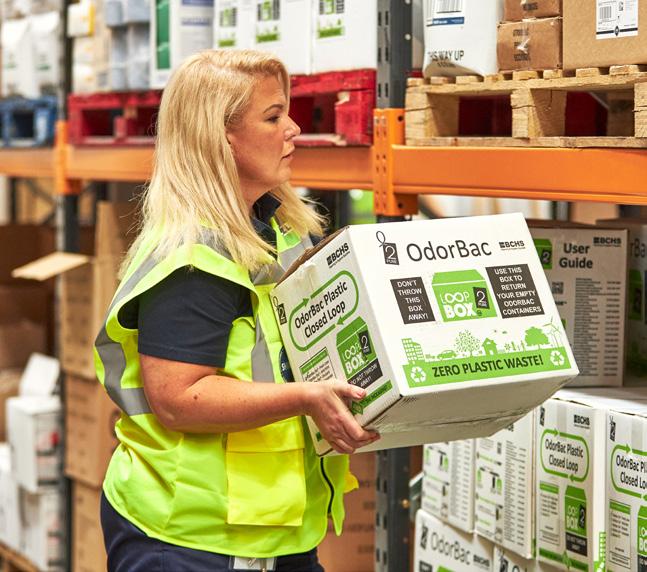


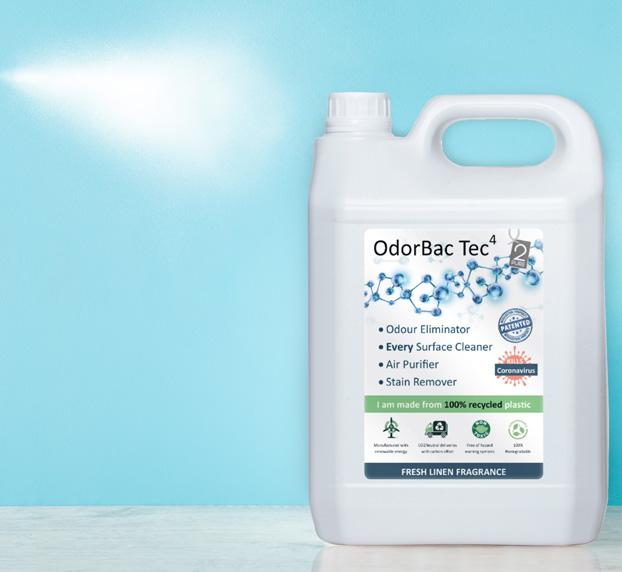
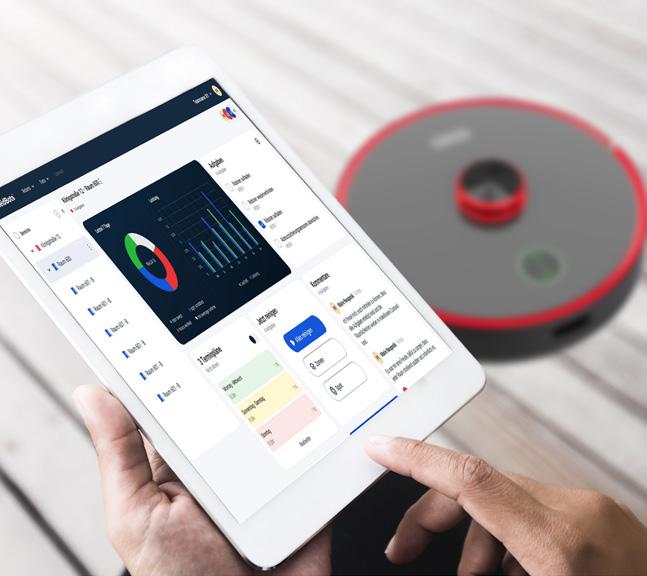

Cleaning
Using our expertise to help our customers clean better and faster while controlling costs. Smart Cleaning Solutions Offering the latest smart technology including robotics fleet management and integrated customer digital portals. The Latest Cleaning Innovations Bringing first-to-market cleaning innovations to increase capability and performance. Pioneering Sustainability We’re shaping the industry with market-leading sustainable solutions that don’t cost the earth. Local Service, National Strength www.bunzlchs.com | Telephone: 0121 326 8921 | Email: info@bunzlchs.com
Expertise in
& Hygiene
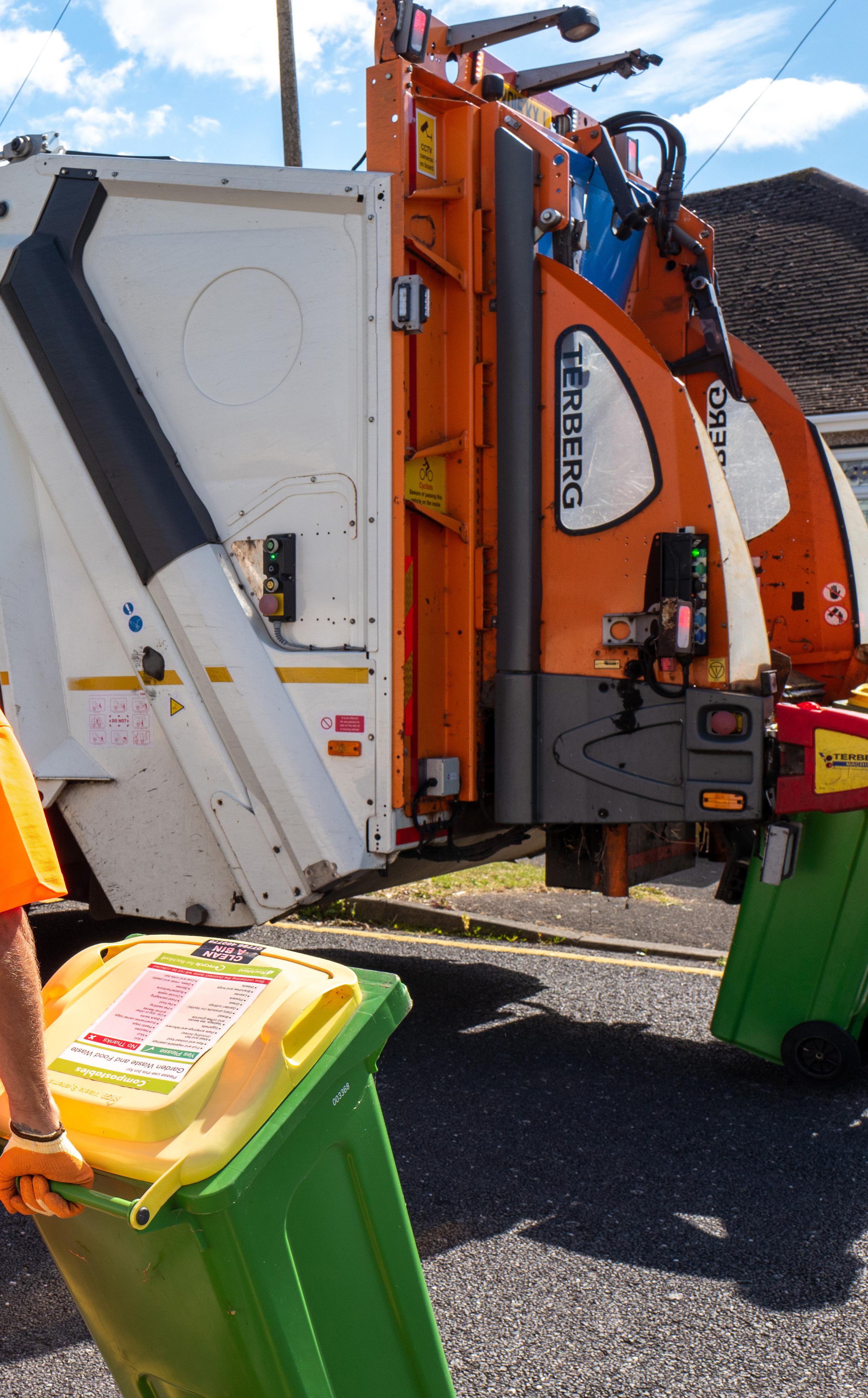
our challenges, as well as their own, so we build a relationship-driven and data-driven business.”
In light of the legislative and economic circumstances impacting public sector procurement, Simon describes the importance of wielding technology and innovation to enhance and streamline operations at Norse Group.
“For instance, if you look at all the vehicles that we support, we have a vendor-managed inventory system,” says Simon. “When it comes to all the spare parts that are managed by our suppliers on-site, we use technology to asses our stocks and demand which is a real driving force for us.
“We've also invested heavily into our specialist cleaning equipment, reducing our labour costs significantly. Since COVID-19, there have been a lot of technological advancements and innovations in that area, especially in our health and social care settings.
“We are developing a new computer system across the Group which will give us much better management of the information and data from our supply chain. We still spend a lot of time securing Management Information from our suppliers, and with our new system, we will be able to use this to drive strategic decisionmaking. We embrace deploying new technology and taking innovation forward wherever we can, where the business case makes sense and we can reduce total cost of ownership.”
For further information about Norse Group, visit norsegroup.co.uk.
ADDED VALUE
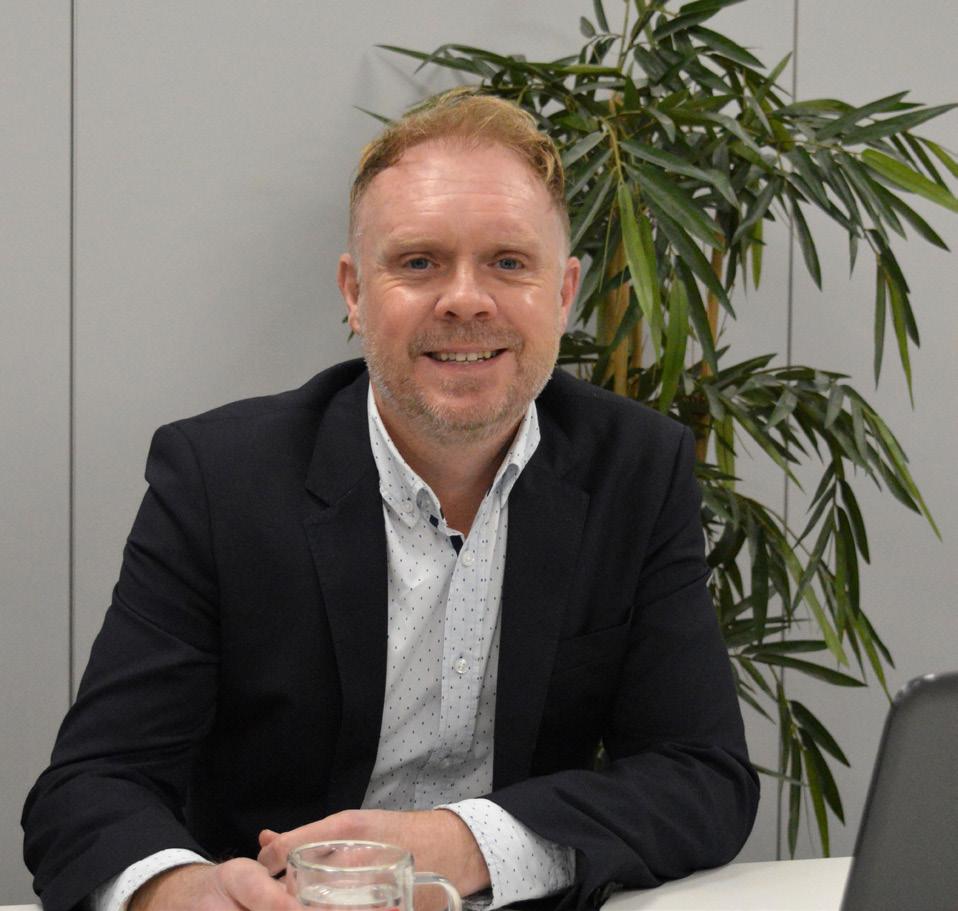
‘Quality time with my boys’
For Simon, spending time with his twin sons is a calming and deeply rewarding experience.
“I find whenever my mind feels a little scrambled, I will sit down with my two 5-year-olds and talk to them,” says Simon. “Their uninhibited, fearless and carefree outlook on the world is a real leveller: they keep me grounded and aware of the truly important things in life.”
Reading Recommendation
“Many people have read it, but if you haven’t I highly recommend Atomic Habits by James Clear,” says Simon. “I have a demanding role and balance this with having young twin boys. For me, the book really helped me bring positive change and habits into my relatively hectic life.”
Connect with Simon
69
Meet the emerging companies transforming the construction industry supply chain by injecting new technologies and solutions into concrete production.

7 STARTUPS SETTING NEW STANDARDS IN CONCRETE PRODUCTION

START UPS
SETTING PRODUCTION
oncrete, a fundamental building block of modern construction, bears a significant environmental cost.
Accounting for approximately 8% of global carbon dioxide emissions, the traditional production processes for
cement and concrete have long been a sustainability challenge.
However, a wave of innovative startups is changing this by offering new alternatives that not only reduce carbon footprints but also enhance construction processes.
TURN OVER FOR THE 7 STARTUPS



2. ALCEMY: QUALITY PREDICTIONS FOR LOW-CARBON CONCRETE
The issue with low carbon concrete is that, as production is in such early stages, it can be this challenge, Alcemy provides predictive analytics during production. Its AI-driven software identifies necessary production parameter adjustments, enabling producers to optimise concrete quality before delivery. This ensures a more consistent product quality, facilitating the use of lower-cost, low-carbon materials as a sustainable alternative to traditional concrete production.


1
Photo from www.alcemy.tech

1. CONCRETENE: PIONEERING NANOMATERIAL TECHNOLOGY
Concretene introduces a graphene-enhanced admixture for concrete, developed in collaboration with Nationwide Engineering Research & Development and the University of Manchester’s Graphene Engineering Innovation Centre. This nanomaterial technology significantly improves concrete microstructure, enhancing compressive, tensile and flexural strength. The sustainable solution is compatible with existing batching plants, making it scalable across the supply chain without additional training or equipment requirements.


2
Photo from www.concretene.co.uk

3. CLOUD CYCLE: DIGITISING CONCRETE FOR EFFICIENCY
Cloud Cycle tackles concrete waste by digitising the entire supply chain. With an on-truck device and sensor array, real-time and predictive analytics are employed to monitor concrete throughout its lifecycle. This technology prevents waste by ensuring concrete meets specifications and provides transparency for operations, allowing suppliers to assess the performance of batch plants, trucks and job sites.
74
Photo from www.cloudcycle.com

3
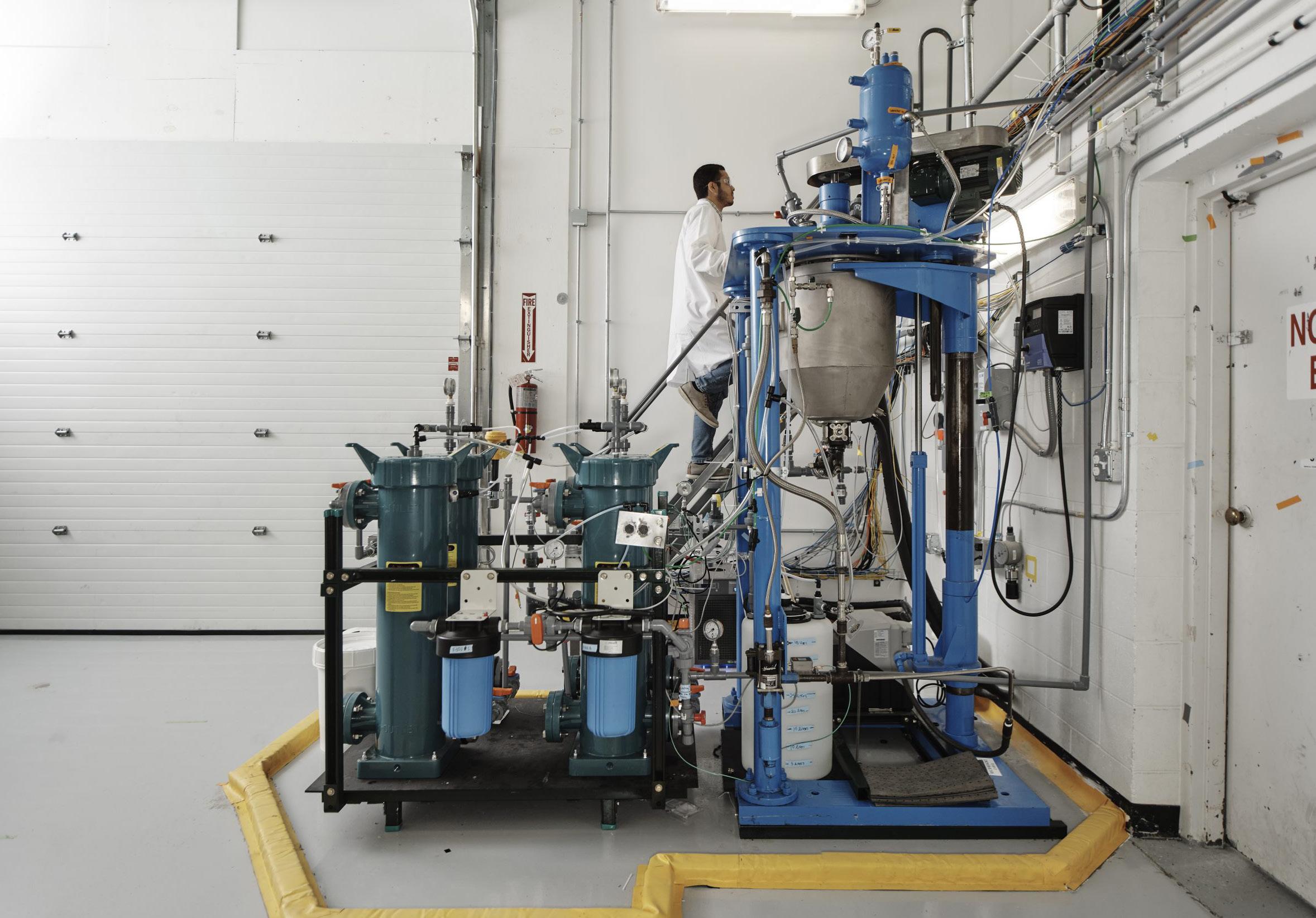
5. PROMETHEUS MATERIALS: BIO-CONCRETE FROM THE SEAFLOOR
Prometheus Materials takes a unique approach by utilising algae and biomineralisation to create ‘bio-concrete’. By biologically growing calcium carbonate instead of relying on quarried limestone, the startup aims to reduce the environmental impact of cement production. The process, inspired by natural processes like the formation of seashells, offers a promising avenue for sustainable concrete production.


4
Photo from www.prometheusmaterials.com
4. SUBLIME SYSTEMS: ELECTROCHEMICAL INNOVATION FOR LOW-CARBON CEMENT
Sublime Systems introduces an electrochemical process to drive cement production without high-temperature kilns. Using an electrolyser, the company extracts calcium from carbon-free rocks, minerals and industrial waste materials. The resulting cement eliminates the need for fossil-fuel-burning kilns, reducing emissions associated with traditional cement production.


5
77
Photo from www.sublime-systems.com
6. CARBONBUILT: ELIMINATING PORTLAND CEMENT FOR A CARBON-NEUTRAL FUTURE
CarbonBuilt has achieved a significant milestone by eliminating Portland cement in its concrete blocks, reducing embodied carbon by up to 100%. The startup utilises calcium-rich waste materials from industrial sources to create an alternative cement “binder”. By combining these ingredients and using CO2 curing, CarbonBuilt's technology dramatically reduces overall CO2 emissions associated with concrete production.


6
Photo
from www.carbonbuilt.com

7. NANOGENCE: ADVANCING CARBON-AVOIDANCE TECHNOLOGY
Nanogence is pioneering carbon-avoidance technology by leveraging smart catalysts in material science research. The eco-friendly catalysts enhance the formation of interlocking crystals in cementitious material, reducing carbon emissions by up to 40%. Nanogence's technology can seamlessly integrate into existing cement production processes without compromising product performance, offering an eco-friendly alternative that can be adopted throughout the supply chain.

7 79
Photo from www.nanogence.com
The customer obsession driving supply chain innovation at KPS
Jeff Monroe, Director of Supply Chain at KPS Global®, a leader in the walk-in cooler and freezer industry, offers insights into the company’s recent transformation and growth.
ased in Fort Worth, Texas, KPS Global® (KPSG) is an industryleading manufacturer of insulated panel systems, walk-in coolers and freezers. Beyond its highly adaptable product range, the company offers seamless installation and aftermarket parts for its global customers.
With five manufacturing facilities across the US and over 800

employees, KPS Global is the largest manufacturer of walkin coolers and freezers in North America. The company is exploring new markets in Latin America. But what is the secret to their success and growth?
Jeff Monroe, Director of Supply Chain at KPSG, joins us to discuss the supply chain innovation and sustainability strategy at the core
BUSINESS INTERVIEW
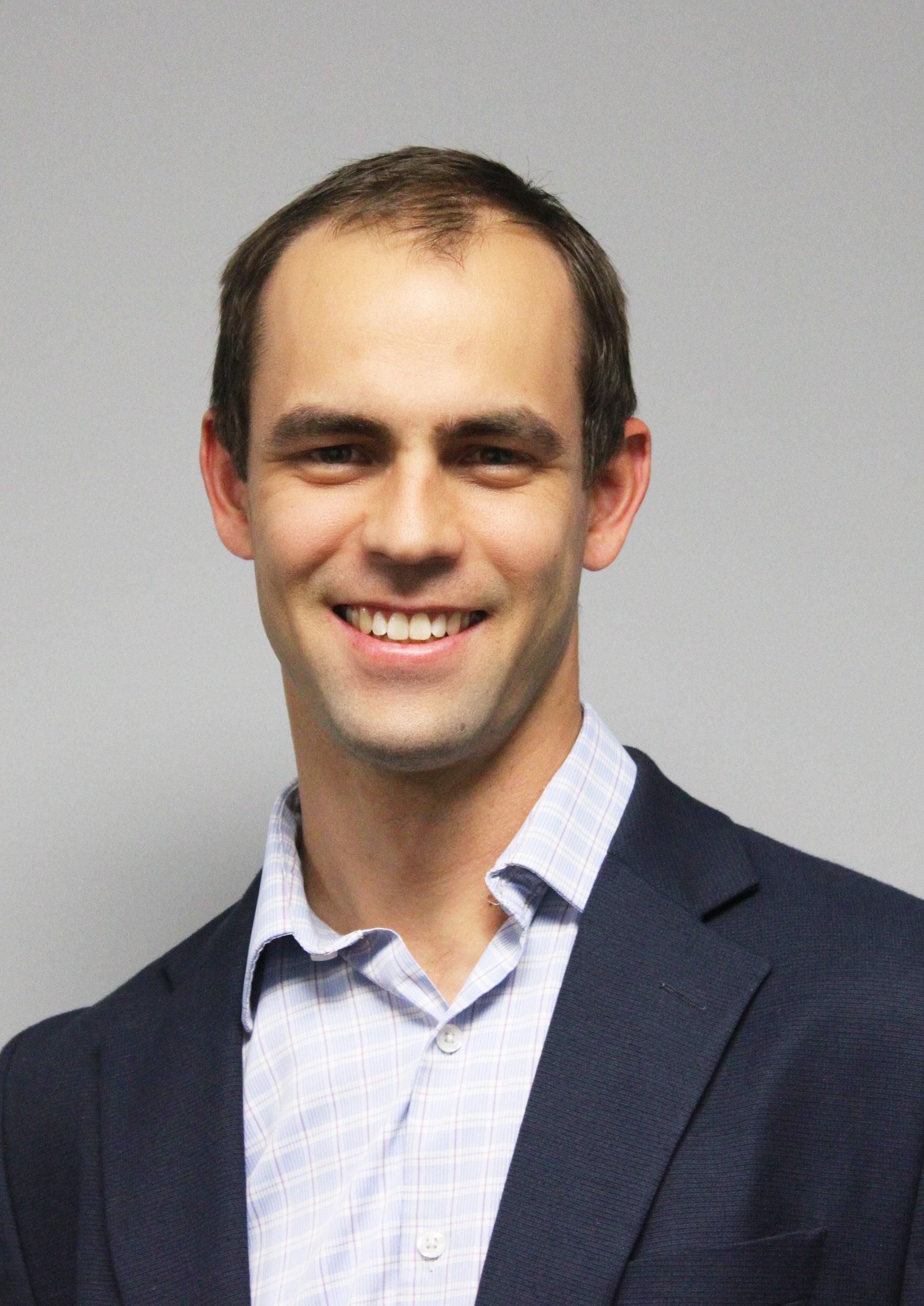
Global®
driving
of the company’s transformation in the past few years.
To understand the recent growth at KPSG, Jeff contextualises the journey as part of the company’s rich history of combining industry expertise spanning more than 75 years. “In 1947, Charles Needham led the walkin industry revolution in the US from his home garage,” says Jeff. “Many decades and company iterations later, the most recent manifestation of KPSG as we know it today launched in 2015 through the acquisition of Kysor Panel Systems from Manitowoc Company, Inc. and the Hill Phoenix Walk-ins Division from Dover Corporation.”
“We are the largest manufacturer of walk-in coolers and freezers in North America, serving domestic and global customers alike,” says Jeff. “Our customer obsession is what sets us apart and we channel this focus ‘from cradle to grave,’ as we say. We have our own design team, in-house engineers, installation team, and parts and service experts – we do it all and we always find a way to say ‘yes’. Our capability to scale across the entire lifecycle of an order enables us to do things others can't – something we pride ourselves on as a company.”
According to Jeff, KPSG has embraced supply chain innovation and transformation to propel the company forward in recent years.
“Some businesses haven't quite grasped the potential of the supply chain and added value it brings to
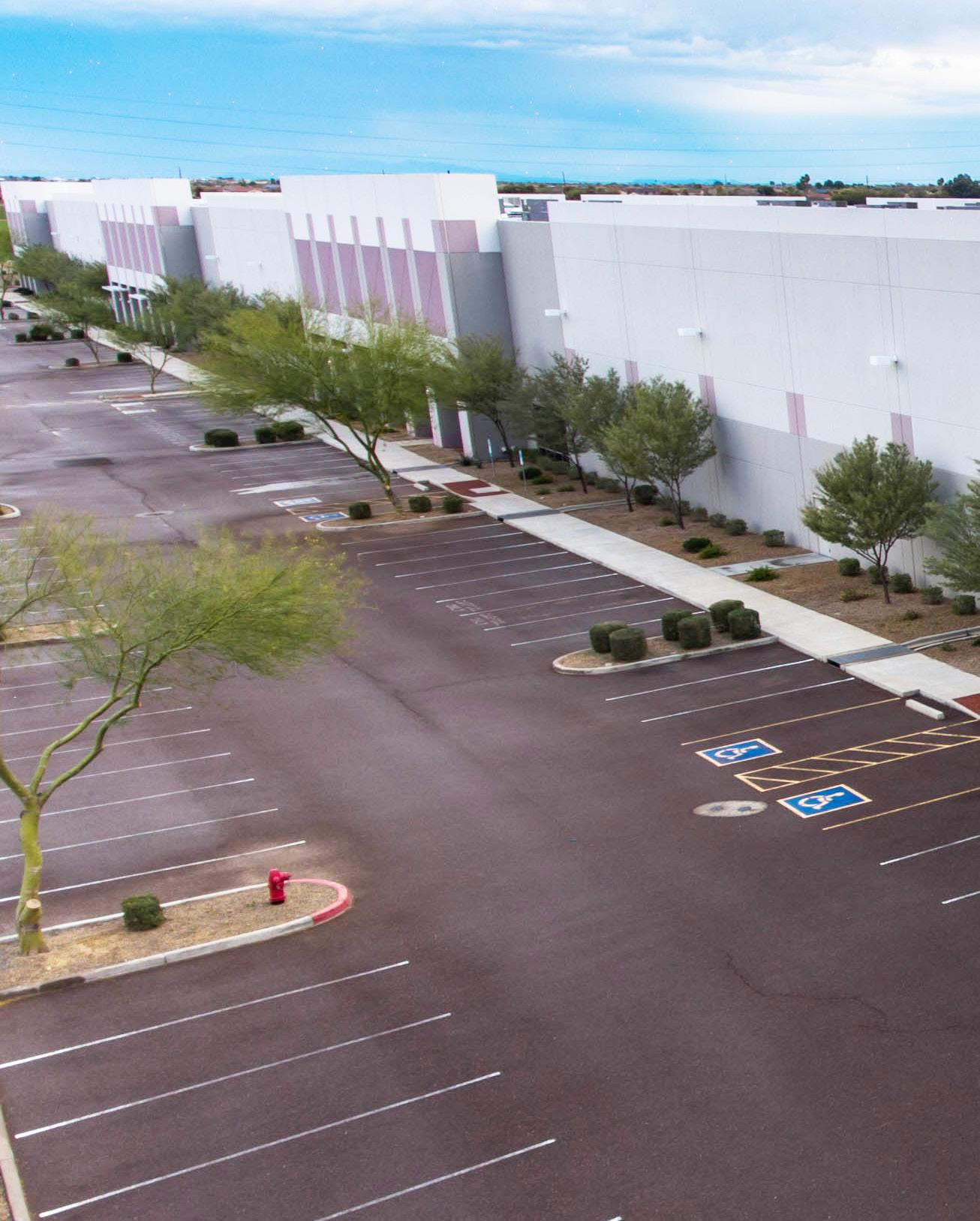
a business,” explains Jeff. “But at KPSG we've taken numerous steps to transform our supply chain for maximum benefit to the business and our customers and it's been quite a journey.
“If you look at where we were five years ago, we were using old operating systems and information transparency just wasn't there. So we embarked on a complete enterprise resource planning (ERP) transition. It was a total makeover, and it wasn't easy. But that decision has enabled us to do things that we weren't able to do before. It's given us a lot of data, and we are now interpreting it in a way that makes sense to us as a business.
“But where that then falls into the supply chain, it's another flow of information. The new system has
82
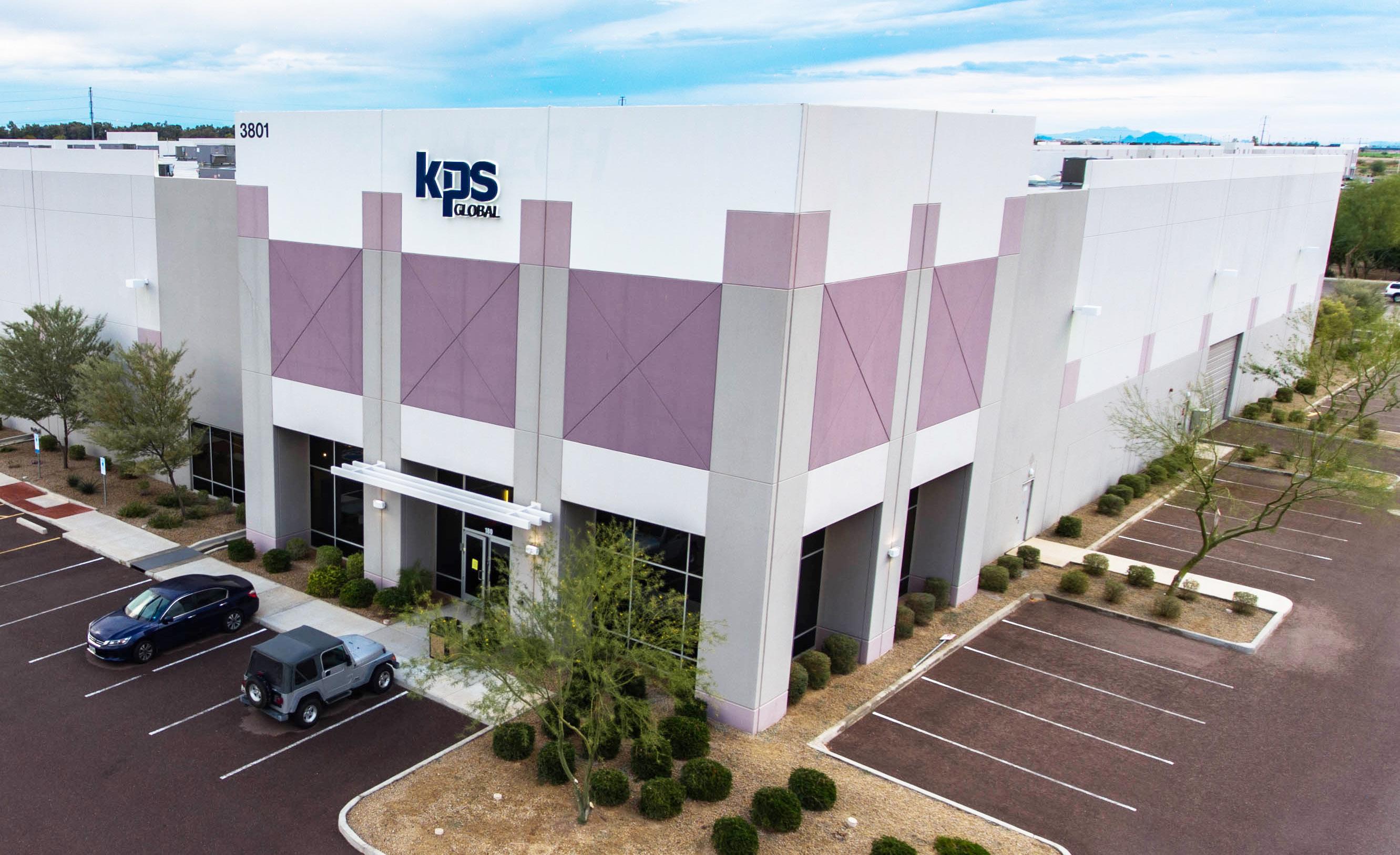
enabled us to provide a timely flow of information throughout the business and we now have more robust reporting capabilities. For instance, I can report on supplier performance or my own team’s performance. We weren't able to do that before and it sounds simple, but by embarking on that transformation we've been able to mature into sales, inventory and operations planning (SIOP).
“Unfortunately, our system doesn't have a material requirements planning system (MRP), but we've been able to work with RSM one of our valued vendor partners to help develop a tool that we've been using to catch demand.
“These are some of the tools that KPSG has developed to enable the supply chain function to flourish. But we are still open to fresh innovations and
we're looking into new technologies like AI. We've spent a fair amount of time exploring AI and it’s still in its infancy, but we see several opportunities there, for instance with the flow of information from our freight carriers to the rest of the business.”
Elaborating on the role of AI within the supply chain at KPSG, Jeff explains that the company is still on its transformative journey of trying out new tools, analysing the outcomes to see what works and iterating from these insights.
“When it comes to AI, we've looked at several avenues for exploration,” says Jeff. “Firstly, we are looking at how to improve forecasting. As it stands, I believe there's a lot of human emotion involved in forecasting models, regardless of
83
“We already had an excellent relationship with RSM as a business in general, but it was a welcome bonus that they happen to offer supply chain consulting and they have experience with SIOP systems”
how much we try to remove it. AI is valuable because it can separate forecasting from human emotion –but you have to train it properly.
“Secondly, we are exploring how we can channel AI to nurture the concept of ‘trust but verify’ with our vendor transactions. With the
sheer volume of transactions we handle with our vendors, it can be difficult to verify factors like pricing or lead time accuracy. We are assessing the potential of AI as an accountability tool to help us with this endeavour, alleviating us of mundane and time-consuming analytical work.”
Change is inevitable. As digital champions, we bring human insights powered by technology enabling you to take charge of change. Leverage the knowledge of 57,000 powerful minds in 120 countries who look beyond the ordinary to deliver extraordinary results. rsmus.com


RSM US LLP is the U.S. member firm of RSM International, a global network of independent assurance, tax and consulting firms. Visit rsmus.com/aboutus for more information regarding RSM US LLP and RSM International.
In KPSG’s recent journey of supply chain innovation and transformation, Jeff highlights two major projects showcasing the company’s significant progress which stand out for him.
“First I’d like to celebrate our SIOP project effort that we put together with our partners at RSM,” says Jeff. “We already had an excellent relationship with RSM as a business in general, but it was a welcome bonus that they happen to offer supply chain consulting and they have experience with SIOP systems.
“Before working on our SIOP project with RSM, we had our new ERP system in place, facilitating the flow of information, but we were still very much operating as individual business units. We identified there was room for improvement related to sharing information within the company. RSM came in and they sat down with us, interviewed colleagues across several business units for many hours and sought a broad understanding of how we operated. By doing so, they helped us perceive our pain points and then collaborated with us to work on our SIOP programme together.
“We've been running the SIOP programme for about a year now and it has enabled us in the supply chain team to communicate, in a formal way, with the business on what the rest of the business really needs to know. It’s also allowed us to expand our forecasting capacity from 6 weeks to 12 months. Ultimately it has allowed us to share information and talk as business units, but more importantly as partners, pulling together in the
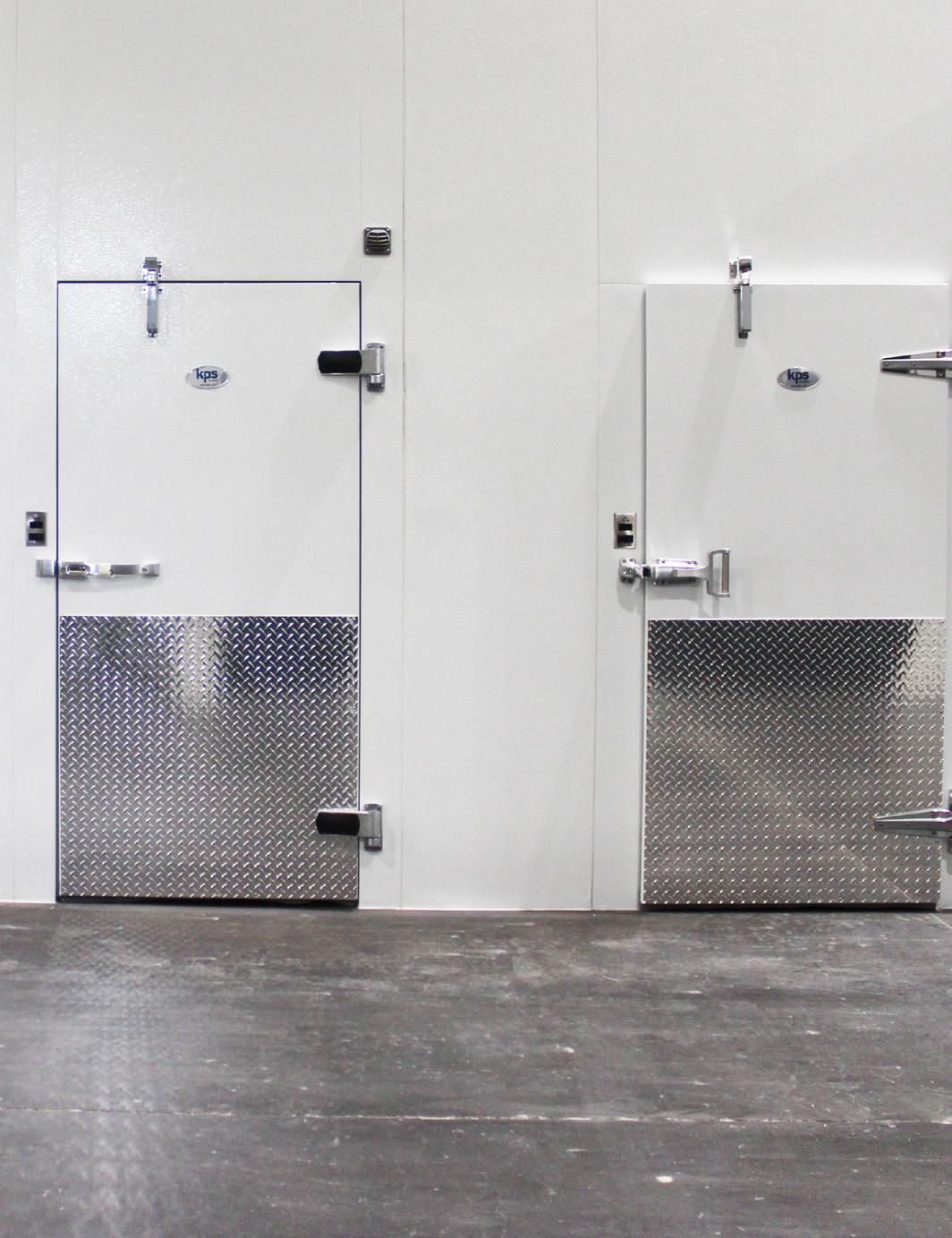
same direction towards a common goal. This has been an incredibly rewarding project to work on.
“The second aspect of our transformation I’d like to highlight emerged from the SIOP project because it catalysed continuous improvement elsewhere in our supply chain operations – specifically in our data and analytics approach. As mentioned, our new ERP system lacks MRP functionality, but RSM helped us pivot in light of this and explore the potential of Microsoft Power BI. It was an interesting avenue to explore, but it’s automated, we all have access to it plus it saves a tremendous amount of time in terms of sharing information and gauging demand with our plants.”
Reflecting on the progress made by the supply chain department at KPSG in recent years, Jeff emphasises
85
that the transformation journey has unfolded in conjunction with a concerted effort to strive for sustainability at the company.
“We're trying to be good stewards wherever we are, whether that's with our people through safety and promoting a supportive work culture, or the general products that we use and how we operate,” explains Jeff. “For instance when it comes to materials, there are three major components to our panels and products: metal, lumber and polyurethane. In addition, hydrofluorocarbon (HFC) is a major commodity in our industry, used as a blowing agent. We switched from HFC to hydrofluoroolefin (HFO) as an early adopter, drastically reducing the global warming potential (GWP) of our products. Here, we’re trying to be the leaders in the industry and lead by example, to encourage other companies to do the same and embrace sustainable materials.
“Another crucial dynamic to our sustainability agenda is the use of recycled materials within our systems and products. We have incorporated recycled materials which do not impact the performance of our products, but it helps to reuse some of the components that go into our daily production.
“We are also embracing sustainability in the development of new products. One of them,

86

87
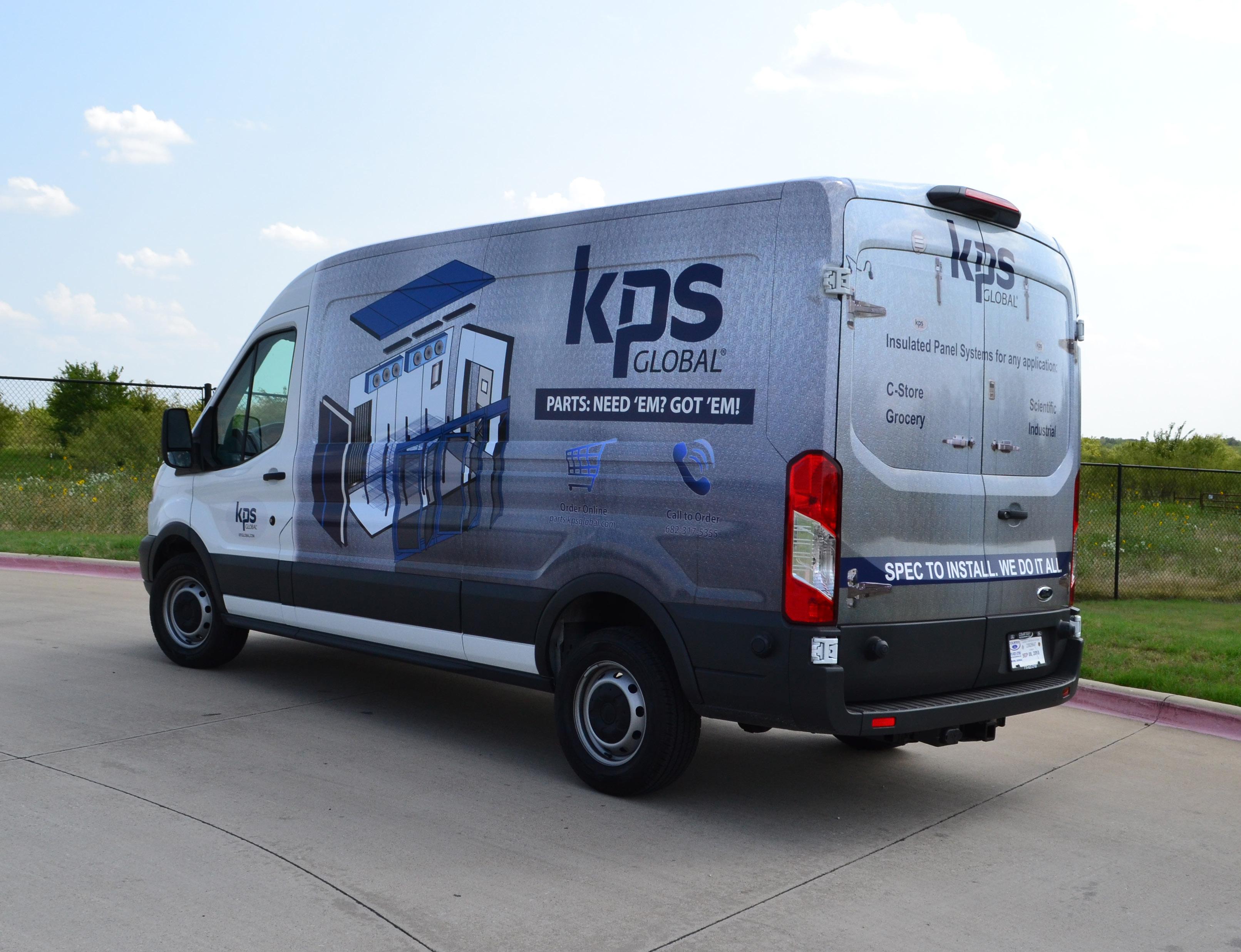
for instance, we call FUSIONFRAME®. Within our industry, new developments are somewhat rare given how established the sector is. But we are tremendously proud of FUSIONFRAME®, which came out a few years ago. Instead of using your standard two-by-four or twoby-six lumber, or what we call highdensity rail (which is high-density polyurethane) for the frame of a walk-in unit, we merge the two in FUSIONFRAME®. Here, the lumber we're using is sustainably sourced. The environmental credentials of the materials were a deciding factor in our efforts while developing this product. Sustainability is very much at the front of our minds, and we want to be leaders in helping move the industry forward to a more sustainable approach.”
But the sustainability agenda at KPSG is not limited to the company’s internal operations, it extends outwards in the approach the business takes to its partners, suppliers and customers.
“We work with two very large polyurethane suppliers and in every one of our meetings with them, we're talking about sustainability,” says Jeff. “We also have to be aware of the relevant government regulations when it comes to the R-value of our products, which is a measurement of thermal transfer and how well a material resists the transfer of heat. In a panel, we have to be able to sustain certain levels of performance but it also reflects our value of trying to help our customers reduce energy consumption. So we're always
88
“UFP have come to us with numerous options and opportunities, and we value how they helped us to source a little bit better and more sensibly”
looking at our panels and products through the lenses of how they're produced, considering not only the environmental impact generated by us but also our suppliers, while simultaneously taking into consideration the amount of energy that our customers have to consume.”
Another consideration for KPSG within its sustainability strategy is the packaging of its products and parts.
Here, Jeff lauds KPSG’s partnership with UFP Packaging (UFP).
“At our last Supplier Summit, when we discuss where we’re going as a business and reflect on the prior year’s performance, we present various performance awards to our suppliers,” explains Jeff. “UFP was the top performer among our raw material suppliers, an accolade they have now won two years running. We base our choice on delivery, quality,
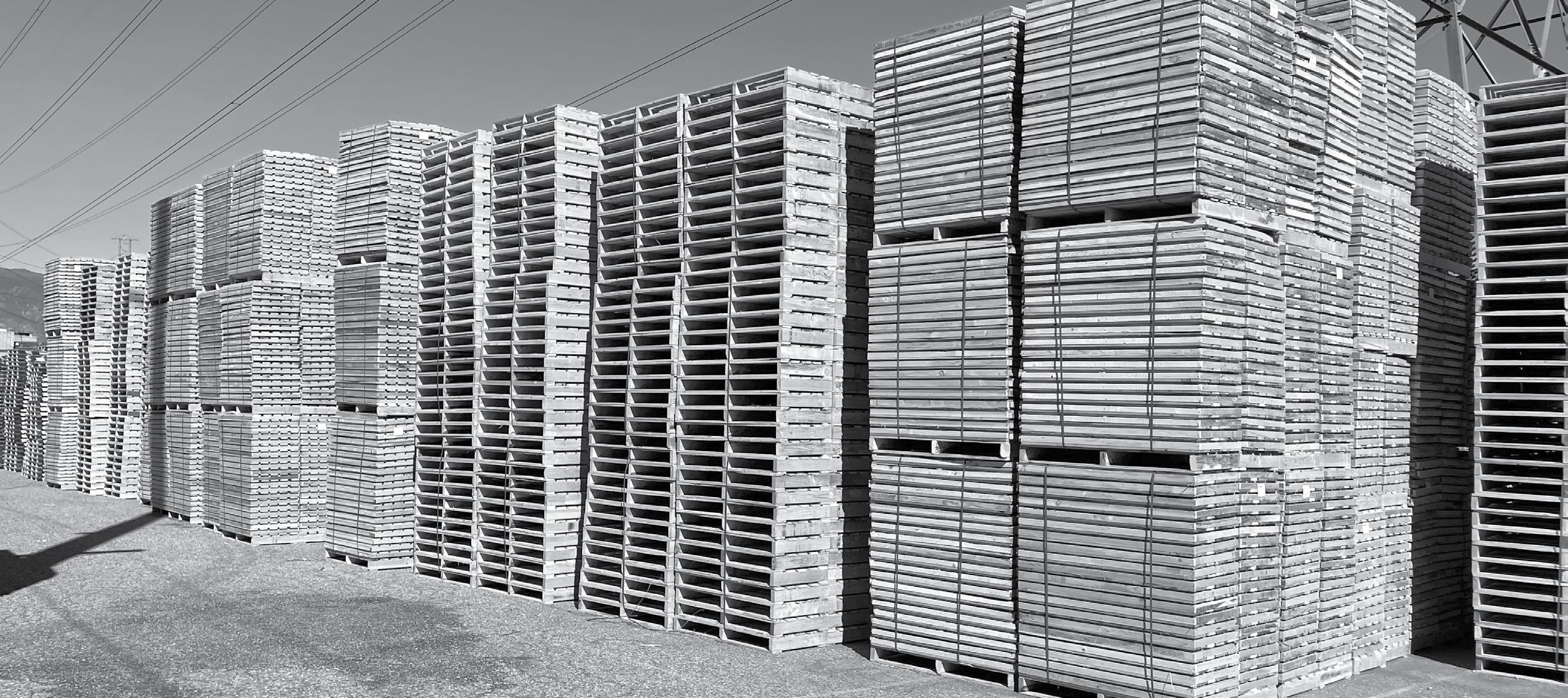
THE TOTAL PACKAGING SOLUTION



Could you benefit from a single source for lumber, crates, pallets, labels, films, corrugate and more?
Working together, you’ll have access to our nationwide network of design engineers, plants and testing labs. We’ll examine your entire packaging system, discover pain points and bottlenecks, and provide you with a total packaging solution.


89
(+1) 855.435.9359 SCHEDULE A FREE CONSULTATION
“We are all invested in the success of the business and it has been wonderful to see my team and other departments spanning the company all pull together in my time at KPSG”
price, responsiveness and a range of factors we value from our partners.
“UFP have come to us with numerous options and opportunities, and we value how they helped us to source a little bit better and more sensibly. On top of that, they're also helping us reduce the volume of fibre from lumber we use by working with us to develop new packaging solutions that will reduce this dynamic, but still protect our products appropriately.
“Representatives from UFP will visit our facilities two or three times per week, walk the floors and get to know our business. I rely on that spirit of deep collaboration from vendor partners, because I know I can trust UFP to see how we’re doing things and make constructive suggestions on how to improve our efficiency or effectiveness as a business.”
So what does the future hold for KPSG as a company in the coming years in terms of its growth plans?
“What motivates and energises me is the opportunities we have to shake up a well-established industry,” beams Jeff. “Our CEO, Mike Eakins, is doing
precisely what a CEO should be – he’s the visionary pushing us forward. He's looking ahead and exploring how our products can be used in other applications or how we can reach new markets and also create new markets.
“Our growth won’t be in standard grocery stores,” predicts Jeff. “It will 100% be in new product development. We are working on several new projects right now with the largest retailers in the world to use our panels but in a non-traditional way. It’s an exciting time to be at KPSG, establishing new ways to serve our customers in innovative and impactful ways.”
Wrapping up our conversation, Jeff takes a moment to express deep gratitude for his team and the company culture more broadly.
“We are all invested in the success of the business and it has been wonderful to see my team and other departments spanning the company all pull together in my time at KPSG,” says Jeff. “It’s the people who make KPSG and it’s a pleasure to be part o that.”
To learn more about KPS Global, visit kpsglobal.com.
90

ADDED VALUE
Family and faith
When asked what enriches his life professionally or personally, Jeff doesn’t miss a beat and celebrates his family and faith, two fundamental pillars in his life.
“First and foremost, for me, it's about my family. I've got four kids and I've been married for 13 years and they’re my why. They’re why I do what I do, it's all for them, and they bring so much joy to my life. Next is my faith –I’m a member of the Church of Jesus Christ of Latter-Day Saints. These two pillars form who I am and how I identify as a person.”
Reading recommendations
Jeff likes to read books in his spare time or listen to audiobooks on his commute.
“I love to read because it helps me to see things in a different light or extract valuable lessons,” says Jeff. “Reading gives you these lightbulb moments. I take great joy thinking how what I learn could apply at home, with my family, at work, wherever it may be.”
He recommends one of his most recent reads – Extreme Ownership: How U.S. Navy Seals Lead and Win by Jocko Willink and Leif Babin.

“They’re pretty intense in their approach to life, but there are truths and takeaways embedded into the book which readers can take and apply to their own lives which I think are incredibly useful,” says Jeff. “For instance, a couple of the big ideas that resonated with me are how we can reconceptualise challenges as opportunities and how we have more control over situations than we think.
“Another book I’d like to recommend that I finished recently is called The Psychology of Money: Timeless lessons on wealth, greed, and happiness by Morgan Housel. The author grapples with some important questions. How do you manage your time? What is most important for you? Is it being rich or is it something else? It’s a fascinating and eye-opening book which encourages reflection for the reader.”
Connect with Jeff
91

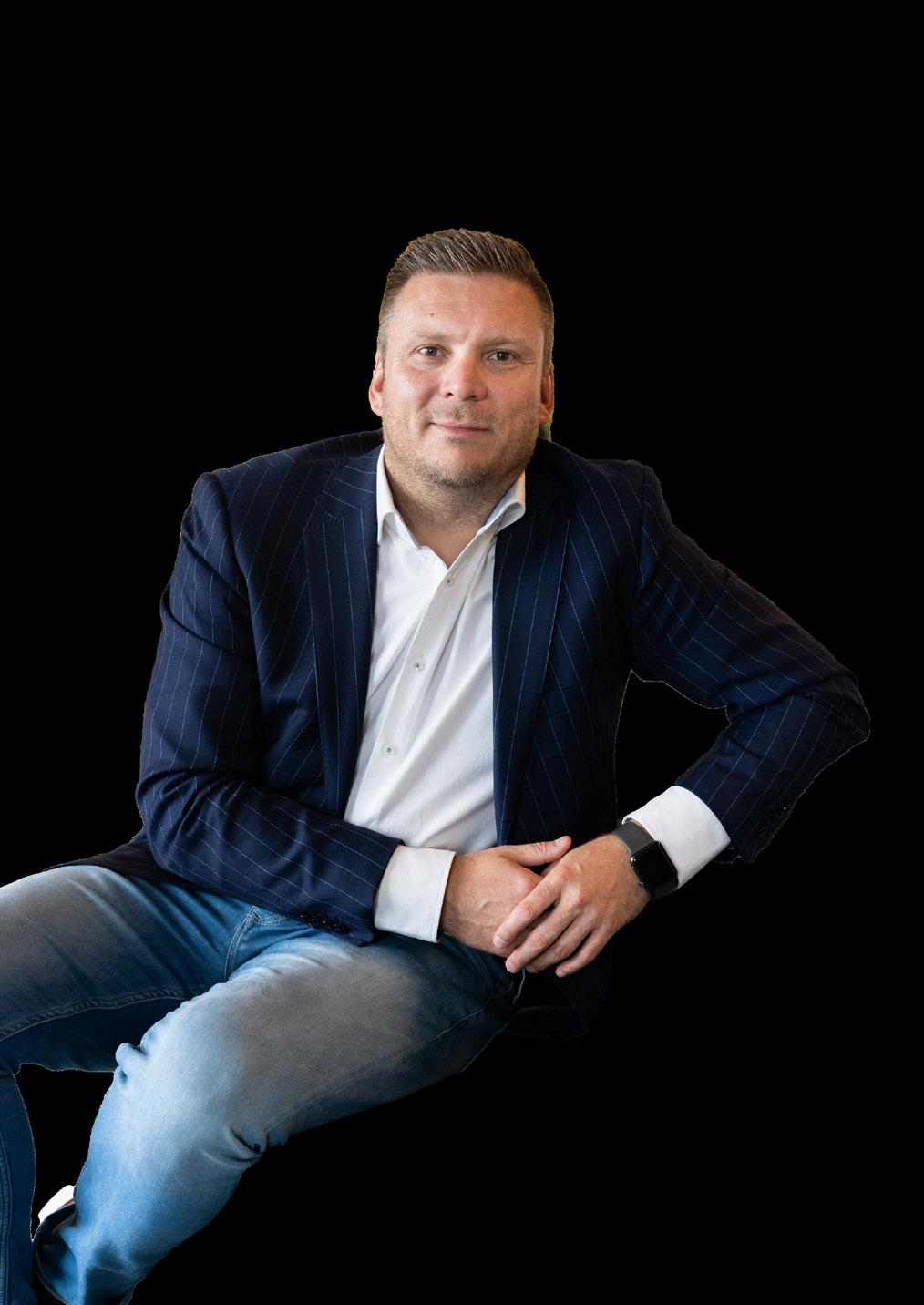






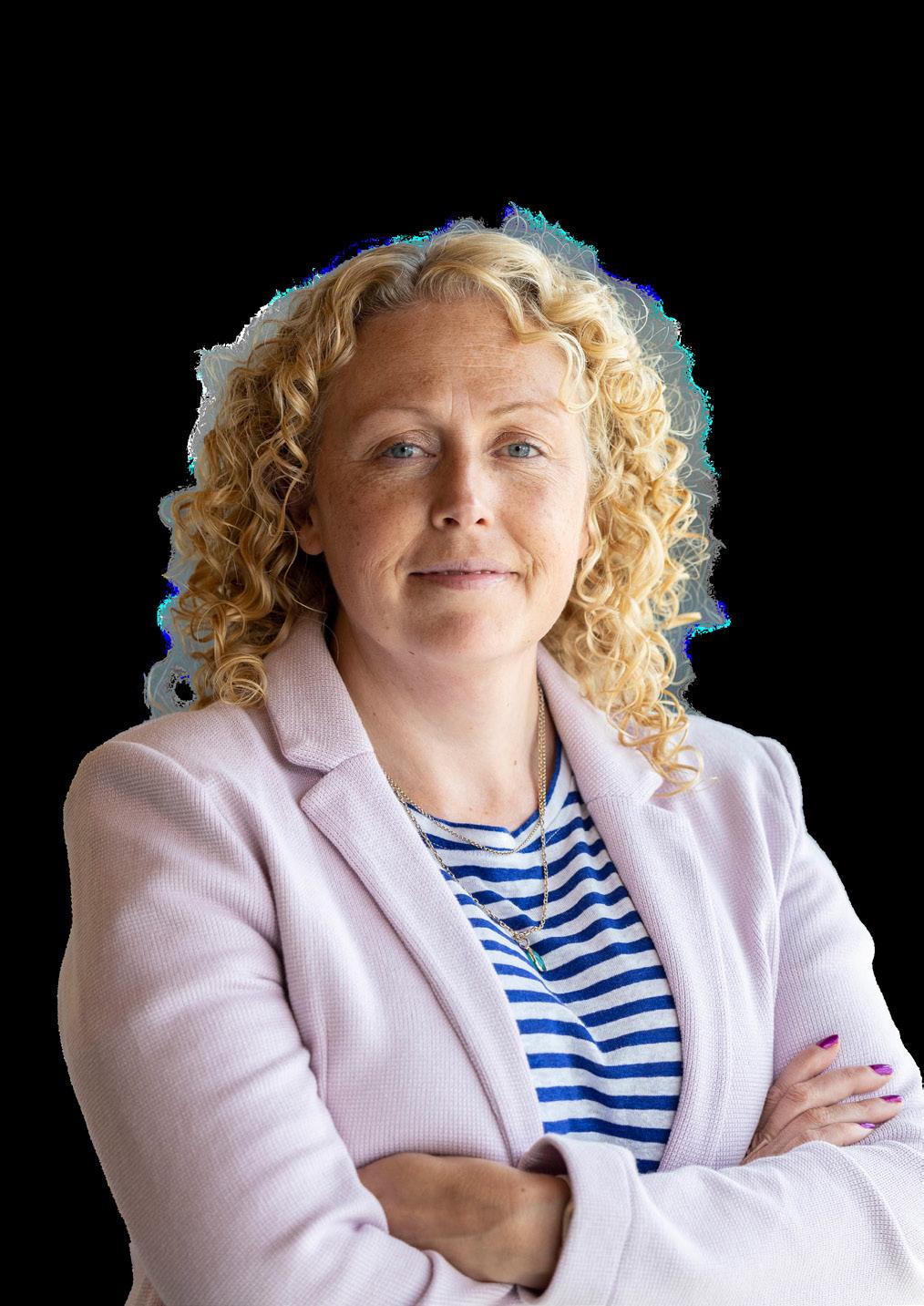



Coppelmans to discuss the innovative intelligence at HERE Technologies the future of connected mobility with transport solutions at Siemens Mobility. MIGUEL PEREIRA


"The team were professional and diligent throughout"
Leigh Feaviour, CTIO for BT’s Supply Chain
"Absolute pleasure working with the Digital Innovation team"
Mun Valiji, Chief Information Security Officer at Sainsbury’s
"A highly professional approach"
Andy Brierley, Vice President, Cloud Application Modernisation at IBM
"Digital innovation Magazine is a very flexible and professional team"
Kim Larsen CTIO, T-Mobile Netherlands


Predicting disruption: how new technologies can build a more efficient supply chain
The latest LeanDNA survey reveals key steps supply chain leaders can take.
SUPPLY CHAIN

Leading intelligent supply chain execution platform
LeanDNA has recently published a survey in collaboration with Wakefield Research. his survey assessed 250 supply chain, inventory and planning executives – revealing startling inefficiencies in the supply chain sector.
Most notably, supply chain professionals spend nearly 14 hours per week – almost two full workdays – manually tracking data. While most supply chain executives plan to increase investments in proactive supply chain management (92%), over three quarters (76%) do not currently have a predictive view of supply and demand.

The survey also found that the most highly cited concerns among supply chain professionals included supply chain shortages (56%), public health crises (52%) and natural disasters (50%) — all of which indicate rising concerns around potential external disruptions that supply chain leaders cannot control.
The core reason behind these increased concerns appears to be current tech stacks not supporting real-time data, with nearly half of respondents citing this as a barrier. For some, upgrading their tech stack doesn't seem like an option:

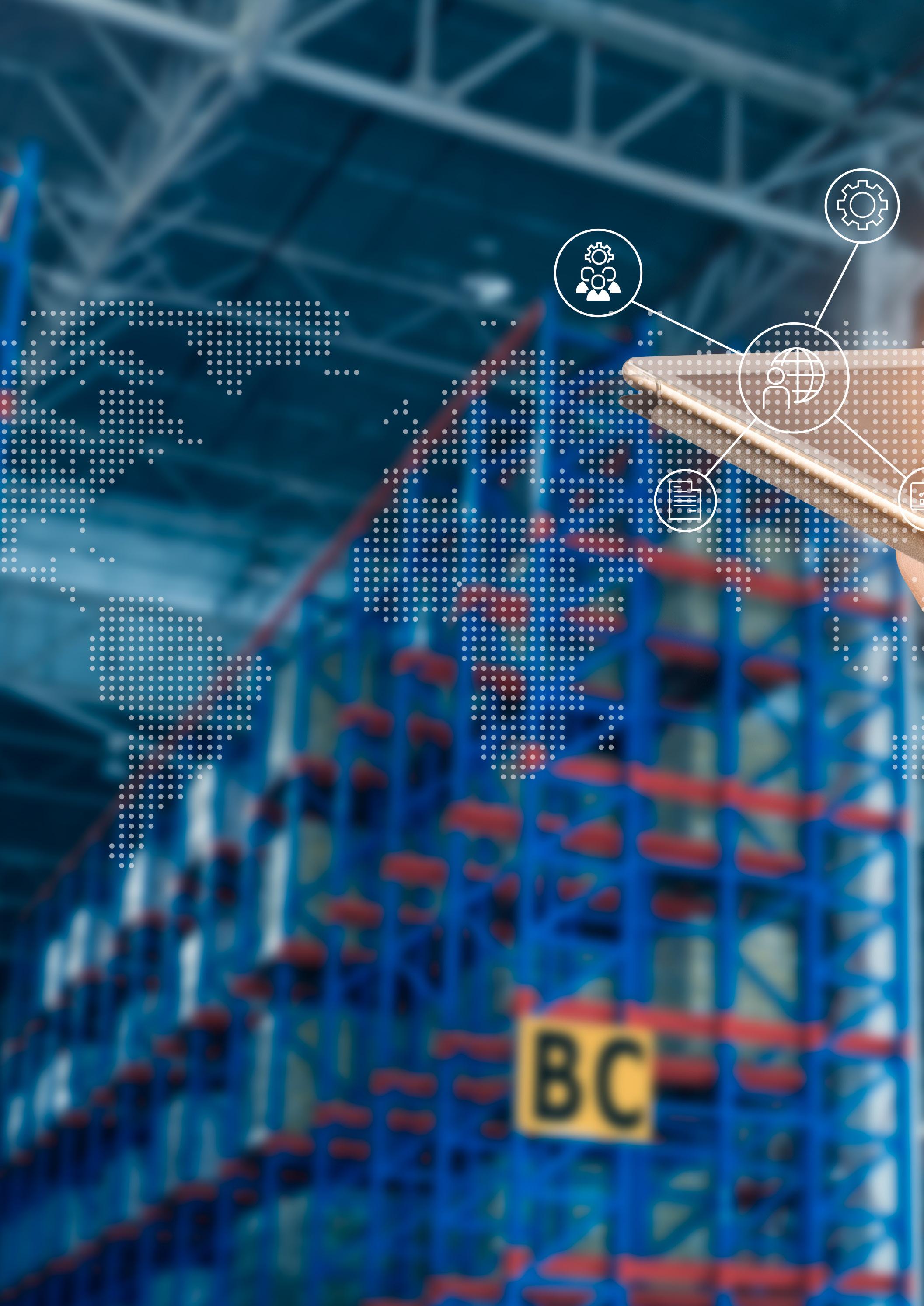

“Many supply chain leaders are now focusing on gearing up for future disruption”
48% report their current system is too ingrained, and another 26% believe their organisation can't afford the implementation disruption.
However, many supply chain leaders are now focusing on gearing up for future disruption. In fact, 92% of supply chain executives are planning to ramp up investments in preparedness strategies. Meanwhile, 87% are focused on resilience as a high priority, including 41% who put it at the top of their list.
An impressive 86% of supply chain leaders report their organisations have already made major changes to their processes or tech stack to improve preparedness for future major supply
chain disruptions, with onethird having gone through a complete overhaul. This includes:
• 41% have diversified their supply base.
• 39% are identifying new or better vendors.
• 36% are in the process of reskilling their current workforce.
• 32% have partnered with third-party logistics experts.

Another major trend is that supply chain executives are now putting tech in place to support their people. More than a third (37%) have deployed digital twin and other simulation technologies and more than a quarter (26%) have added on to enterprise resource planning (ERP) software for more functionality.
Perhaps most importantly, leaders want to be able to see
more clearly what they have now, and what could be on the horizon. In fact, nearly half of supply chain executives have increased supply chain visibility to prepare for the next major disruption.
The value of data cannot be understated. It can do more than prepare for disruptions, it can allow businesses to become more efficient with their resources. With real-time data

that could inform their business decisions, supply chain executives say they could improve logistics and inventory management (47%), identify changes in demand (45%) and enhance collaboration (44%).
With companies planning to increase their investment in preparedness, there is a clear opportunity to embrace advanced analytics. By doing so, businesses can not only save valuable time but also gain a predictive edge in
“We help companies improve on-time delivery and working capital levels through inventory visibility”
Richard Lebovitz, CEO of LeanDNA

an increasingly volatile global market.
“As an intelligent supply chain platform that empowers manufacturers to prioritise and collaborate to resolve critical material shortages and excesses, LeanDNA enables teams with a single source of truth for managing complex global supply chains,” says Richard Lebovitz, CEO of LeanDNA. “We help companies improve on-time delivery and working capital levels through inventory visibility, recommended actions and real-time collaboration with suppliers."
Source: LeanDNA The complete survey is available here.

Stay ahead of the curve with the go to digital platform for senior supply chain executives.






Exclusive interviews with industry leaders
Captivating features on the latest supply chain trends
The industry events you simply can’t miss


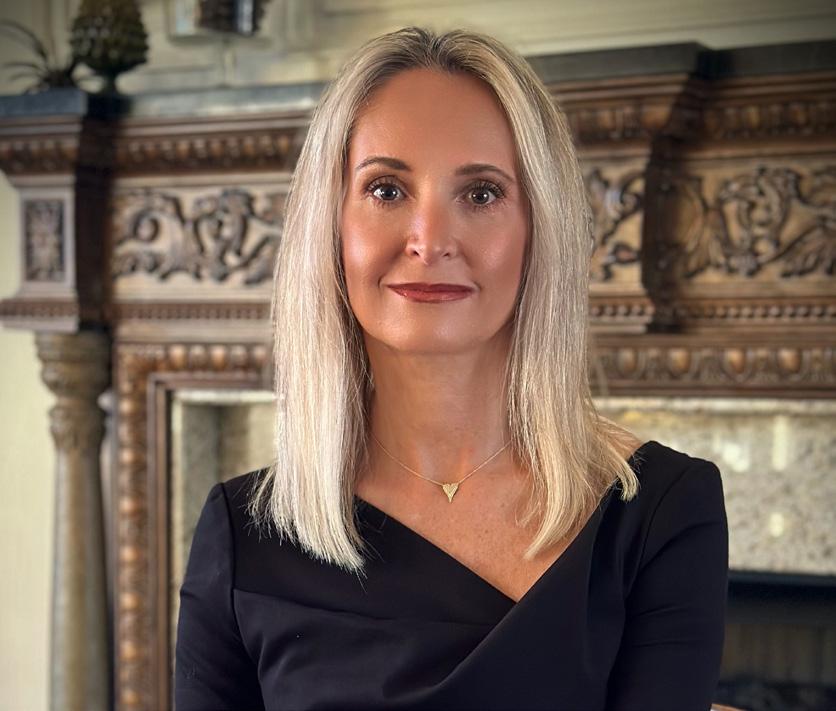

Join our community

104



Let’s collaborate…

CHAIN is a specialist technology platform with over 211,300+ readers.
Our community consists of C, V and D level executives from a wide range of industries. A unique blend of thought leadership interviews and features that cover digital transformation, supply chain, procurement, logistics, technology, AI and sustainability.




Digital Magazine
Website
Newsletters


Demand Generation
Whitepapers & Research Reports
Webinars - Hosting & Promotion




Team up with CHAIN and build media programs that deliver.
Find out more

Global insurance insights: Embedding sustainability and innovation into procurement


BUSINESS INTERVIEW
 Jaime Paiva, Head of Procurement and Vendor Management EMEA, and Chris Minter, Sustainable Sourcing Lead of Zurich Insurance Group on striving for sustainability in a service-driven industry.
Jaime Paiva, Head of Procurement and Vendor Management EMEA, and Chris Minter, Sustainable Sourcing Lead of Zurich Insurance Group on striving for sustainability in a service-driven industry.
Leading multi-line insurer Zurich Insurance
Group (Zurich) serves people and businesses in more than 200 countries and territories.
ounded 150 years ago, Zurich is transforming insurance. The Group has about 60,000 employees and is headquartered in Zurich, Switzerland. In addition to providing insurance protection, Zurich is increasingly offering prevention services such as those that promote wellbeing and enhance climate resilience.
Reflecting its purpose to ‘create a brighter future together,’ Zurich aspires to be one of the most responsible and impactful businesses in the world. It is targeting net-zero emissions by 2050 and has the highest ESG rating from MSCI.
In 2020, Zurich launched the Zurich Forest project to support reforestation and biodiversity restoration in Brazil.
One of the ways Zurich strives for sustainability as a company is through its procurement strategy. Here to tell us more about Zurich’s approach are Jaime Paiva, Head of Procurement and Vendor Management EMEA and Chris Minter, Sustainable Sourcing Lead.
Jaime has been with Zurich for 12 years and heads up the procurement department in the EMEA region. Chris works in the same team as Jaime, focusing

108
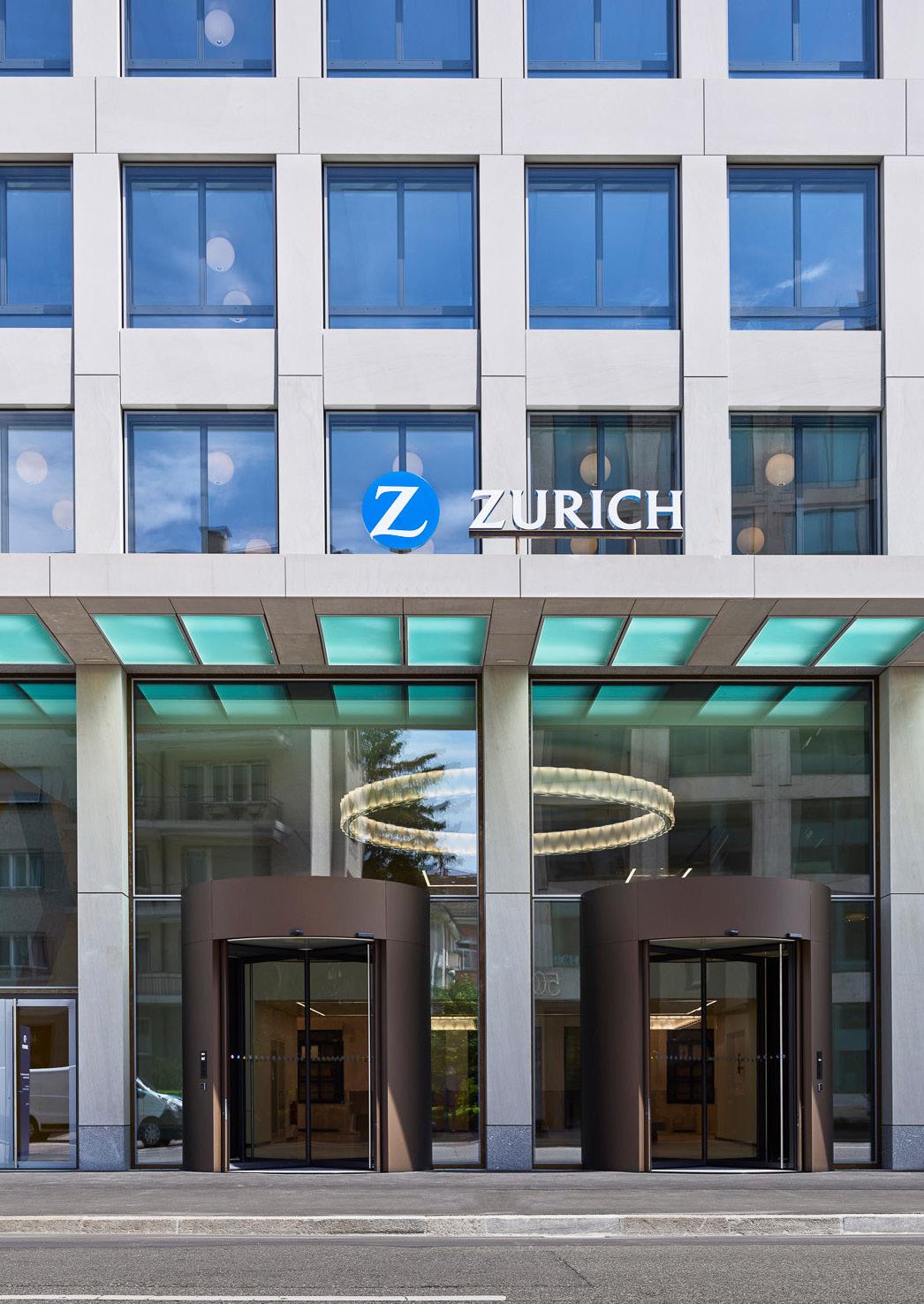

specifically on sustainability within a supply chain context.
So how is Zurich pioneering sustainable procurement and sourcing in its operations?
“As a large global company, we have an obligation to act responsibly and actively manage the ESG risks that we have in our supply chain,” begins Chris. “But we also aim to go beyond that and create positive environmental and social impacts, acting as a force for good in our operations. Our organisation has the ambition to be one of the world's most responsible, impactful businesses. The only way we can realistically achieve this ambition is if every function within our organisation implements or integrates sustainability considerations into the way that they run their relevant functions or business units, and that extends to our supply chain.”
While Zurich faces fewer risks in its supply chain than say manufacturing or production companies where there might be more environmental, legal or human rights factors, Chris emphasises that issues can still arise and it’s important to have measures in place because of this.
“Working with Prewave enables about what's happening with we have many suppliers around helps us monitor them in a keeping us on the front foot
Here, Zurich deploys technological innovation to support its supply chain strategy.
“We want to be proactive with managing these risks and this is where Prewave comes in, by providing us with their AI risk intelligence platform,” says Chris. “Prewave helps Zurich to proactively monitor its supply chain using an AI algorithm. This profiles
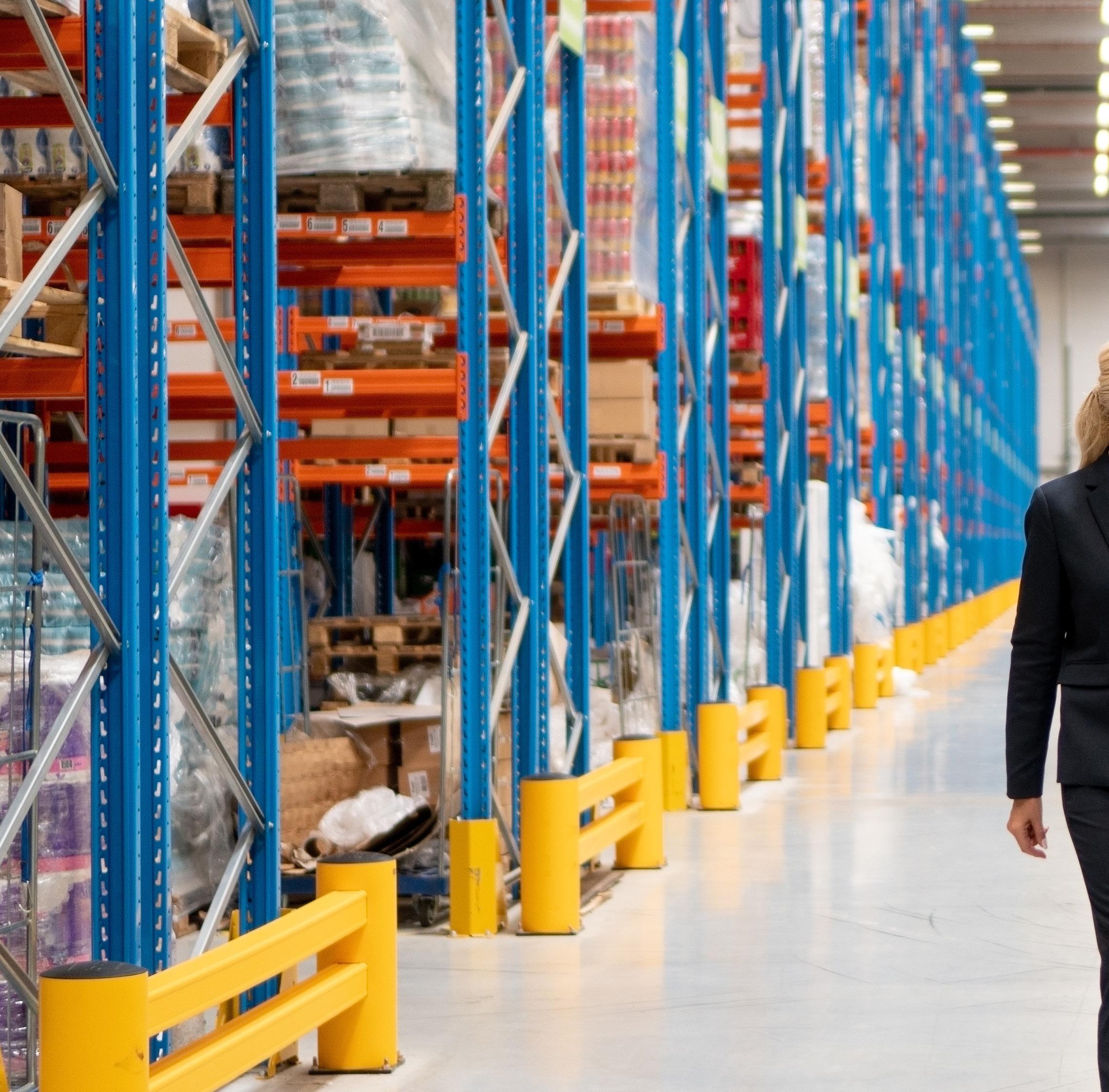
110
us to keep informed with our suppliers because around Zurich and Prewave a resource-effective way,
if there are issues arising”
news sites, NGO reports and social media looking for potential events that are either being reported or are being suggested could happen in the future – bringing those to our attention.
“So for example, if a supplier is identified by a government entity for human rights issues in a factory or if a trade union reports issues with
their workers in a particular place, we would be proactively notified about it on an almost real-time basis.
“I have a list of companies that we work with, that I asked Prewave to put on their radar and notify me about,” shares Jaime. “If issues or notifications arrive, their technology has a way of removing the noise. All the hits that they get enables
“Working with Prewave enables us to keep informed about what's happening with our suppliers because we have many suppliers around Zurich and Prewave helps us monitor them in a resource-effective way, keeping us on the front foot if there are issues arising.
“With their platform operating in the background, digesting content in multiple languages across the internet but localising this for the user’s native language, we have confidence that if there's something that we should know about, that we do. This enables us to take proactive steps with the supplier, so we can tackle and mitigate risks accordingly.”
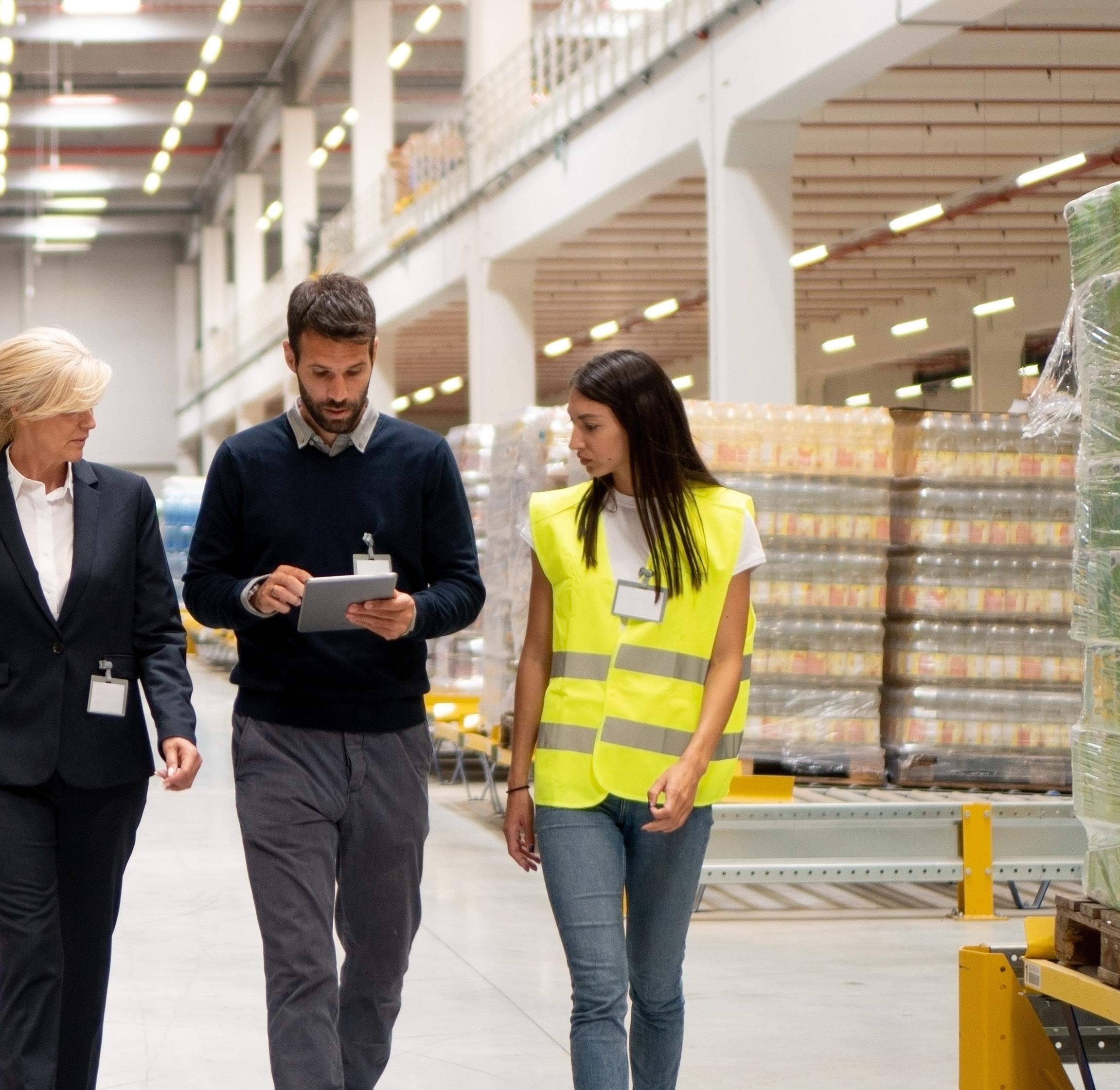
From a user perspective, Jaime lauds the Prewave platform, emphasising its intuitive user experience.
111
foot


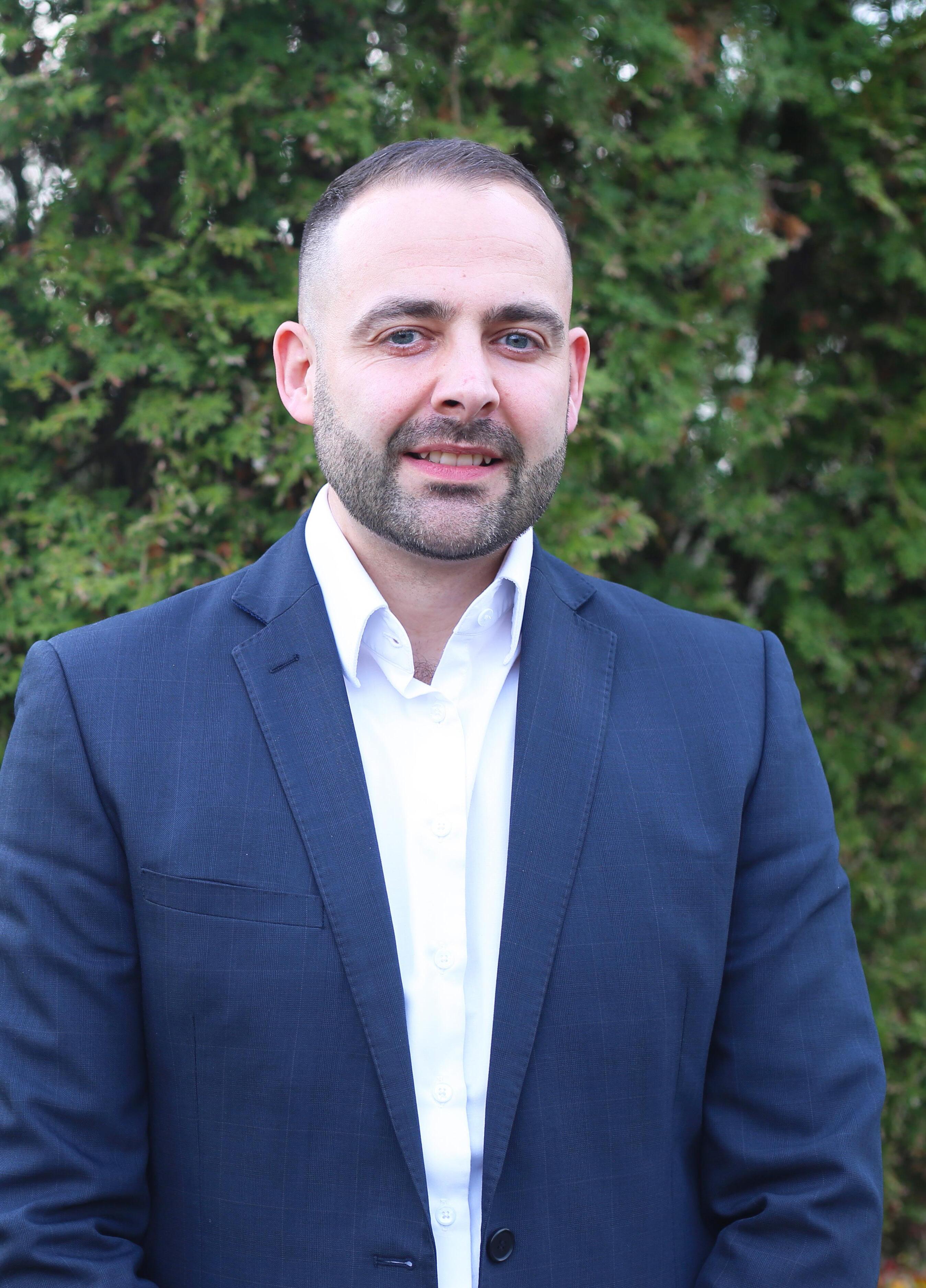
 Chris Minter, Sustainable Sourcing Lead
Chris Minter, Sustainable Sourcing Lead

and report back to us are relevant and helpful. Otherwise, my inbox would be bombarded. To me, this is what differentiates them from competitors or similar solution providers.”
Chris explains how embedding Zurich’s core values throughout the entire sourcing lifecycle is the foundation for how the procurement function operates at the company.
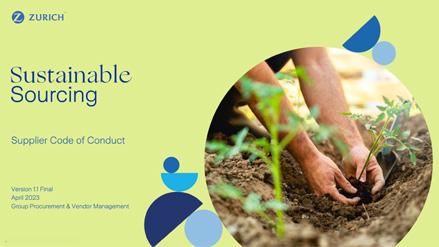
“We provide online training for our suppliers through our website with videos explaining our Supplier Code of Conduct, and we also offer self-assessments to determine whether they meet these standards. For suppliers that don't meet our expectations, we provide
“Our Supplier Code of Conduct contains a set of expectations that we set for our suppliers globally. Those expectations are based upon practices at Zurich that we've implemented in our own operations or align with the ambitions that we've set”
Chris Minter, Sustainable Sourcing Lead
“The primary way we do this is through our Supplier Code of Conduct,” says Chris. “It contains a set of expectations that we set for our suppliers globally. Those expectations are based upon practices at Zurich that we've implemented in our own operations or align with the ambitions that we've set. We're establishing expectations for our suppliers based upon things that we believe in and look to our suppliers through the lens of the standards that we set for ourselves.
additional free resources, training and tools to help them meet these standards.
“For example, we offer free access to the Normative Business Carbon Calculator via our website and a blueprint that guides companies on how they can reduce their carbon footprint. We also provide a template human rights statement for companies to adopt if they lack a clear human rights standard that meets our position. Our approach is to use
115
the Supplier Code of Conduct here >
Read
our influence to nudge suppliers towards driving up standards and taking responsibility for their own sustainability.”
Building on Chris’s description of Zurich’s Supplier Code of Conduct, Jaime adds that sustainable sourcing and supply chain strategies at Zurich are being deployed to meet broader business goals.
“We have moved on from the beginning where the principle was ‘do no harm,’ to where we are today, which is aiming at proactively doing good,” says Jaime. “We must set the bar high because by aiming high we inspire and encourage our supply chain to join us on the journey towards making positive impacts. The journey is far from complete, but we are making strides towards it every single day.”
At Zurich, sustainability is more than an environmental responsibility, it extends to social impact as well. Zurich embraces
its global leadership position to help develop commercial relationships between corporate organisations and social enterprises to generate positive social impacts.
The World Economic Forum defines social enterprises as “profitgenerating organisations that apply commercial strategies and innovative approaches to social challenges. Social entrepreneurs centre their business models on achieving social and environmental goals, emphasizing impact over profit maximisation.”
“Our social procurement initiative is one of the pillars of our sustainable sourcing programme,” says Jaime.
“Addressing the ‘S’ in the ESG puzzle started in 2016 in the UK. That year we joined the Social Enterprise UK (SEUK) as one of the five founding members of their Buy Social Corporate Challenge, which continues to exist today. In the challenge’s year seven impact report, we were one of the 30 companies joining the challenge ourselves. In the first seven years since the Buy
“Zurich embraces its global leadership position to help develop commercial relationships between corporate organisations and social enterprises to generate positive social impacts”
116
Social Corporate Challenge began, we had collectively spent over £300m with social enterprises.
“In 2019, we decided to expand the experience based on the results from the UK to other countries, together with three or four other companies that were part of the Buy Social Corporate Challenge. We asked the SEUK team to coordinate the efforts across other countries in Europe, namely Ireland, Germany, Switzerland and the Netherlands, expanding our internal social procurement initiative. Since then we have rolled out the agenda in Brazil and Spain.
“The expansion led SEUK to launch a new venture named Telos, which aims to support large corporates to identify and source from social enterprises across EMEA through the Buy Social Europe programme.
“This, for example, has been an ongoing, innovative activity differentiating the procurement function in Zurich from other companies. We have been not only focusing on expanding the work


with social enterprises, be it as a direct or Tier 2 supplier, but also on building capabilities internally.
“For instance last year, we rolled out a dedicated training programme internally, which was developed for Zurich by a company called the Yunus Social Business based in Germany. Together we coordinated a virtual cohort with people from different parts of the globe, not only for the procurement side of Zurich but also people from other functions
Chris emphasises that Zurich’s journey of working with more social enterprises and refining its internal approach to them started in areas of low strategic importance and has since grown from there.
“We started off with stationery: pens, pencils, paper and post-it notes,” explains Chris. “A great social enterprise we partnered with in the beginning was WildHearts Group. In the UK, we selected WildHearts as a competitive stationery provider
“From an anecdotal perspective, we have seen that working with social enterprises and generating positive social impact more broadly resonates deeply with our colleagues”
Jaime Paiva, Head of Procurement and Vendor Management, EMEA
of the business. The intention was to deploy a training programme called Social Procurement Ambassadors. We wanted to have more people across the business knowledgeable about the impact that we can drive through procurement, predominantly, but also with our supplier base. The training means our Social Procurement Ambassadors can create or acquire relevant knowledge in their regions, with access to tools to develop local strategies because this endeavour needs to be localised to a certain extent as well.”
operationally and commercially, following a competitive tender process. WildHearts divert all of its profits to fund social impact projects such as microfinancing in Africa, particularly among women running businesses in local communities at the grassroots level.
“Zurich’s social enterprise work started by replacing a stationery supplier and it's grown from there. We were able to use WildHearts as a test business case to demonstrate that there's no

118
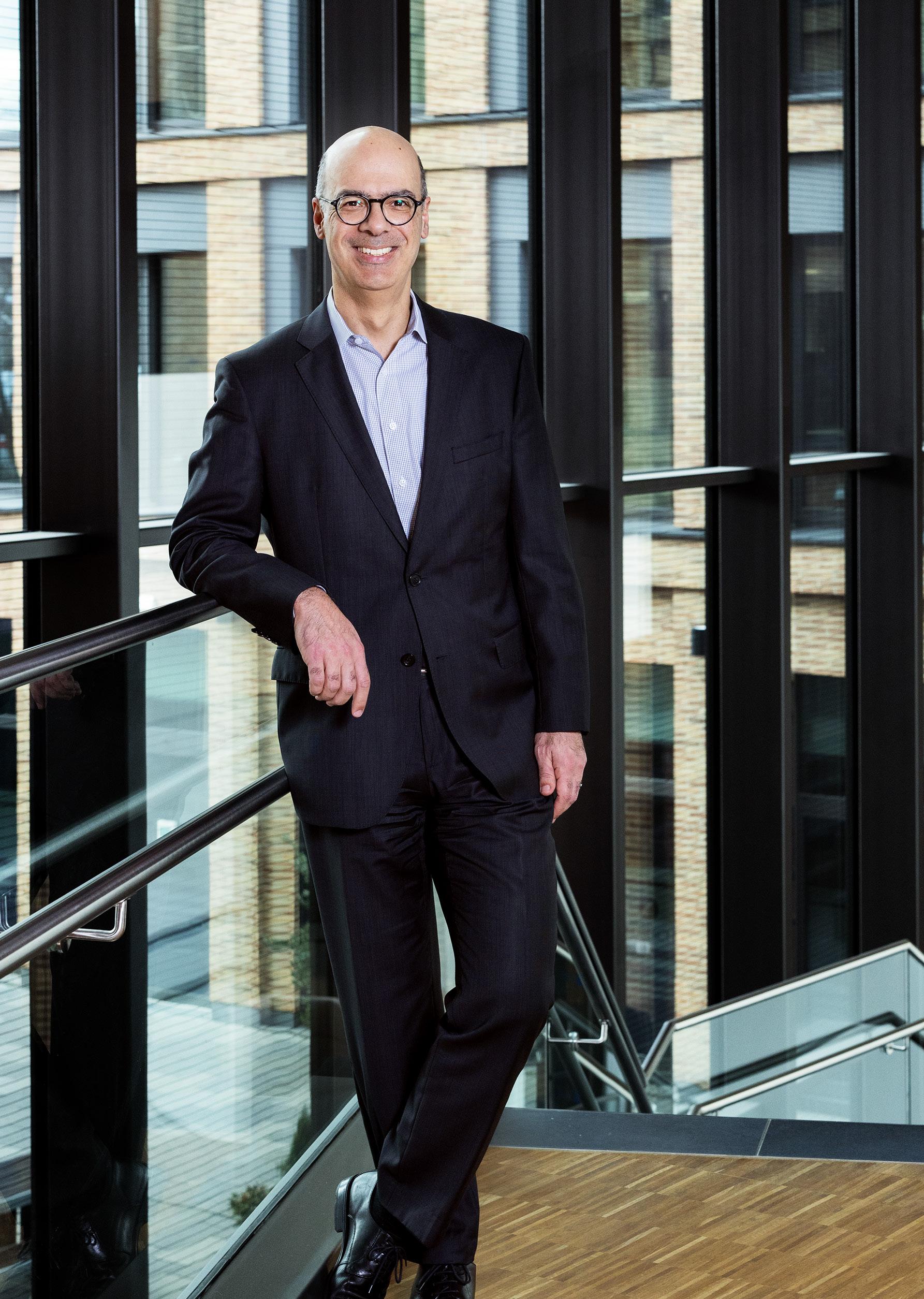
 Jaime Paiva, Head of Procurement and Vendor Management, EMEA
Jaime Paiva, Head of Procurement and Vendor Management, EMEA
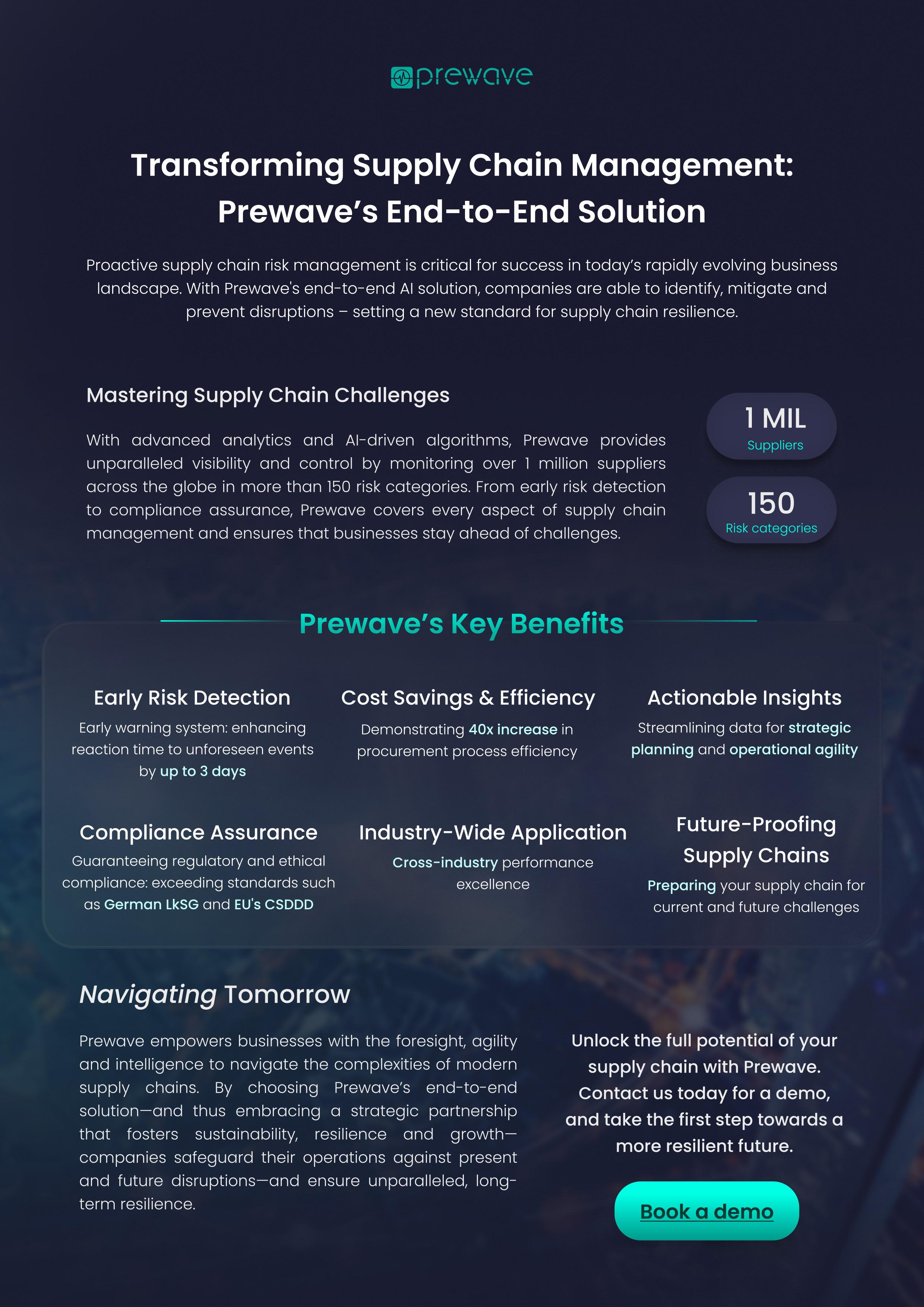

sacrifice on cost or quality and the process offers the added benefit of generating positive social impact as well.
“The data and insights from SEUK are clear: social enterprises generally have a very diverse ownership. Their stats demonstrate that typically, the diversity of social enterprises is much greater than regular businesses. As such Zurich’s work with social enterprises not only helps generate positive environmental and social impacts, but it also helps promote diversity in the business community as well,” summarises Chris.
Jaime highlights how the collaboration with WildHearts demonstrates how a

seemingly tactical or non-strategic project can evolve into a businesswide precedent, but also enrich the company culture in the process.
“From an anecdotal perspective, we have seen that working with social enterprises and generating positive social impact more broadly resonates deeply with our colleagues,” says Jaime. “The level of engagement that we have seen in our procurement team has expanded to the whole organisation. When we clearly show our people how their work can create a social impact beyond their targets or roles, we cultivate a human connection which elevates the whole endeavour.”
121
Since Zurich began its work with social enterprises in 2016 and published its Supplier Code of Conduct in 2021, in the past three years the company now proudly spends the majority of its managed procurement spend with suppliers that meet or exceed the key expectations of its Supplier Code of Conduct.
“Publishing our Supplier Code of Conduct was a major global milestone for us,” says Chris.
ILUNION is a unique model. A business and social model, the origin of which is to be found in the ONCE Social Group. It is an organisation that grows its over 20 lines of business each day while generating quality employment for people with a disability.
“Since we published it, we've been able to demonstrate via supplier self-assessments that our procurement spending is mostly with suppliers that meet or exceed those standards, and I believe that is down to various proactive steps that we've taken. For example, we've examples where suppliers with higher sustainability attributes have been prioritised in our sourcing decisions, and we've also been proactive in providing tools and resources to our suppliers
Zurich Social

New Social Enterprise UK venture supporting big businesses to buy from social enterprises across EMEA region through the Buy Social Europe programme.

Yunus Social Business social innovation organisation supports companies positive social impact their operations. We create your impact your procurement social procurement, programs that will business and society.
122
so they can elevate their position themselves.
“Arising from this momentum, we've set targets to complement our own net-zero strategy as a company. We've set targets for the percentage of our managed procurement spend that is with suppliers that have set science-based emission reduction goals and have their own net-zero targets in place. The reason we've taken that decision is because climate change is a prominent topic
Social Enterprises

for our organisation and the future of the insurance sector. So it's only right that we use what influence we have to drive change amongst our suppliers. We're taking proactive steps to meet those targets with the resources that we're providing, integrating these decisions into our sourcing processes end to end.

“In 2023, we were recognised by the Carbon Disclosure Project (CDP). They run a global questionnaire where companies are invited to Business is a leading organisation that companies to integrate impact through We can help you impact strategy, train procurement managers on procurement, and develop will benefit your society.
Agfoodtech of the circular green microeconomy of the regenerative agriculture chain. We transform the Future of Green Cities. Nonlinear chain and sustainable lifestyle platform, implementing the Eco Village concept in cities with technology and data.
WildHearts Office is a world-leading social enterprise, supplying print and office supplies. We use all profits to deliver social and environmental impact projects locally and globally. To date, we have transformed over 2 million lives.
123




“As an organisation, we're incredibly proud to talk about our work and the external recognition we have received”
provide information about how they integrate climate change into their respective businesses. It’s a transparent survey process which we participate in voluntarily. Because of the approach that we've taken with supplier engagement, having targets, being proactive on sustainability and providing resources and tools to minimise their impact, we earned CDP Supply Chain Leadership status. That put us in the top 8% of companies globally for our supply chain engagement strategies and we are one of only six insurance companies to secure this status.
“In 2023 we were also acknowledged with platinum status from the Catalyst Business Commitment for our social procurement efforts, which recognises that we've taken significant steps to promote opportunities for social enterprises in many different countries, not just the UK where it's maybe most
well-known, but in other markets as well.”
Jaime reiterates that the platinum status recognition from Catalyst Business Commitment is not an award, Zurich had to document and prove their credentials to secure the certification for this prominent acknowledgement.
“As an insurance company, if you look at the ESG risks that our supply chain presents, compared to other companies and sectors it's rather low,” says Chris. “But we haven't let that stop us and we've taken real proactive steps to address these topics. As an organisation, we're incredibly proud to talk about our work and the external recognition we have received.”
For more information about Zurich, visit zurich.com.
Turn over for 'ADDED VALUE' with Jaime and Chris.
125
Added Value
Jaime
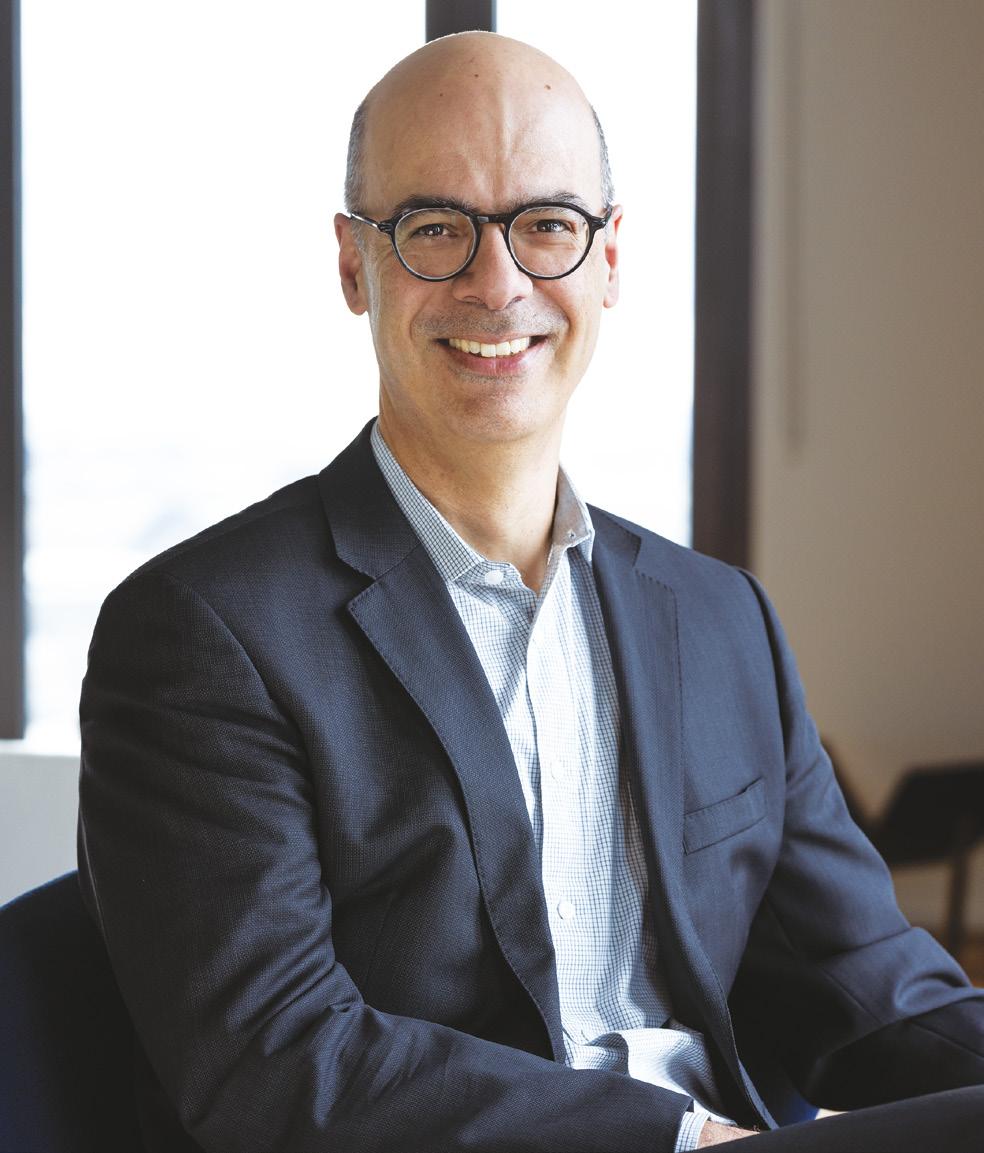
Connect with Jaime
Zurich attends conferences and events throughout any given year,

but Jaime has observed a positive shift in the topics of conversation in recent years.
“If we go back five years ago, you wouldn't see a lot of slots allocated to sustainability or social impact at all,” says Jaime. “This has changed completely. If you go to any of the big events you will see that most of the agenda now has been around ESG, social impact and so on. I think that evidences how important the topic has become, and I'm very proud to say that we have identified the need to cover this in our function before it became a hype topic, perhaps.”
126

Jaime also celebrates the work he is able to do with a movement called the Sustainable Procurement Pledge (SPP).
“The SPP was created four years ago to create a grassroots movement for procurement professionals, but led by procurement professionals as well. It's not a service, it's not a consultancy. Instead, its goal is to equip procurement professionals, especially the younger generation, with tools, knowledge and strategies to strive towards the vision of the whole movement: the goal is for all supply chains across the world to have embedded sustainable procurement practices by 2030.
“My involvement with this movement is on a pro bono basis. SPP is organised by chapters that can cover a region, topic or industry. I co-chair one of the chapters on supplier diversity, where social procurement is a major element.”
Chris
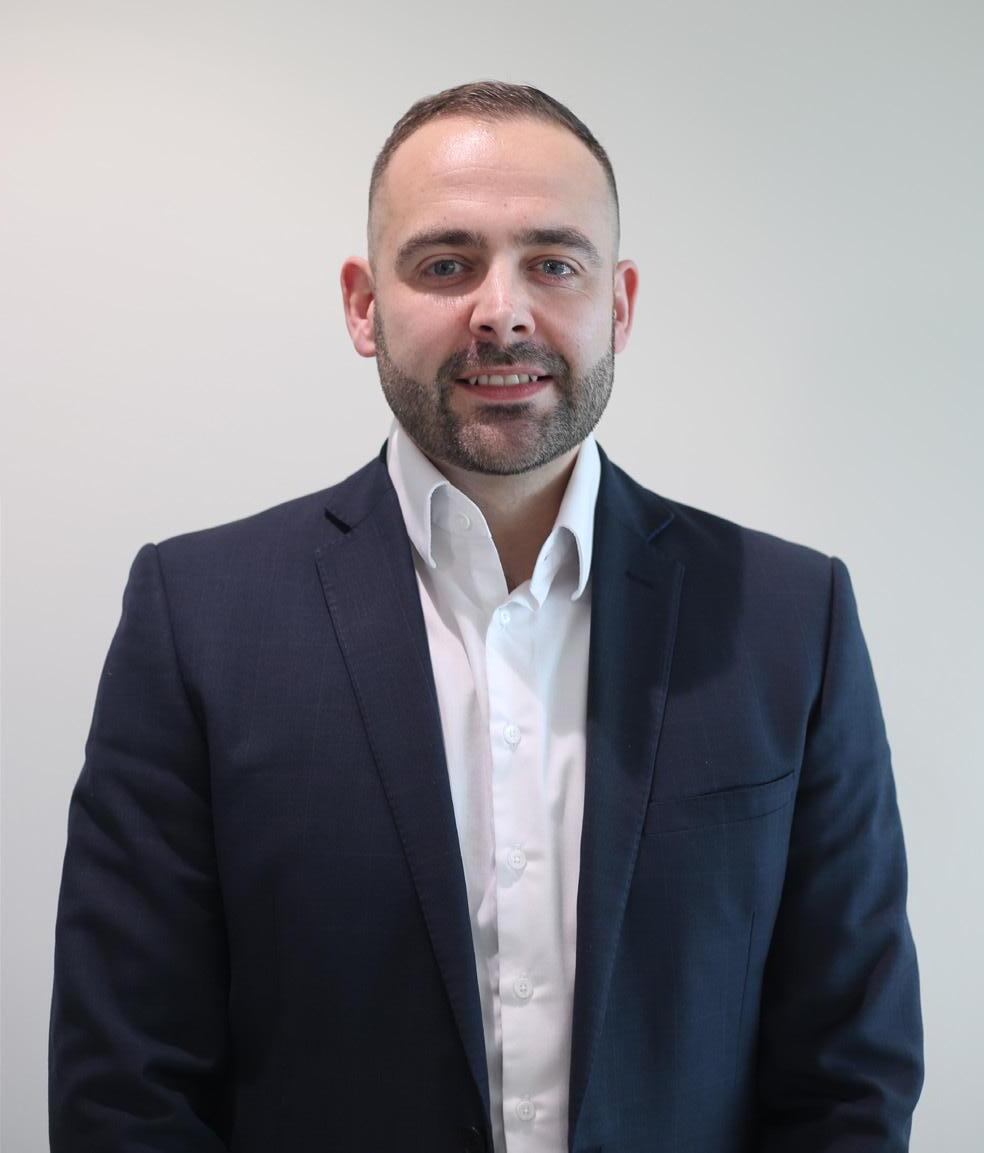
Connect with Chris
Chris recommends readers explore these free resources, some of which he highlights below:
The Global Risks Report 202419th Edition
127
Positive impacts with social procurement Supplier Code of Conduct Innovation & Technology at Zurich
In the Company of...
Welcome to our spotlight profile feature where we chat with the leaders and innovators in the supply chain, procurement and logistics industries.
For this month’s In the company of… we sit down with Tiffany MacKinnon Head of Global Supply Chain Services at HCL Technologies (HCLTech).

A brief summary of your role and what your company does.
HCLTech is a multinational IT service company headquartered in Noida,
India. It provides various services such as IT consulting, enterprise transformation and business process outsourcing.
I began working at HCLTech in 2016 in International Trade Compliance (ITC). I was responsible for the ITAR Program management and for originating global logistics strategies. I left ITC after two years to start the HCL Global Logistics organisation, and later moved to originate our Global Supply Chain Services (GSCS) organisation.
How did you start working in supply chain?
I interned as a rising senior at Clemson University for an international braking automotive company in Quito, Ecuador as my first supply chain role working in material management.
What has been the biggest highlight of your career to date?
Starting the GSCS organization at HCLTech.
PROFILE
Which emerging trend do you think will be most crucial in your industry in the next ten years?
The use of AI and predictive analytics within the end-to-end supply chain.
If you could spend a day in the life of another profession, what would it be and why?
Easy one, a veterinarian. I love animals, and have often wondered if my first love and college major had stuck, would I be a vet today? My first major at Clemson University was Animal Science with a pre-vet intention. I then changed to Psychology for a semester before landing as a double major in Spanish and Speech and Communication Studies, with an emphasis on language and international trade.
Outside work, what helps you feel like the best version of yourself?
I love nature. I love hiking with my husband and taking my pets to the woods. I hike on the Mountains to Sea trail here in North Carolina weekly, when I’m not watching my two children’s athletics: Baseball and Running. I love most sports


and all animals. I enjoy volunteering in animal rescue efforts locally where I live.
Before we go: what advice would you like to share with our readers?
Surround yourself with people whom you desire to be like. Allow them to sharpen you. Do so with sincerity and integrity while being true to yourself. Never stop learning, and always be kind.
www.hcltech.com
129
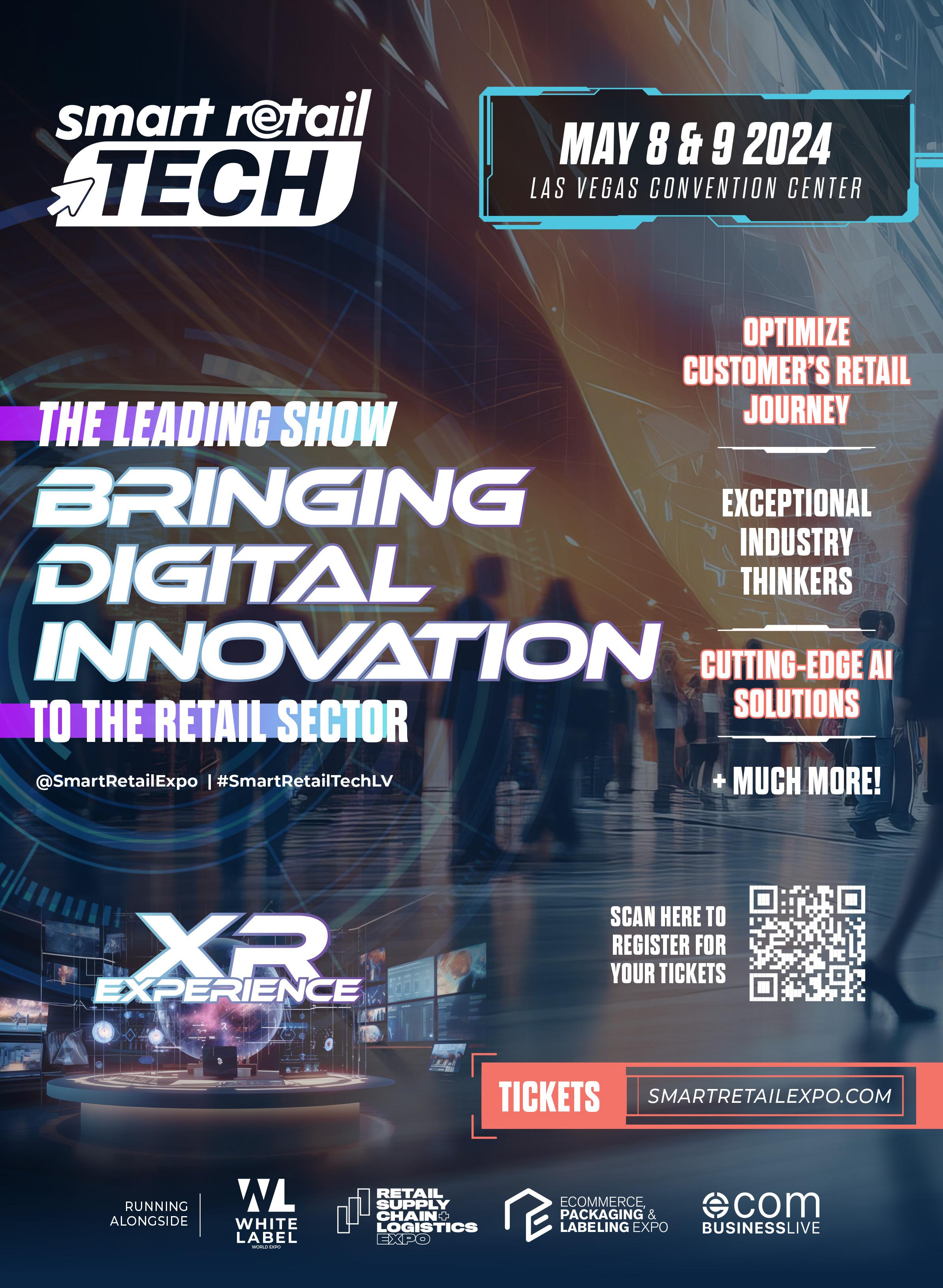


















































































































































































 Jaime Paiva, Head of Procurement and Vendor Management EMEA, and Chris Minter, Sustainable Sourcing Lead of Zurich Insurance Group on striving for sustainability in a service-driven industry.
Jaime Paiva, Head of Procurement and Vendor Management EMEA, and Chris Minter, Sustainable Sourcing Lead of Zurich Insurance Group on striving for sustainability in a service-driven industry.








 Chris Minter, Sustainable Sourcing Lead
Chris Minter, Sustainable Sourcing Lead






 Jaime Paiva, Head of Procurement and Vendor Management, EMEA
Jaime Paiva, Head of Procurement and Vendor Management, EMEA


















